Planning a 12-day Ireland itinerary can be a pain in the backside… So, we’ve done all of the hard work for you!
We’ve spent 25+ years travelling around Ireland and the itinerary below leans on that experience and the many mistakes we made along the way!
In a nutshell, this 12-day itinerary:
- Has been meticulously planned
- Has an hour-by-hour itinerary for each day to save you time/hassle
- Follows logical routes that take you to hidden gems, tourist favourites and great pubs and restaurants
Who this itinerary will suit

Now, before you scroll down, take 10 seconds to look at the graphic above – each of our road trip itineraries have been tailored to specific needs.
This road trip is specifically for those of you:
- Starting in/near Dublin
- Using your own car/a rental (if you’re renting a car, read this Irish car rental guide – it’ll save you time and hassle)
- Looking to explore at a fast pace
- With a good level of fitness (i.e. it includes long walks and hikes)
- Remember, we have hundreds of different itineraries here if this one doesn’t suit you
An overview of this 12-day itinerary

Click here to see a high resolution map
The map above gives you a very high-level overview of where this route will take you.
It uses several bases (e.g. Dublin for 4 nights) and provides you with day-long road trips you can head off on, so you avoid having to change accommodation constantly.
Now, I’ll stop rambling on – here’s a day-by-day insight into each of the days below!
Day 1: Arrive in Dublin

Photos via Shutterstock
Day 1 of this 12-day Ireland itinerary is going to be very dependent on the time that you arrive into Dublin. If you need to rent a car, I’d recommend collecting one at Dublin Airport. While you won’t need it for the first day in the city, it’ll save you from having to go and collect one at a later time.
For this itinerary, we’re going to make an assumption that you’ve landed in the morning and are ready to explore from mid-afternoon.
Recommended accommodation in Dublin
- Budget: Abigail’s Hostel (Temple Bar), Jacobs Inn (central hostel) and the Generator Hostel (short walk from the city)
- Mid-range: Dublin Skylon Hotel (just outside the city), Wren Urban Nest (Temple Bar) and the Harding Hotel (very central)
- Luxury: The Merrion (St. Stephen’s Green – very central) and The Westin (just off Grafton Street)
Getting around Dublin + money savers
- Time savers: If you want to avoid walking where possible, it’s worth getting a ticket for the Hop On Hop Off Bus around Dublin. It goes to or near all of the main sites on this itinerary plus plenty more.
- Money saver: If you’re visiting the ‘main’ Dublin attractions, the Dublin Pass can save you €€€ (here’s how)
Stop 1: Lunch

Photos © Tourism Ireland
There’s plenty of great restaurants in Dublin that serve up a delicious lunch, but if you fancy a tasty bite in a lovely old-world-style pub, Neary’s just off of Grafton Street is hard to bate!
They serve simple dishes (like soups and sandwiches) that are packed with flavour and great value for money. Alternatively, Sprout and Co. on Dawson St. is also a great choice.
They have a range of hearty salad bowls, with good options for vegetarians and vegans.
Stop 2: Trinity College

Photos via Shutterstock
Now you’re all fuelled up, it’s time to head to Trinity College to see the Book of Kells, arguably the most famous cultural attraction in Dublin.
If you can, we highly recommend pre-booking your tickets online, as the queues can get really long (bordering on ridiculous!). This fast-track ticket allows you to dodge the queue and gets you into Dublin Castle, too!
Spend around one hour seeing the Book of Kells, walking around the exhibit, and taking in the beauty of the Old Library. After that, give yourself another 20 minutes or so to walk around the university campus.
Stop 3: The Ha’penny Bridge (via Temple Bar)
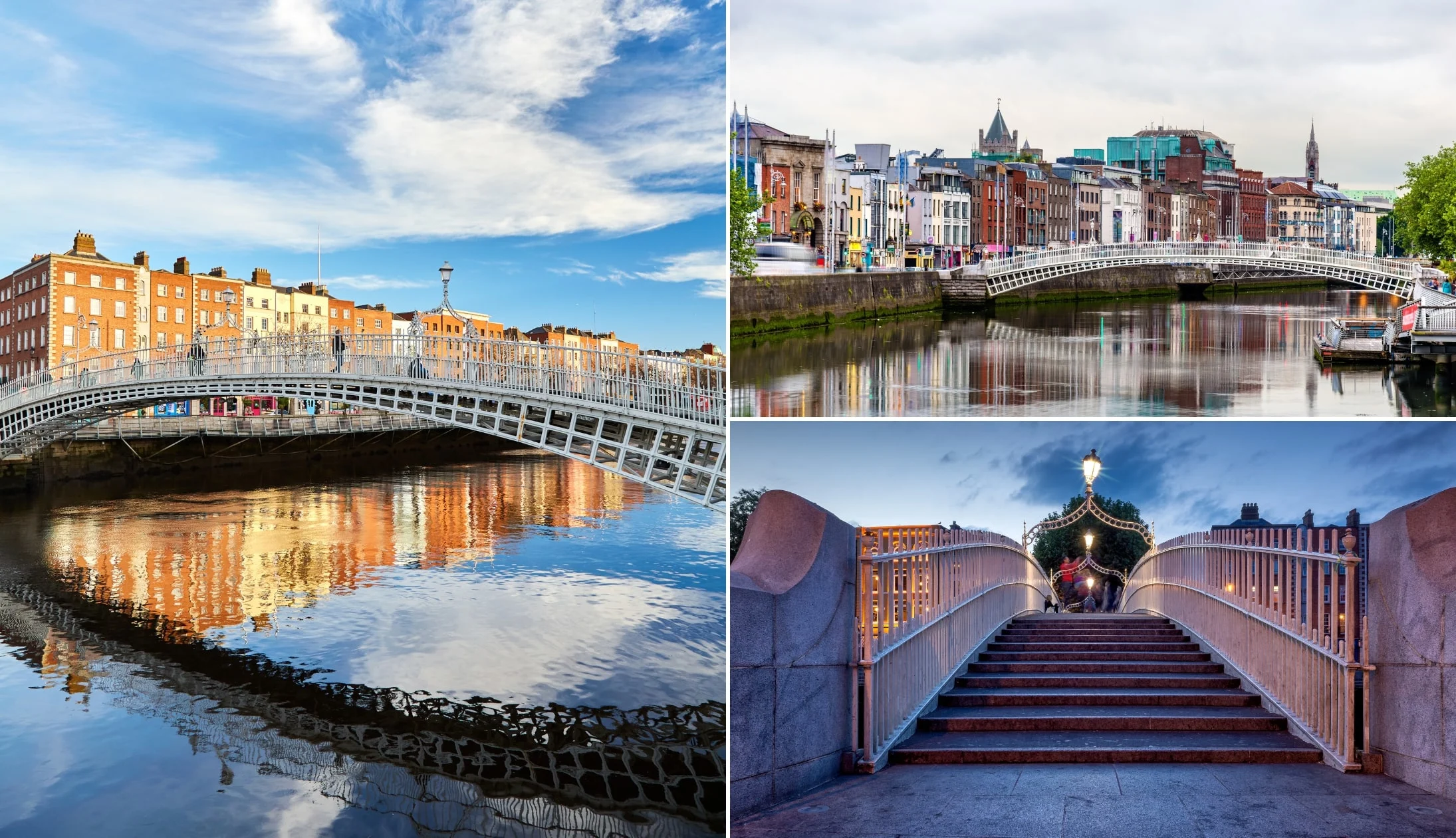
Photos via Shutterstock
The Ha’penny Bridge (officially named the Liffey Bridge) dates back to 1816 and was the first pedestrian bridge over the River Liffey!
It’s a seven-minute walk from the Trinity Gates, but feel free to take your time as you make your way through the lively streets of Temple Bar.
Now, Temple Bar can be a bit of a tourist trap. If you fancy a pint, here are several pubs in Temple Bar worth trying (the Palace is our go-to).
If you feel like an afternoon coffee, there are some great cafes in the Temple Bar area or on the other side of the river. Joe’s Coffee and Vice Coffee are two of our favourites across the water.
They’re both just a short stroll from the north side of the Ha’penny Bridge.
Stop 4: Dublin Castle
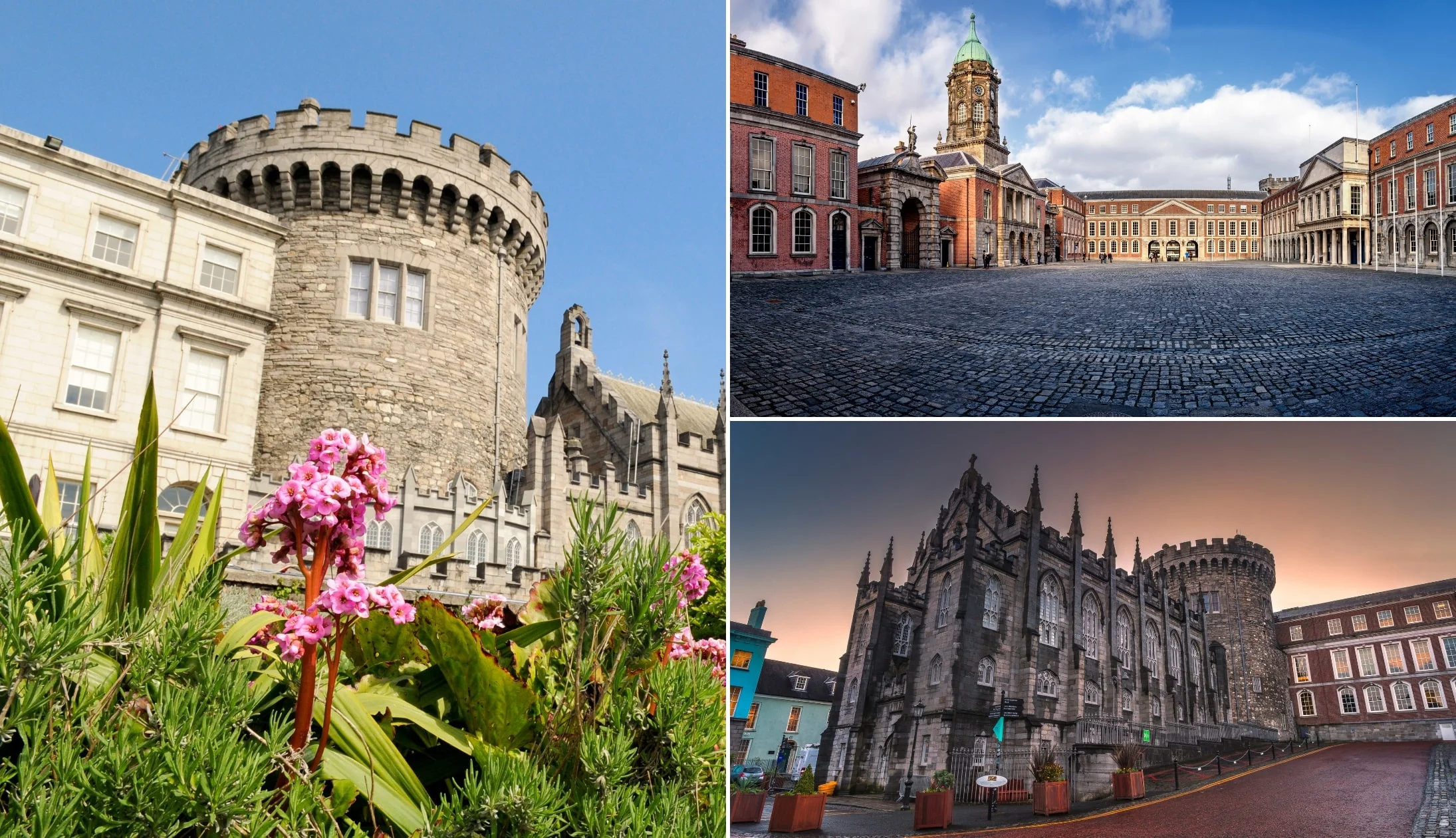
Photos via Shutterstock
Next on the itinerary is Dublin Castle. Nestled in the city centre, the castle dates back to the 13th century and was the seat of the English for over 700 years.
Today, it’s an important government complex and the site of Presidential Inaugurations and key State events. The castle is around 10 minutes from the Ha’penny Bridge on foot.
There’s no admission fee to explore the grounds, but if you want to have a look inside you’ll need to purchase tickets for either a self-guided tour or a guided tour.
Guided tours include access to the State Apartments, Exhibitions, Chapel Royal, and the Mediaeval Undercroft. Self-guided tours include access to the State Apartments and Exhibitions only.
Tickets for guided tours can be purchased on the day of your visit at the ticket booth.
Stop 5: Christ Church Cathedral
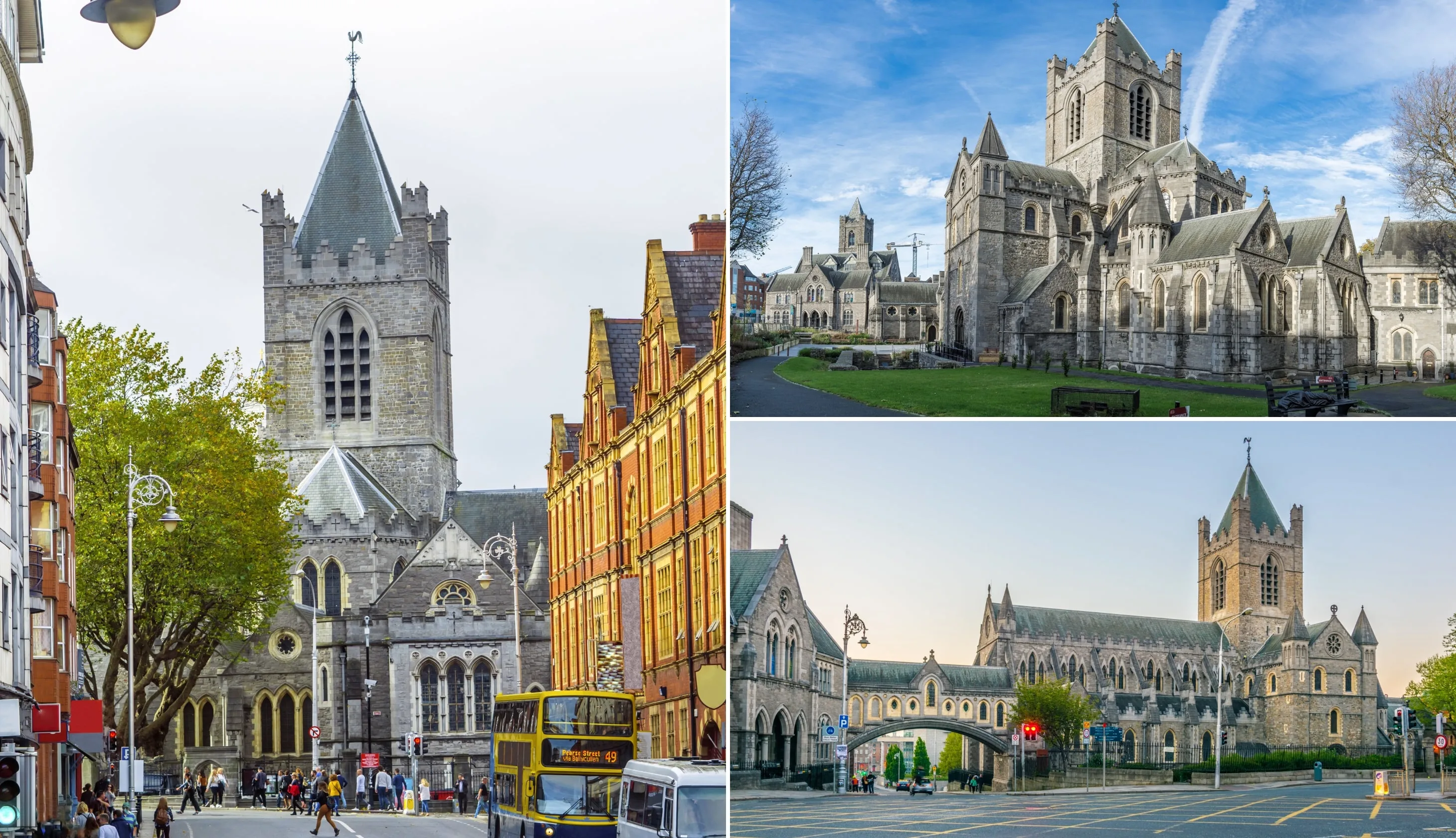
Photos via Shutterstock
Christ Church Cathedral dates back to the early 11th century when it was founded under Sigtrygg Silkbeard, a Norse King of Dublin. It was rebuilt later in stone, largely thanks to the first Anglo-Norman archbishop, John Cumin, in the late 12th century.
The cathedral is only a 4-minute walk from Dublin Castle and a really interesting place to visit. Some highlights are the restored crypt houses, Strongbow’s tomb, and the Treasures of Christ Church exhibition.
You can grab a ticket online here – these include an audio guide that comes in several languages, with three themes to choose from – ‘Power and Politics’, ‘Music and Spirituality’, and ‘Christ Church and the City’.
Self-guided tours with an audio guide usually last around one hour.
Stop 6: St. Patrick’s Cathedral

Photos via Shutterstock
St. Patrick’s Cathedral is just a short 7-minute walk from Christ Church Cathedral. The magnificent cathedral is one of the city’s top attractions as well as one of the few remnants of Medieval Dublin!
It dates back to the 12th century and is Ireland’s largest cathedral. As you may expect, St. Patrick’s Cathedral has a long and rich history. The cathedral has fallen into disrepair and has been damaged several times, most notably in the early 19th century.
During this period, it was restored by none other than Benjamin Lee Guinness (the first Lord Mayor of Dublin and owner of Guinness).
Stop 7: Teeling’s Distillery

Photos courtesy Teeling Whiskey Distillery via Failte Ireland
Once you’ve had your fill of St. Patrick’s, head on over to the Teeling Distillery, an 8-minute walk away. Founded by the Teeling family in 2015, the Teeling’s Distillery was the first new distillery to open in Dublin in over 125 years!
However, the family’s expertise span back generations, as they established a small craft distillery on Marrowbone Lane in 1782. Today, the new distillery stands just a few streets away from the family’s ancestral distillery.
They have several tours available, each of which has great reviews online. You can grab a ticket online before you go that includes a fully-guided tour of the distillery, followed by a tasting.
Stop 8: Dinner, drinks and live music
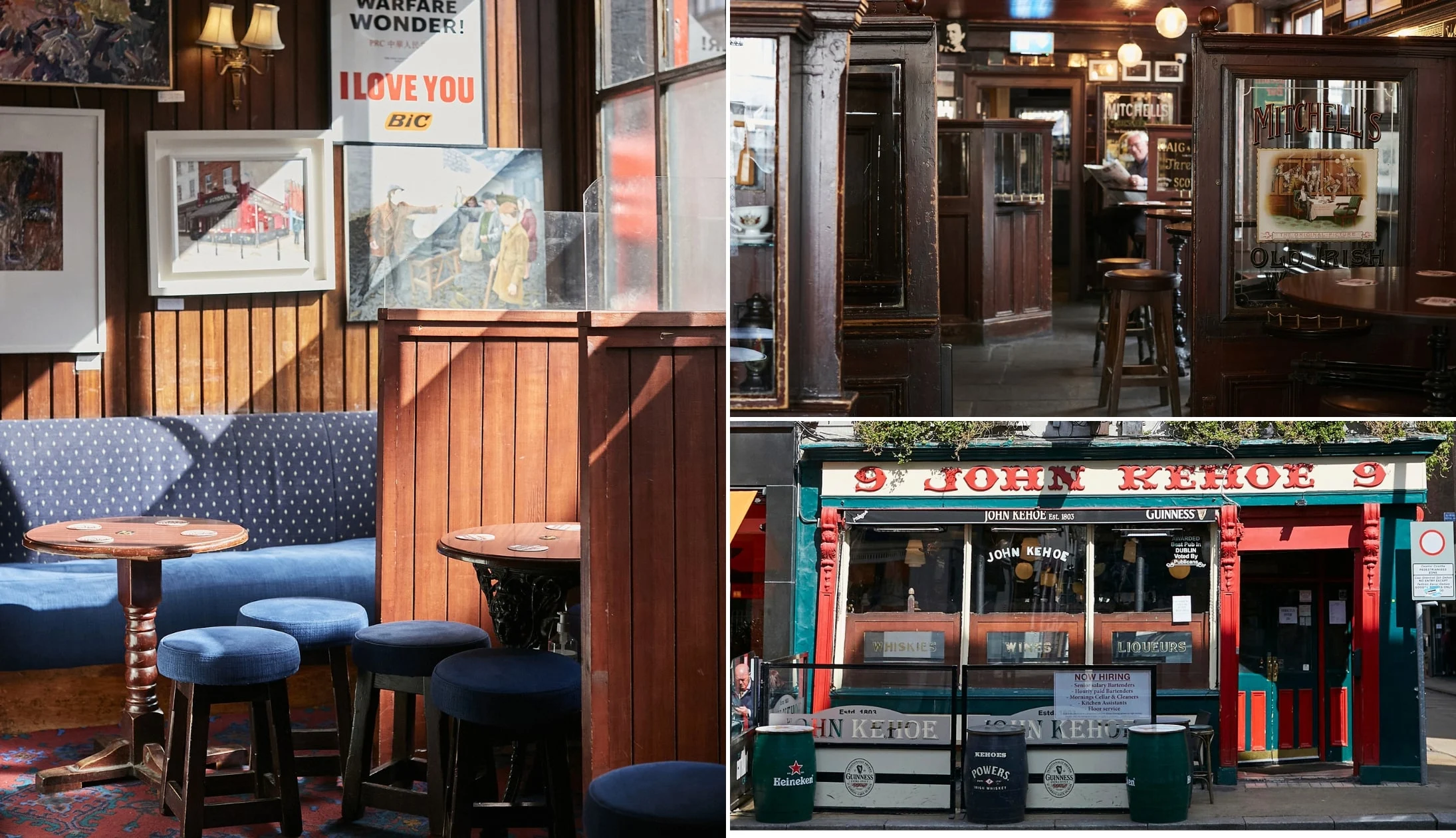
Different trad bars in Dublin. © Tourism Ireland
By now you must be getting hungry. Dublin has heaps of options for dinner, but we’ve got a couple of suggestions for you!
Our dinner recommendations
If you’re looking for something close by, Spitalfields is a stone’s throw from the Teeling’s Distillery. It’s a little bit pricey, but the atmosphere is great and the food is top-notch!
However, Spitalfields is 16+ only, so it’s not suitable for young families. Otherwise, check out The Bull and Castle across the street from Christ Church Cathedral.
Their menu has F.X. Buckley Steaks (renowned in Dublin), plus a great selection of local craft beers. The restaurant can get booked out pretty quickly, but you can always eat in the bar upstairs, which also has steak on the menu.
Live music and trad bars
If you want a taste of what Dublin’s best pubs are, see our detailed Dublin pubs guide. If you’re solely looking for places that do exceptional Guinness, see our guide to Dublin’s best pints.
If you fancy a bit of live music, there’s plenty on offer. Pipers Corner on Marlborough St. has some great tunes, with live music from 9pm every Tuesday to Saturday, and from 8pm on Sunday.
The inside has more of a modern feel, but you’ll be guaranteed authentic Irish music.
For the full experience, O’Donoghues Bar on Merrion Row has live music every night of the week. It’s about as traditional as Irish pubs get, with a brilliant atmosphere.
The Celt is another fantastic pub with live music every night from 9pm, although it’s not always traditional.
Day 2: More Dublin City sites

Photos via Shutterstock
It’s day 2 of our 12 days in Ireland itinerary, and there’s a full day of Dublin sightseeing ahead of you.
Now, although we’ve focused on the city for day two of this itinerary, you could easily change this day and explore the coast of Dublin.
For example, you could take a spin out to Howth Village, tackle the Howth Cliff Walk, grab lunch in the village and then take the train over to Malahide Castle.
Or, you can take it easy and stick to the city, like we do in the itinerary below.
Stop 1: Breakfast
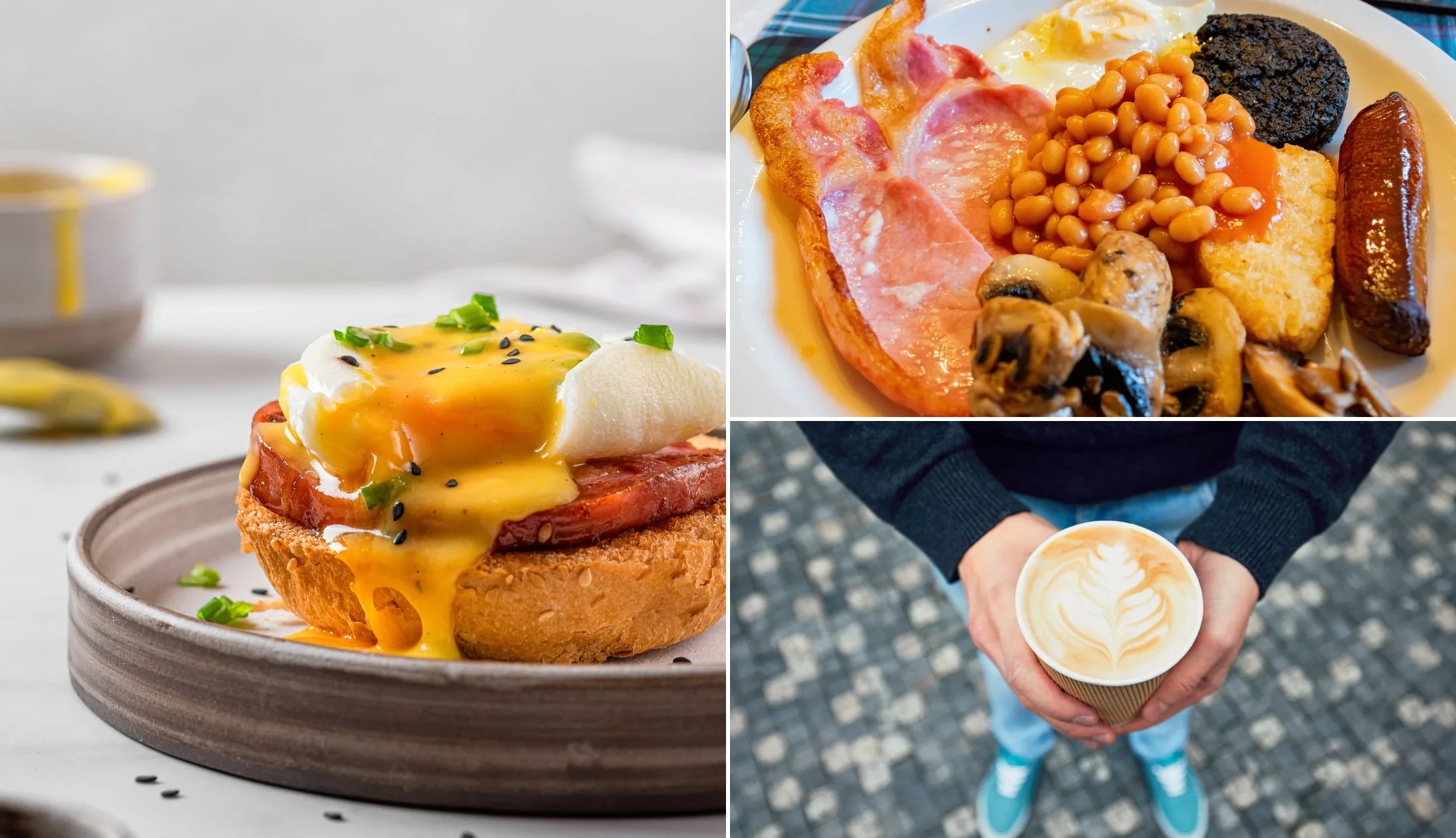
Photos via Shutterstock
It’s time for day 2, so grab some breakfast at your accommodation or grab a quick bite from a nearby cafe.
We recommend stopping by Cool Hand Coffee Roasters on Emmet Road. They’re a short 3-minute stroll from our next stop (Kilmainham Gaol), serving speciality coffees and a selection of pastries.
Stop 2: Kilmainham Gaol

Photos via Shutterstock
Kilmainham Gaol is an extremely popular Dublin attraction so you’ll need to buy tickets in advance as they tend to sell out quickly.
We recommend allowing an extra 30 minutes before/after your tour so you can visit the museum.
The gaol has a history spanning over 100 years, and during its time, it housed prisoners from the 1798 rebellion, the Anglo-Irish War, and the Irish Civil War.
Visitors will have an interesting insight into what imprisonment was like in the gaol, and the role it played in Irish history.
We’d recommend making your own way here via the Luas Red line from the city centre. You can get off at Heuston Station and take the 15-to-20-minute walk to Kilmainham Gaol.
Stop 3: Irish Museum of Modern Art

Photos via Shutterstock
Make your way to the Irish Museum of Modern Art (IMMA), a 10-minute walk away from Kilmainham Gaol. The museum is housed in the beautiful 17th-century Royal Hospital Kilmainham, tucked away on 48 acres of grounds.
The IMMA has a wide variety of exhibitions showcasing 3,500 modern and contemporary art pieces by local and international artists.
It’s free to visit (although some exhibitions may charge a small fee), and throughout the week there are free 30-minute tours – please check their website for up-to-date tour times.
If you’ve got the time (and the weather is in your favour), take a quick turn around the grounds to check out more artworks and the Formal Gardens.
Stop 4: St. Michan’s

Photos with thanks to Jennifer Boyer
St. Michan’s is a 25-minute walk away from IMMA, but if you’re feeling tired, you can head to Heuston Station and jump on the Luas towards Saggart.
Get off at Smithfield which is a stone’s throw from St. Michan’s and close to the Brazen Head, our recommendation for lunch! All in all, this takes 15 minutes.
St. Michan’s is an incredibly interesting church that dates back to 1686, although there used to be a Christian chapel on the same spot which was established as early as 1095.
Despite its modest size, St. Michan’s is packed full of history. In our opinion, the best way to learn about it is on their guided tour, which gives you loads of interesting info.
During the tour, you’ll get the chance to go into the 12th-century crypts and see real-life mummies that have been preserved for over 500 years; head into the vaults which were frequented by famous author Bram Stoker; and the magnificent organ which is one of the oldest still in use in Ireland.
Stop 5: Lunch
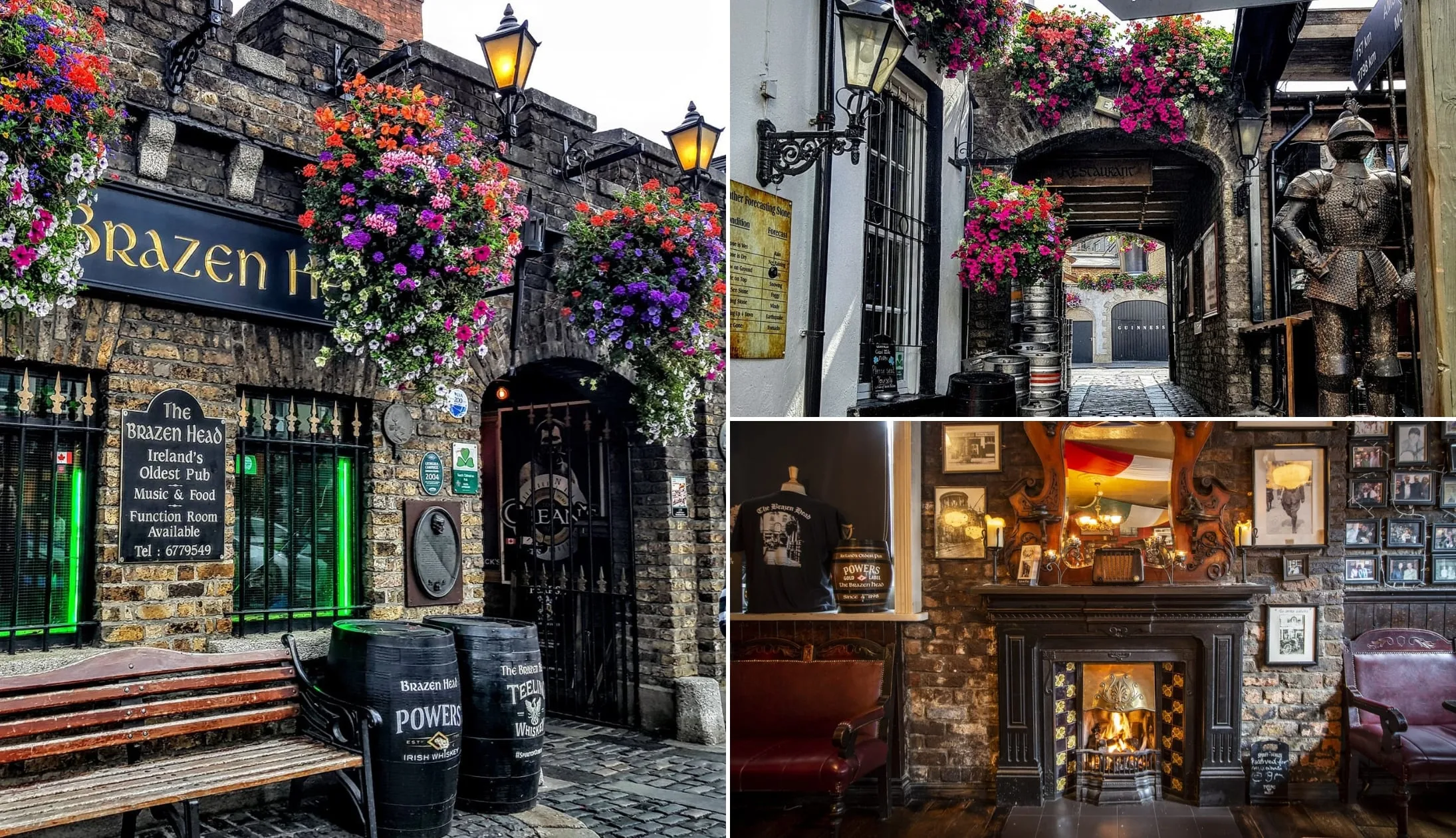
Photos via Shutterstock
There’s some very old pubs in Dublin, but one reigns supreme! When you finish up at St. Michan’s short 7-minute walk to the Brazen Head.
The pub is the oldest in Dublin and one of the oldest in Ireland, dating back to 1198. They serve traditional Irish pub grub and their Guinness beef stew is divine.
You’ve had a busy morning so kick back here, make your belly happy and set yourself up for the next stop of the day.
Stop 6: Guinness Storehouse

Photos © Diageo via Ireland’s Content Pool
Walk off your hearty pub lunch by taking the short 14-minute stroll to the Guinness Storehouse. It’s at St. James’s Gate, the home of Guinness, and there are several tours available.
We recommend the Guinness Storehouse Experience, a self-guided tour that takes roughly 90 minutes.
You’ll learn about Guinness’ history, its ingredients, and get to enjoy a pint of Guinness and one other Guinness beer (for ages 18+) whilst taking in the views of the Gravity Bar.
Stop 7: St. Audoen’s Church

Photos via Shutterstock
St. Audoen’s Church is a 14-minute walk from the Guinness Storehouse. While it’s well worth a visit, you won’t need too much time here.
The church dates back to 1190, making it the oldest Parish church in the city. However, parts of the church were added/restored at a later date, including the tower, which was damaged in 1596 following a huge gunpowder explosion nearby.
When you stop by, make sure to head to the main porch to have a look at the “Lucky Stone”, a late 9th-century gravestone that traders and merchants used to rub for good luck!
Stop 8: Dinner, drinks and live music

Different trad bars in Dublin. © Tourism Ireland
For your second night in Dublin, we’ve got a few recommendations for you to consider.
Our dinner recommendations
If you’re looking for something close by, Spitalfields is a short walk from the cathedral. It’s a little bit pricey, but the atmosphere is great and the food is top-notch!
However, Spitalfields is 16+ only, so it’s not suitable for young families. Otherwise, check out The Bull and Castle across the street from Christ Church Cathedral.
Their menu has F.X. Buckley Steaks (renowned in Dublin), plus a great selection of local craft beers. The restaurant can get booked out pretty quickly, but you can always eat in the bar upstairs, which also has steak on the menu.
Live music and trad bars
If you want a taste of what Dublin’s best pubs are, see our detailed Dublin pubs guide. If you’re solely looking for places that do exceptional Guinness, see our guide to Dublin’s best pints.
If you fancy a bit of live music, there’s plenty on offer. Pipers Corner on Marlborough St. has some great tunes, with live music from 9pm every Tuesday to Saturday, and from 8pm on Sunday.
The inside has more of a modern feel, but you’ll be guaranteed authentic Irish music.
For the full experience, O’Donoghues Bar on Merrion Row has live music every night of the week. It’s about as traditional as Irish pubs get, with a brilliant atmosphere.
The Celt is another fantastic pub with live music every night from 9pm, although it’s not always traditional.
Day 3: Wicklow’s Wonders
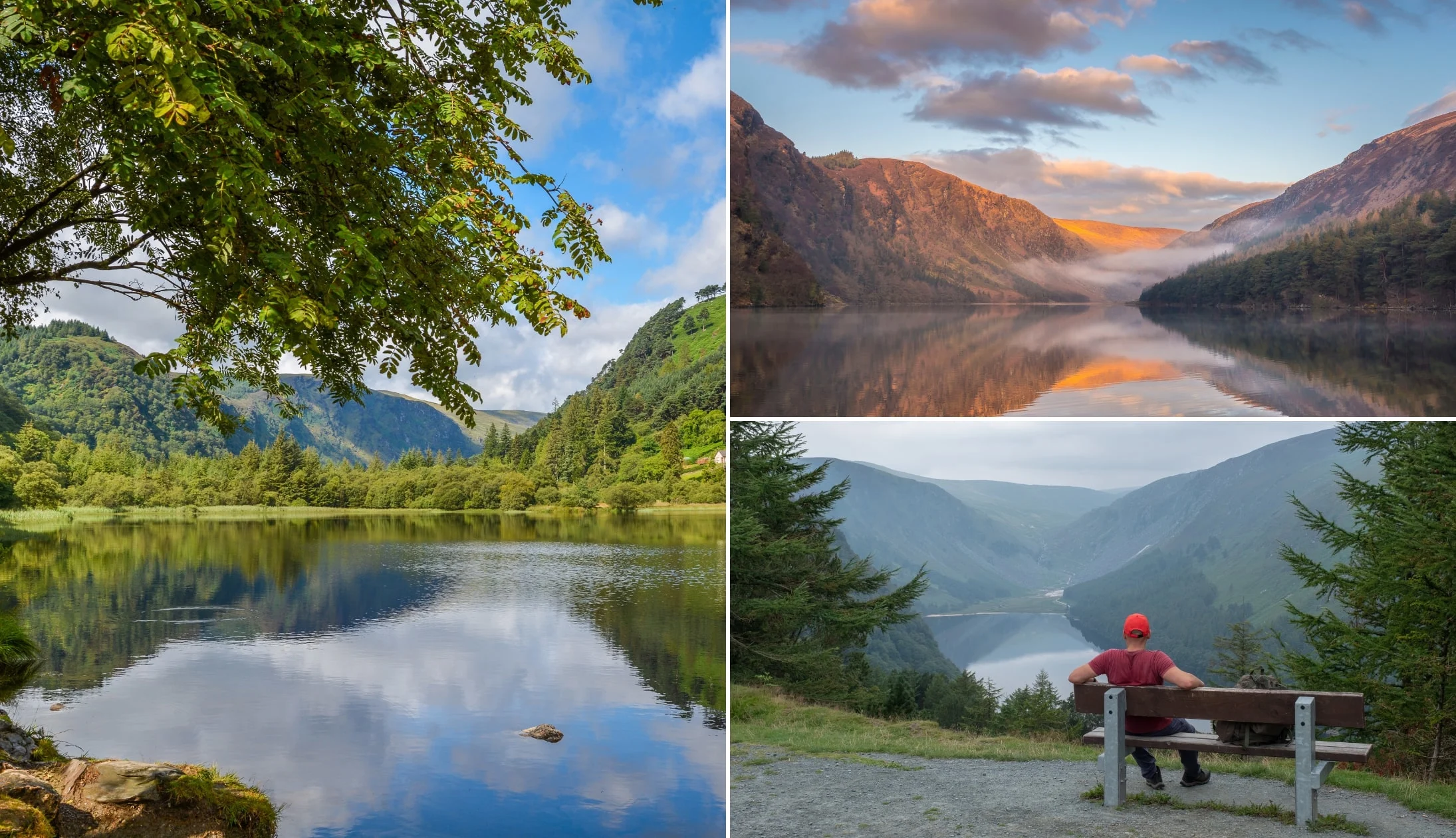
Photos via Shutterstock
On day 3 of your 12 days in Ireland itinerary, it’s time to put that rental car to use and head out of Dublin.
Today, you’ll be exploring Wicklow, also known as the Garden of Ireland.
Get yourself some breakfast either where you’re staying or at a cafe nearby. Then, double-check there’s a good amount of fuel in the car before heading to beautiful Wicklow via Sally Gap.
Stop 1: The Sally Gap Drive (multiple stops)
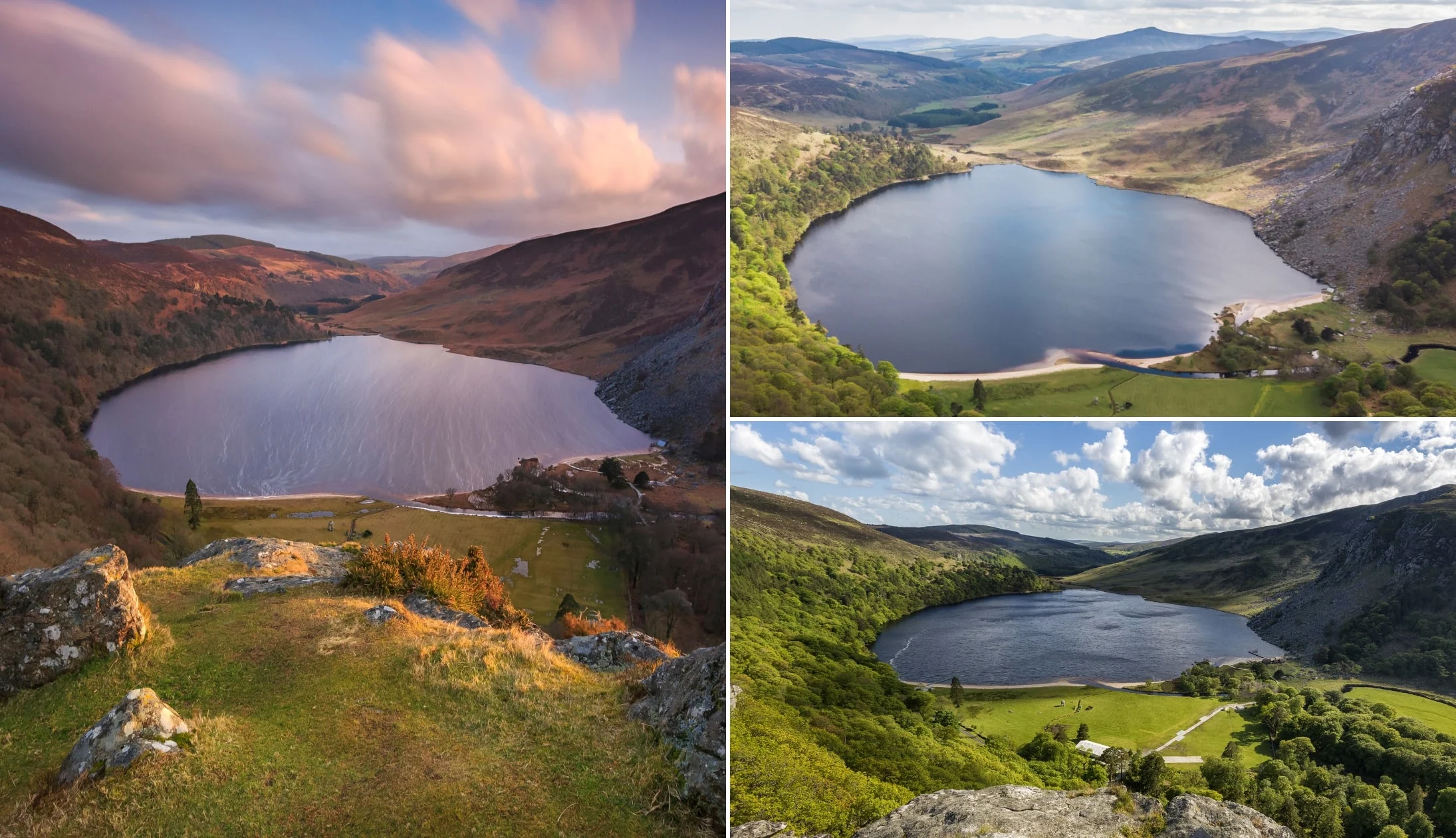
Photos via Shutterstock
The glorious Sally Gap Drive can’t be missed and you’re best off doing it either before you head to Glendalough, if you’re up early, or after, on your way home.
The reason for this is that you’re best off getting to Glendalough as early as you can, as it tends to get very busy at times.
When you do get to do the drive, aim for Lough Tay, first. Also known as Guinness Lake, Lough Tay is the jewel in Sally Gap’s crown!
From here, follow the winding road down, over the PS I Love You bridge and around until you reach a car park (on your right).
From here, very carefully walk around and get an eyeful of Glenmacnass Waterfall before heading on to Glendalough.
If you’re feeling up for a walk, we’ve got two for you to choose from. There’s the Djouce Mountain Walk and the Ballinastoe Woods Walk, both of which range from 2 to 2.5 hours in length.
Stop 2: Glendalough Visitor Centre and Monastic City
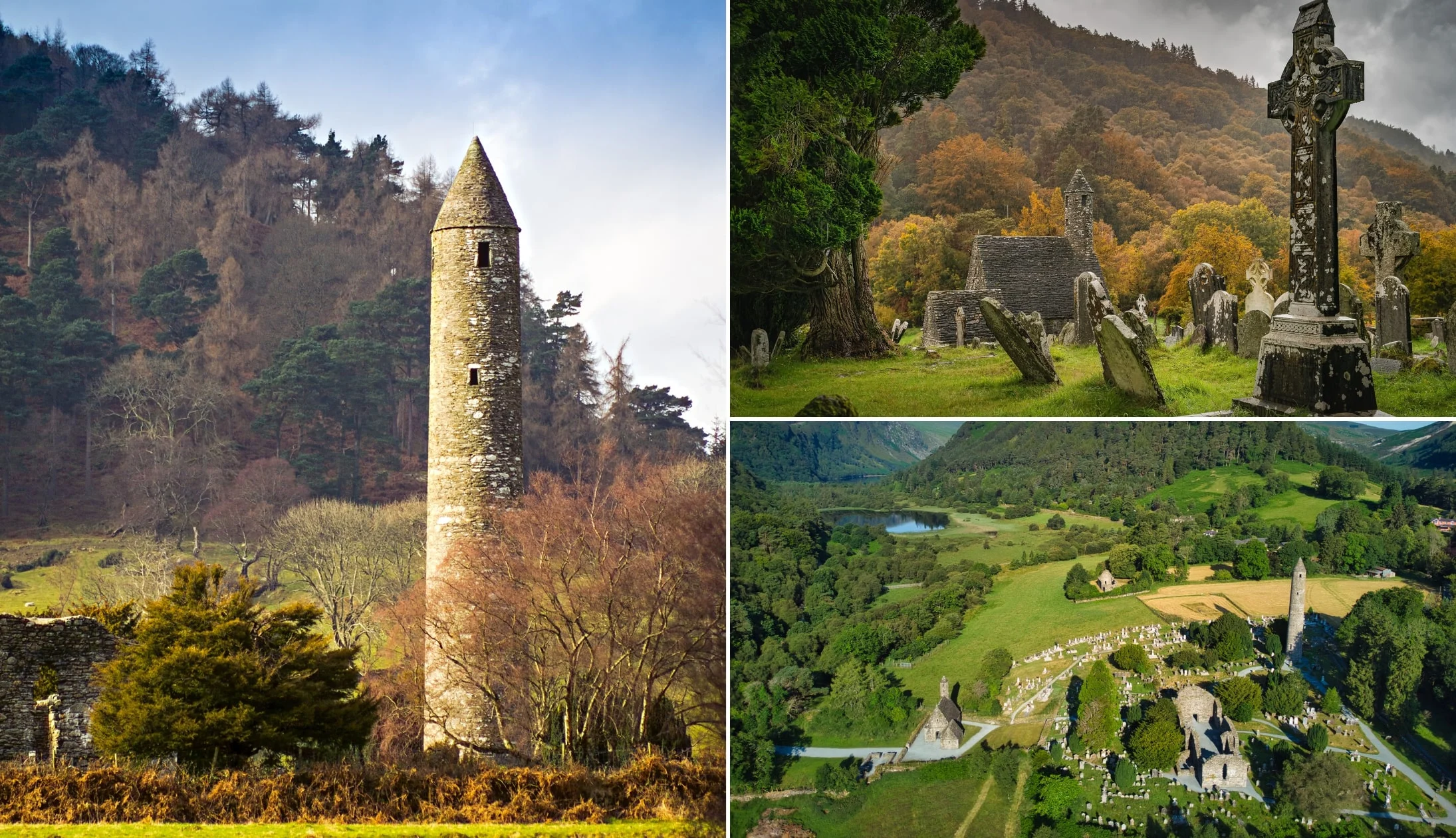
Photos via Shutterstock
Park up at the Glendalough Visitor Centre (the Lower Car Park – €4) and plan to spend between one and 30 – 45 minutes exploring the centre and the ‘Monastic City’ (your next stop).
The visitor centre is right next to the Monastic City, one of the most important monastic sites in the country. The city was founded by St. Kevin in the 6th century and went on to become one of Europe’s most famous religious sites!
At the centre, there’s a wonderful exhibition on the history of Glendalough and St. Kevin. There’s also an interesting 15-minute long audio and visual presentation about early Irish Saints and monasteries.
Now you’ve learned about the site, it’s time to take a 2-minute stroll to the Monastic City next door. Whilst the remains of the city are scattered all across the glen, many of the main ruins and features are within walking distance of the visitor centre.
These include the Glendalough Round Tower, one of the city’s most well-known landmarks. It stands 33 metres high and dates back almost 1000 years! Other attractions nearby include St. Kevin’s Church and the Glendalough Cathedral ruins.
Stop 3: The Spinc Walk
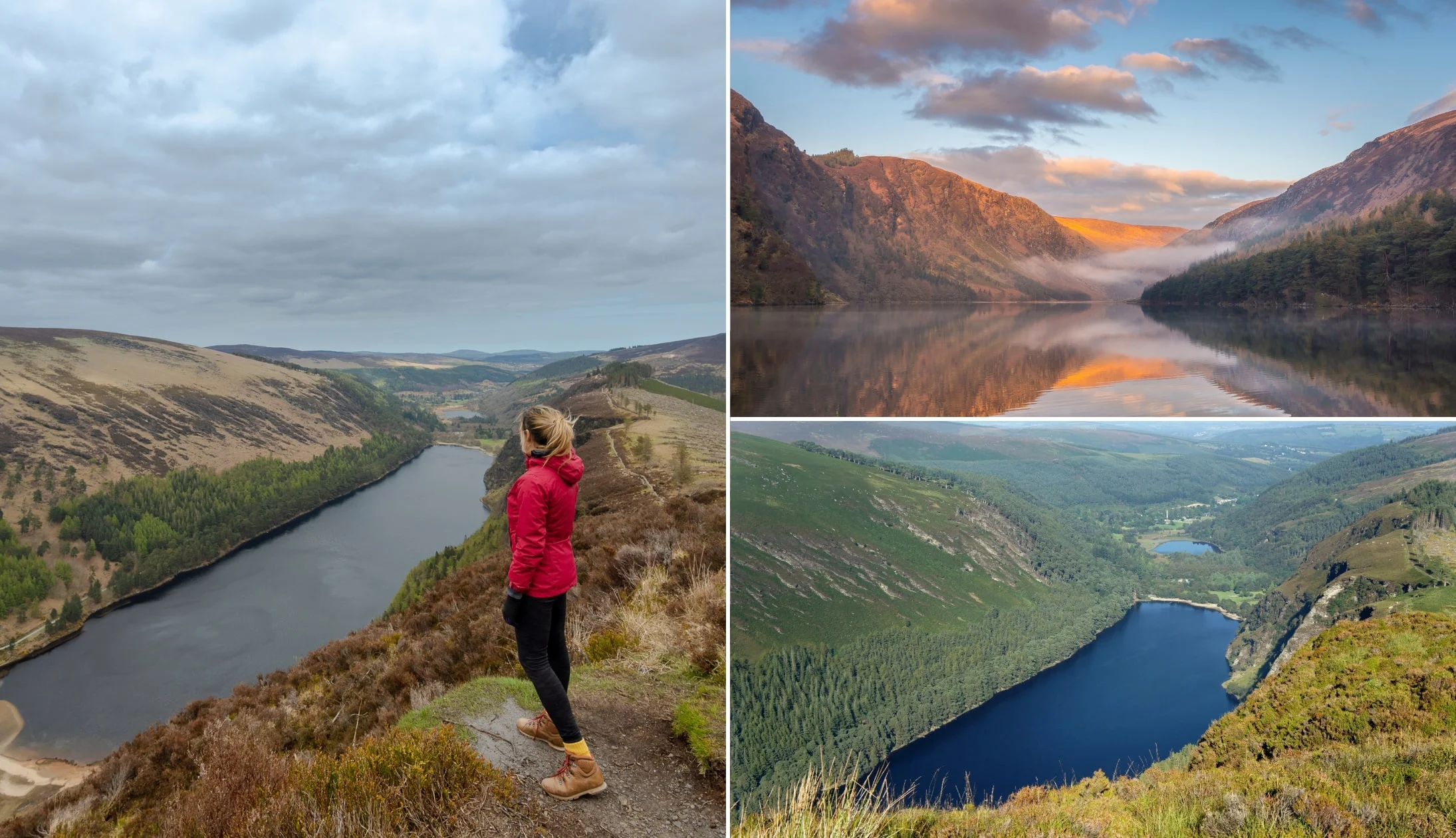
Photos via Shutterstock
The Spinc Walk is one of the finest trails in Glendalough. The Spinc Loop takes you on a 9.5 km ramble with some steep inclines and tricky paths.
There’s some steep climbing and over 600 steps near the start, but after that, it’s a little more relaxed, though there are some tricky downhill sections later.
It’s a moderate to strenuous walk, with a total ascent of 380 metres. Having said that, if you’re in reasonable shape, you should be okay and most people complete the walk in just over 3 hours.
Stop 4: Lunch at the Wicklow Heather

Photo left: The Irish Road Trip. Others: Via Wicklow Heather
We absolutely love stopping by the Wicklow Heather for lunch whenever we’re in Glendalough. The restaurant is in the heart of idyllic Laragh, with a historical interior and some lovely outdoor seating areas.
It’s only a 6-minute drive from the Upper Lake Car Park.
The menu has traditional Irish dishes, like comforting seafood chowder or hearty cottage pies, with an option for vegetarians and vegans.
Stop 5: Powerscourt Waterfall

Photos via Shutterstock
From the Wicklow Heather, Powerscourt Waterfall is around a 30-minute drive away. The waterfall stands 121 metres high, making it the tallest waterfall in Ireland! It’s a beautiful spot, with the water cascading down the rock face, surrounded by trees.
At the waterfall, you’ll find a dedicated car park, toilets, and in the summer, a refreshment kiosk selling drinks and snacks.
There’s a lovely walking route that takes around 30 minutes to complete, giving walkers nice views of the falls and surrounding parkland.
There are some small inclines, so make sure to put on some appropriate footwear.
Stop 6: Bray Seaside Stroll

Photos via Shutterstock
Hop in the car and drive 17 minutes towards Bray. The best place to park is at the Bray Council Car Park here. It’s right above the beach, so it’s just a short stroll to the sand.
Bray Beach is a sandy and shingle beach over 1.6km long. You can walk along the sand or along the promenade towards Bray Head and back.
Stop 7: Back to Dublin for the night

Different trad bars in Dublin. © Tourism Ireland
After a long (and hopefully enjoyable!) day of exploring, it’s time to say goodbye to Wicklow and head back to Dublin.
If you’re already feeling a little hungry, break up the journey by stopping at Johnnie Foxes for dinner. It’s a lively traditional pub serving up hearty Irish food and great pints.
They run a daily ‘Hooley Show’ with Irish dancing and music. You can buy tickets (which include a four-course dinner) on their website.
Johnnie Foxes is 15 minutes from Powerscourt House and another 40 minutes to Dublin, depending on traffic.
Or, if you head straight back to Dublin, here are some food and pub recommendations for you.
Our dinner recommendations
If you’re looking for something close by, Spitalfields is a short walk from the cathedral. It’s a little bit pricey, but the atmosphere is great and the food is top-notch!
However, Spitalfields is 16+ only, so it’s not suitable for young families. Otherwise, check out The Bull and Castle across the street from Christ Church Cathedral.
Their menu has F.X. Buckley Steaks (renowned in Dublin), plus a great selection of local craft beers. The restaurant can get booked out pretty quickly, but you can always eat in the bar upstairs, which also has steak on the menu.
Live music and trad bars
If you want a taste of what Dublin’s best pubs are, see our detailed Dublin pubs guide. If you’re solely looking for places that do exceptional Guinness, see our guide to Dublin’s best pints.
If you fancy a bit of live music, there’s plenty on offer. Pipers Corner on Marlborough St. has some great tunes, with live music from 9pm every Tuesday to Saturday, and from 8pm on Sunday.
The inside has more of a modern feel, but you’ll be guaranteed authentic Irish music.
For the full experience, O’Donoghues Bar on Merrion Row has live music every night of the week. It’s about as traditional as Irish pubs get, with a brilliant atmosphere.
The Celt is another fantastic pub with live music every night from 9pm, although it’s not always traditional.
Day 4: The Drive to Galway (Via Athlone)

Photos by Stephen Power via Ireland’s Content Pool
On day 4 of our 12 days in Ireland itinerary, it’s time to say goodbye to Dublin and head over to beautiful Galway.
The drive usually takes around two and a half hours, but you’ll be stopping in historic Athlone to break up the journey and do some sightseeing.
We’ve got a few recommendations on where to stay in Galway. They’re all in the heart of the city, with different options to suit your budget!
Recommended accommodation in Galway
- Budget: Feeney’s Audubon Lodge (in Salthill outside of the city by the sea) and Corrib View Guesthouse (a 45-minute walk from Eyre Square)
- Mid-range: Balcony House B&B (10-minute walk from Eyre Square) and Ash Grove House (gorgeous guesthouse near Galway Cathedral)
- Luxury: The G Hotel (luxury hotel in the city) and Glenlo Abbey (one of Ireland’s top hotels – 15-minute drive from the city)
Stop 1: Athlone Castle
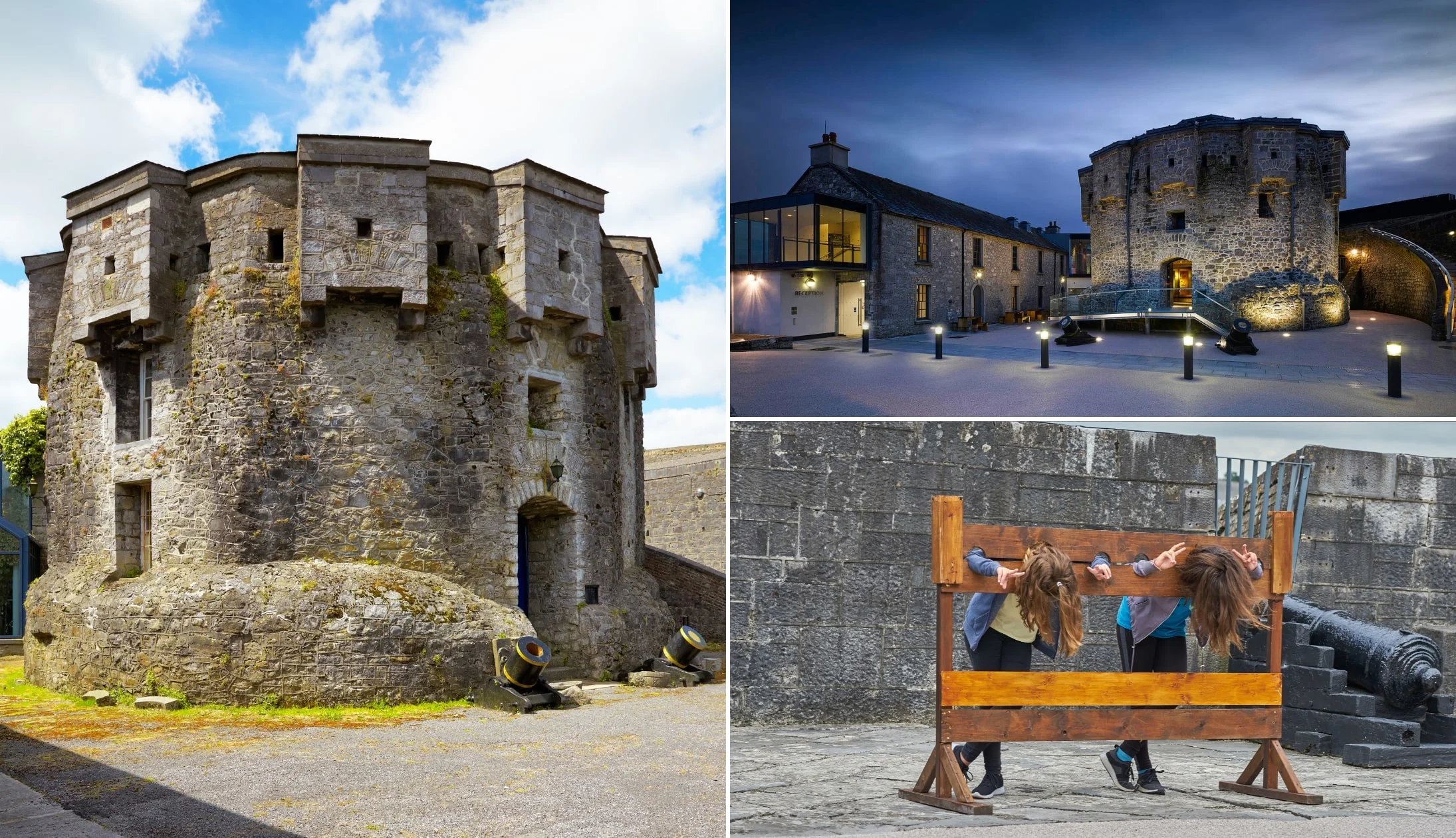
Top right photo: Ros Kavanagh via Failte Ireland. Others: Shutterstock
Athlone Castle is in the centre of Athlone on the banks of the River Shannon. There are two public car parks around the castle, as well as plenty of street parking if these get full (see parking here and here on Google Maps).
The stone castle is in great condition and dates back to the 13th century. It was in a key strategic position for defending the Athlone river crossing and played an important part in the infamous Siege of Athlone.
The visitor centre is full of information about the castle’s history, with eight exhibitions.
Stop 2: Sean’s Bar
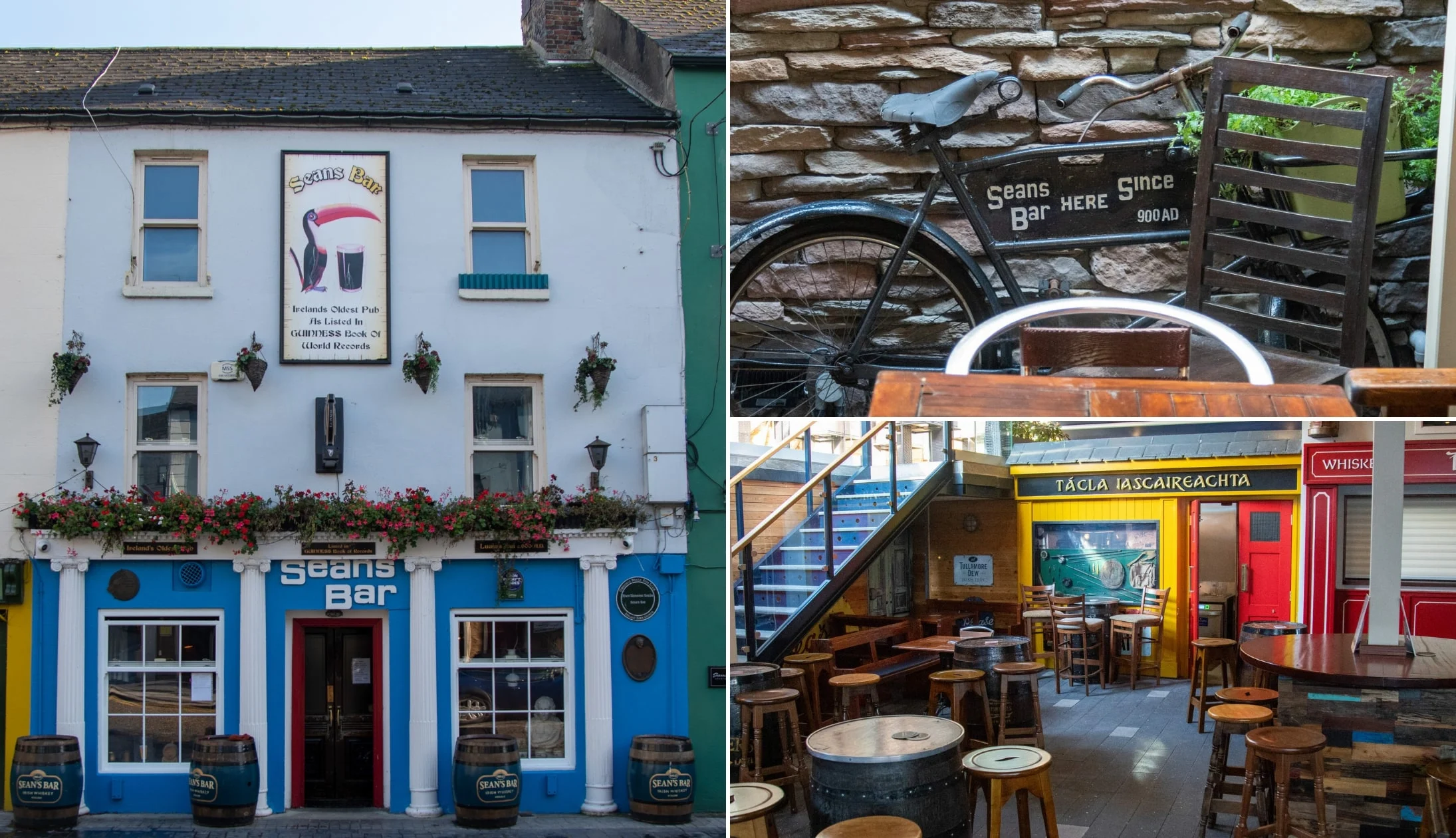
Photos courtesy Sonder Visuals via Ireland’s Content Pool
Sean’s Bar is right next to the castle and just a one-minute walk away. The pub is a must-visit when in Athlone, as it’s officially recognised by the Guinness Book of World Records as the oldest pub in Ireland (and possibly the world!).
It dates back to 900 AD when it was opened by a man named Luain Mac Luighdeach. Inside, it’s a treasure trove of history, plus, they serve a fantastic pint of Guinness.
Stop 3: Lunch

Photos via Beans & Leaves on FB
By now, you must be hungry, so it’s time to find somewhere for a bite to eat. Our favourite places for lunch in Athlone are The Left Bank Bistro (modern Mediterranean and Asian) and Beans and Leaves (all-day-breakfast and Irish cuisine).
However, the Corner House Bistro (gourmet sandwiches and international cuisine) is also well worth considering.
Stop 4: Check-in, get lunch and decide between walking/the bus
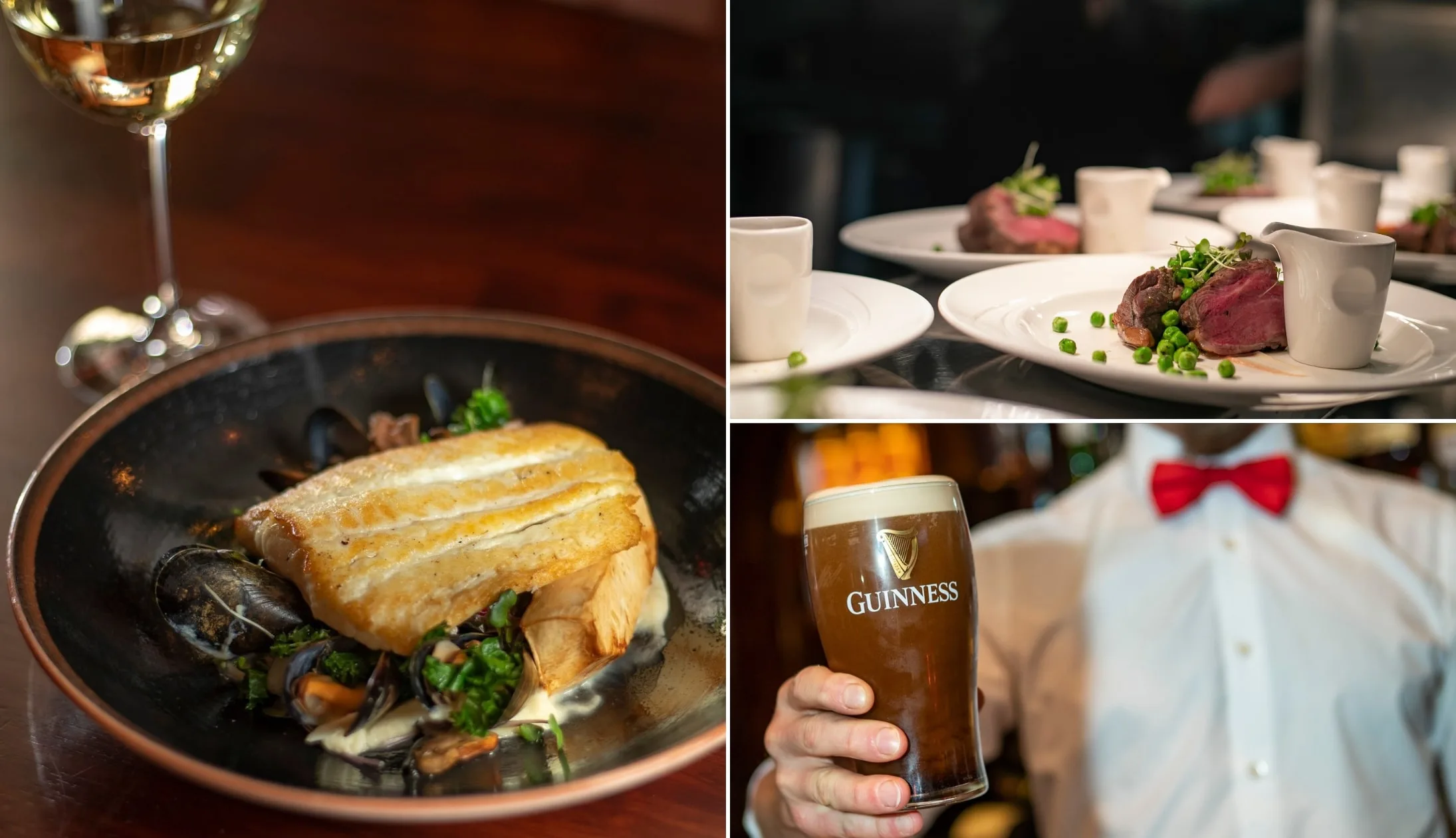
Photos via Blakes Bar Galway on FB
When you land in Galway, head to your accommodation, get checked in and head for lunch.
By now, you must be hungry. There are heaps of brilliant places for lunch in Galway, but if you don’t want the hassle of finding somewhere to eat, we’ve got a few suggestions!
We recommend Blakes Bar (traditional pub grub), Zappis (authentic Italian cuisine), or Tigh Neachtain (Irish and international cuisine).
Now, Galway is a very walkable city, but if it’s raining or if you fancy getting dropped to the ‘main’ attractions the hop-on/hop-off bus tour is well worth buying.
Regardless of which option you choose, here are some of our favourite sites in Galway City (we’ve listed them in a logical way for you to walk between them).
Stop 5: Galway Cathedral

Photos via Shutterstock
Galway Cathedral is wonderfully impressive both inside and out. It’s arguably the jewel in the Galway City skyline and you’ll cop it from many places as you stroll around the city.
Interestingly enough, it’s not as old as it looks, and construction on the building was only completed in 1965, earning it the title of ‘the last great stone cathedral to be constructed in Europe’.
The cathedral is free to enter but visitors are asked for a donation of €2 to help with the building’s upkeep.
Stop 6: Quay Street and the Latin Quarter

Photos by Stephen Power via Ireland’s Content Pool
Galway’s colourful streets are an absolute joy the ramble along regardless of the time of year.
If you’re walking from the cathedral, you’re a short stroll away from the Latin Quarter and Quay Street where you can have a nosey around.
These streets are alive with the buzz from tourists and locals alike.
Stop 7: The Hall of the Red Earl

One of our favourite places to visit in Galway (especially if it’s raining!) is the Hall of the Red Earl.
The Hall of the Red Earl is one of Galway’s most interesting sites. The ruins date back to the 13th century, with ties to the founding of Galway and the Anglo-Norman De Burgo family.
It was the first municipal building in the city, used for collecting taxes, hosting banquets, and sentencing criminals.
The Hall of the Red Earl was lost as the city grew until 1997, when the ruins were unearthed by archaeologists on behalf of the Office of the Public Works.
Today, you can walk amongst the ruins, view the artefacts, and learn about the hall’s history from the informative displays.
Stop 8: Galway City Museum
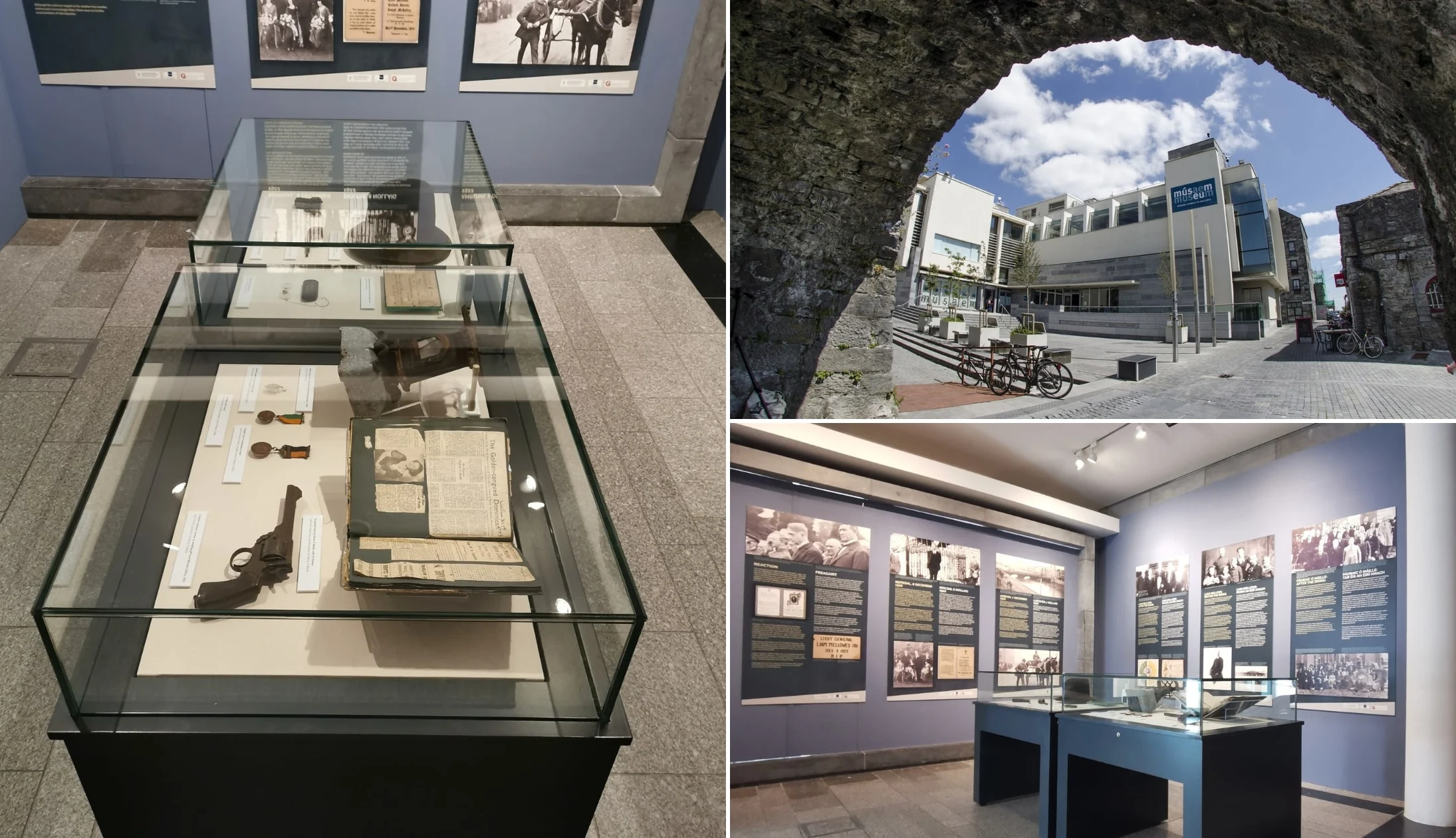
Photos via Galway City Museum on FB
The Galway City Museum is just a stone’s throw from the Spanish Arch. It’s one of the best places to learn about Galway’s history, culture, and archaeology, with collections telling the story of prehistoric Galway all the way through to 19th and 20th-century Galway!
The museum has three floors and seven long-term exhibitions, including The Wild Atlantic – Sea Science, and an exhibition on Pádraic Ó Conaire.
It’s free to visit, although donations are always appreciated.
Stop 9: Spanish Arch and the Long Walk
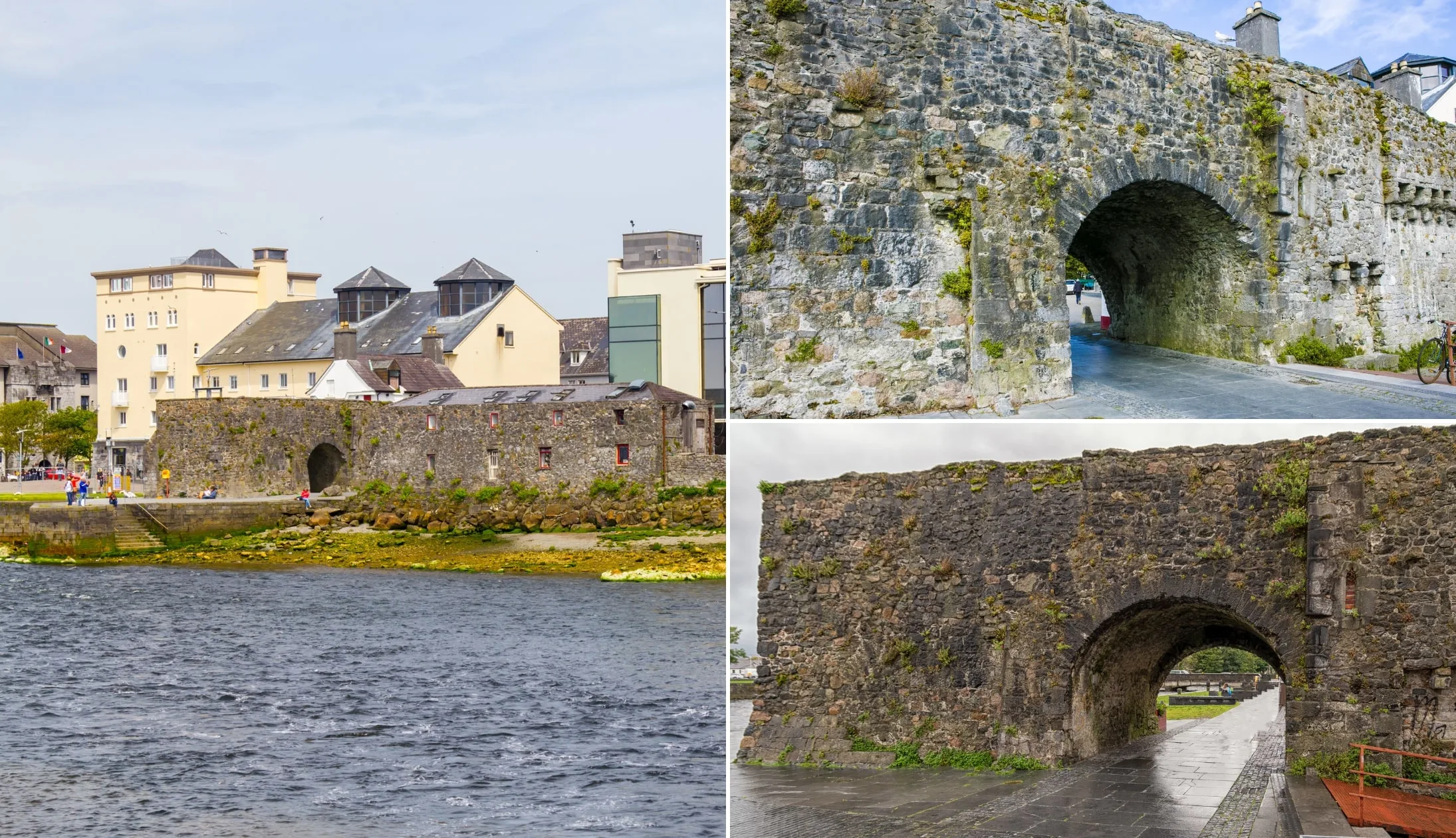
Photos via Shutterstock
The Spanish Arch is a must-see Galway attraction, dating back to Medieval times. The large stone arch is located on the outskirts of the city centre, overlooking the Claddagh (shore).
It originally housed soldiers who were keeping watch on the city’s Medieval walls. Its nickname is thought to come from the city’s merchant trade with the Spanish, whose ships would often be docked in the area!
From the Spanish Arch, you can take a short stroll alongside the water to what’s known as The Long Walk. You’ll likely have seen pictures of it (it’s a line of colourful buildings right on the water).
Stop 10: Dinner, drinks and live music
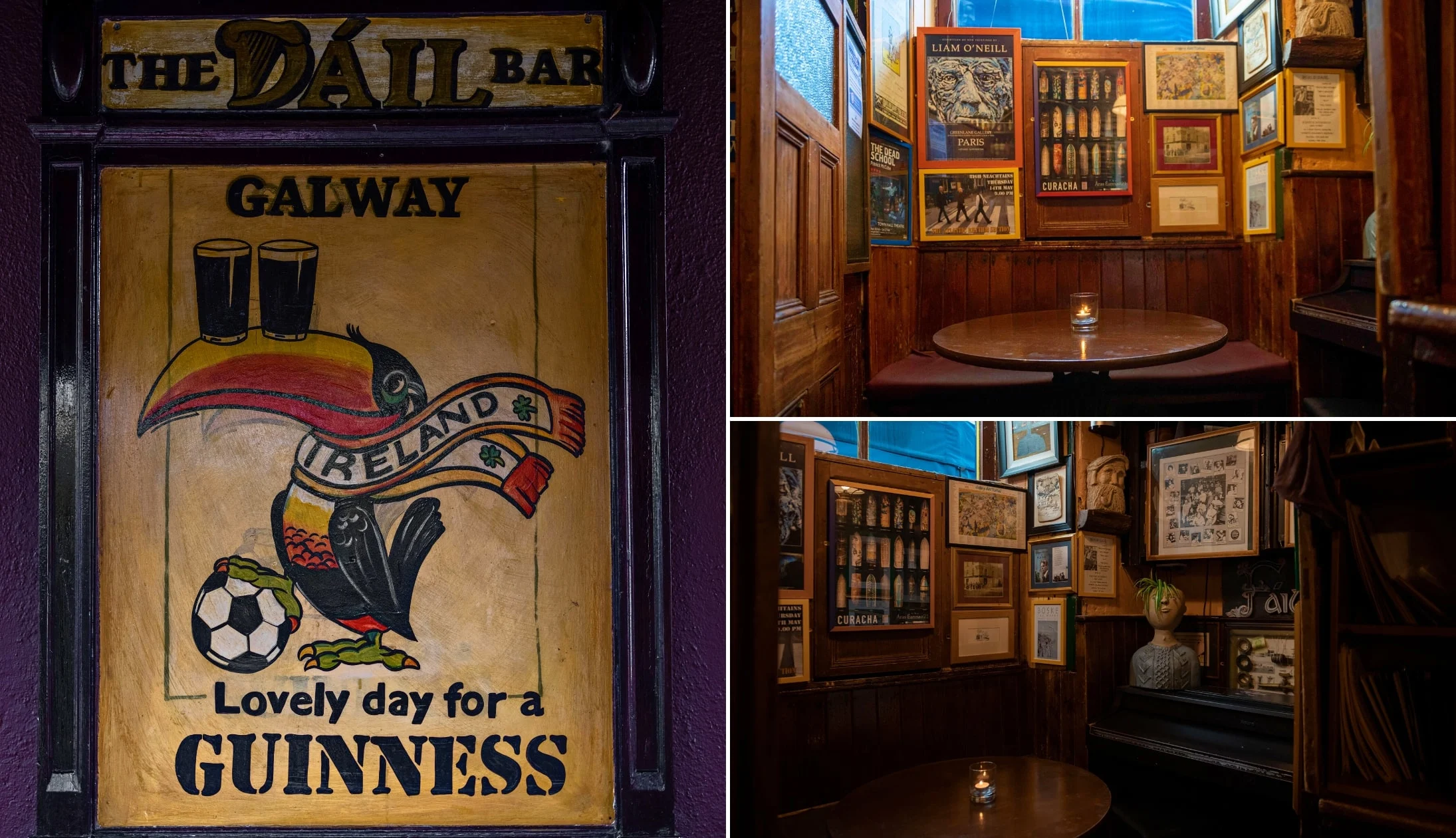
Photos courtesy Failte Ireland
You’ve had a busy aul day today, so it’s time to kick back and chill with food and, if you fancy, a drink and some live music.
Galway is a lively city regardless of the time of year. Here’s some spots worth checking out:
Our dinner recommendations
For dinner, we’ve got a few stellar recommendations: Ard Bia, The Quay Street Kitchen, and Dela. Ard Bia is absolutely fantastic, but you need to book in advance for dinner.
The restaurant has a quirky interior and serves beautifully presented modern dishes.
The Quay Street Kitchen has a great selection of vegan and vegetarian-friendly dishes, and Dela has modern Irish cuisine on the menu.
Live music and trad bars
There’s some mighty pubs in Galway. After dinner, head out for drinks at either Tigh Neachtain or The Crane. Both are traditional pubs with a great atmosphere.
Trad music is an integral part of the city, with heaps of options to choose from. Our favourite spots are Crane Bar (mentioned above) and Tigh Chóilí.
Day 5: Connemara and Cong

Photos via Shutterstock
On day 5 of our 12 days in Ireland itinerary, you’ll be heading to one of Ireland’s most scenic regions – Connemara, as well as Cong in Mayo – a picturesque village with a star-studded past.
There’s quite a bit to see and do today, so make sure to wake up with plenty of time so you can fit everything in! Bring a good pair of walking shoes and plenty of water as we’ve also got a challenging walk on the agenda.
Grab breakfast at your accommodation, or alternatively, check out Esquires or Jungle Cafe. Jungle Cafe is really unique and if you’re in Galway in the summer, sitting on the tropical patio is a must!
Stop 1: Scenic drive from Galway City to Clifden

Photos via Shutterstock
It’s roughly 75 minutes from the city to Clifden along the N59. This scenic drive passes right through the Connemara region, with amazing views the entire journey.
You’ll pass through the traditional village of Oughterard, then onwards to Maam Cross, passing by mountains, lakes, and moorland.
Once you’ve arrived in Clifden, make a quick stop to stretch your legs and grab a coffee before continuing onto the Sky Road. We recommend the Upstairs Downstairs Cafe or The Blooming Gorse.
Stop 2: Sky Road
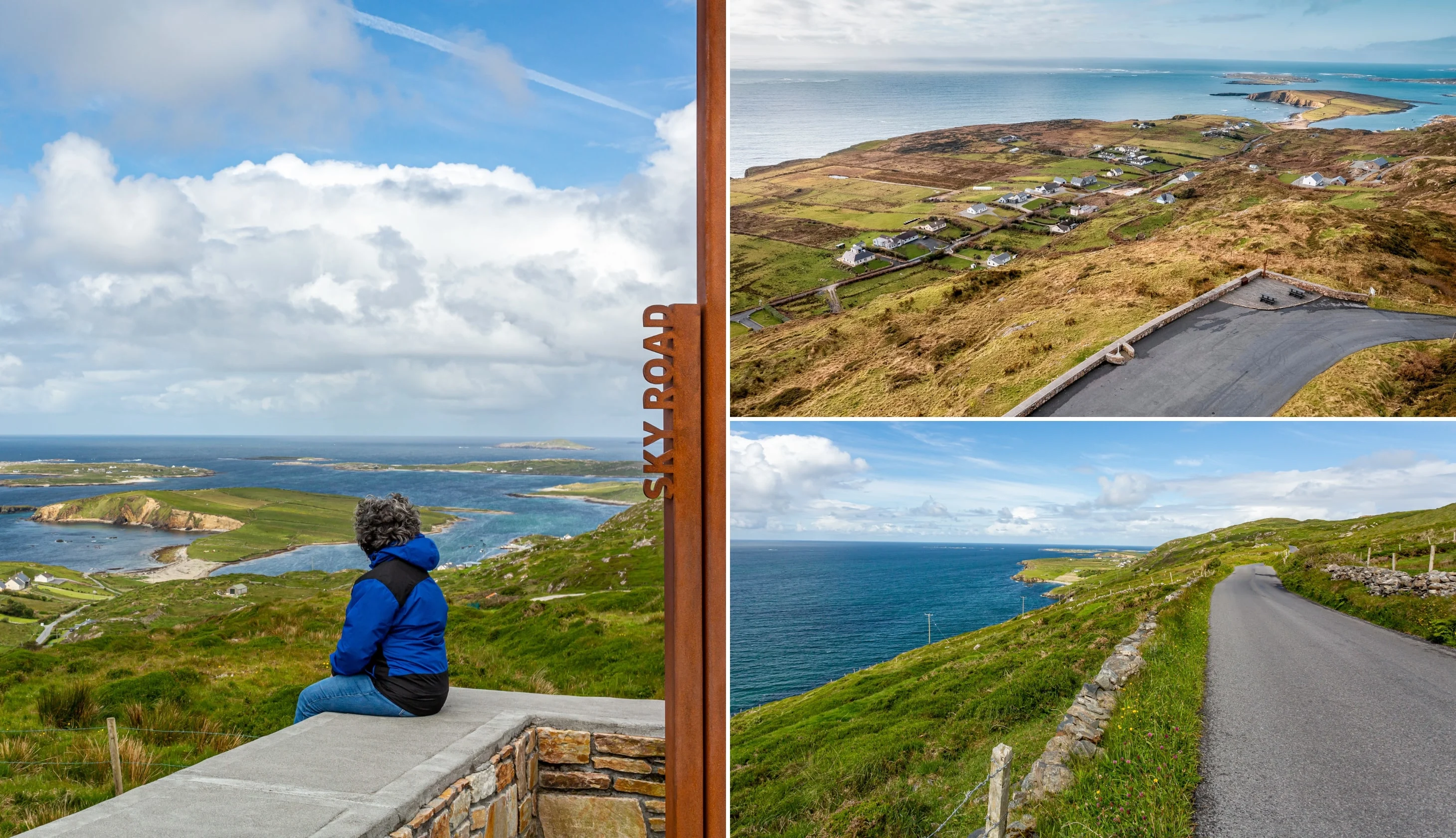
Photos via Shutterstock
The Sky Road is a breathtaking 16km loop. It begins in Clifden, making its way around the Kingston peninsula along a coastal road with stunning views. Along the way, the loop passes by Clifden Castle, a ruined manor house overlooking the water.
After the castle, the Sky Road deviates into two routes which join up again later, the lower road which has close-up views of the sea, and the upper road, which has views over the bay.
Some scenic stops along the way are Clifden Castle, the viewing point on the upper road, and Eyrephort Beach. We’d say two hours is a good length to spend on the Sky Road including stops, but this depends on what time you arrive in Clifden.
Stop 3: Lunch in Letterfrack

Photos via Veldons on FB
Once you get to the end of the Sky Road loop, instead of turning right onto the N59 back towards Clifden, turn left towards Letterfrack. This takes around 13 minutes. In Letterfrack, we recommended Clover Fox, Veldons, or the Hungry Hiker.
Stop 4: Diamond Hill
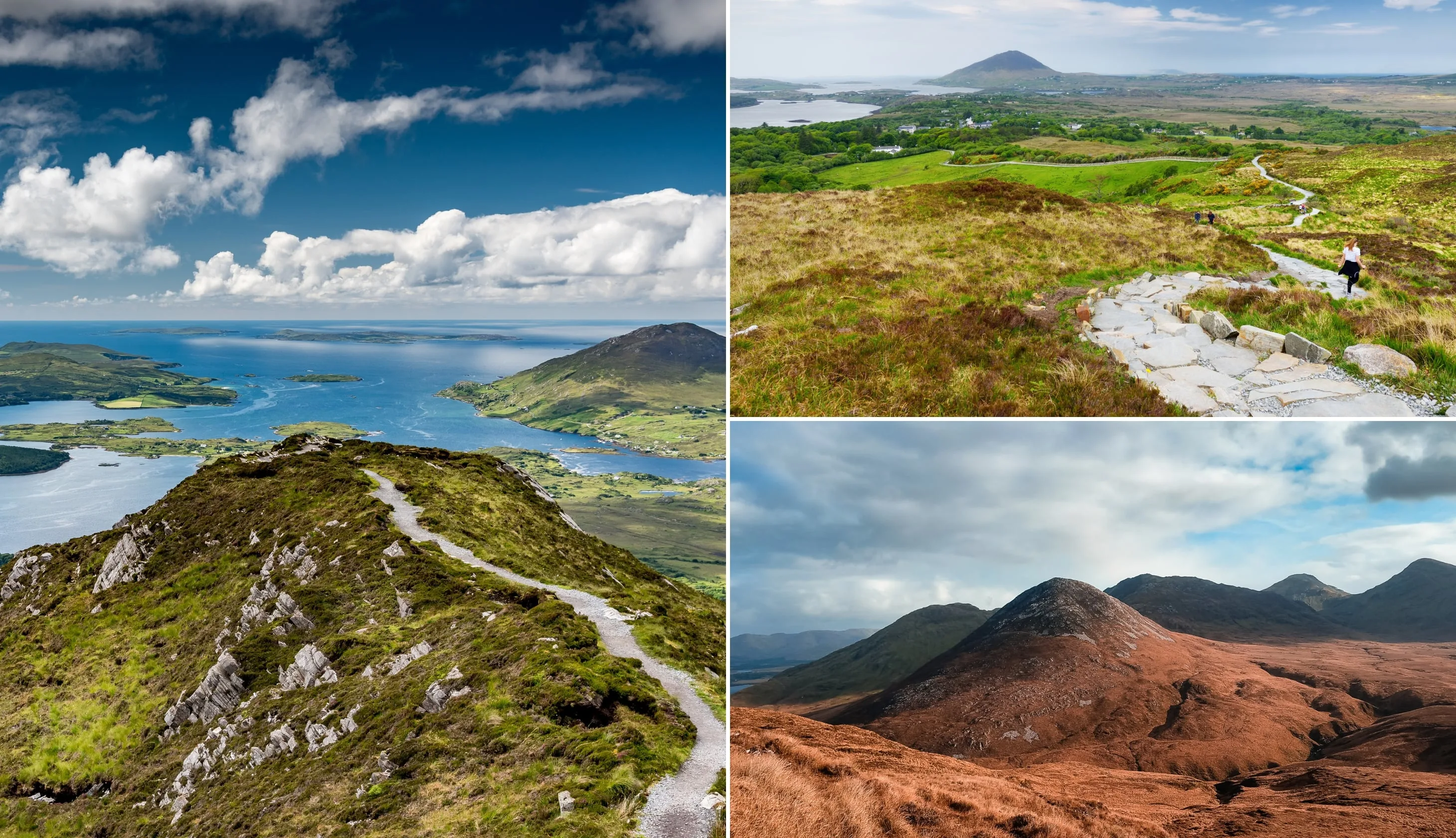
Photos via Shutterstock
Drive 3 minutes to the Connemara National Park Visitor Centre and park up. There are two Diamond Hill trails, but we recommend the Upper Diamond Hill trail, the longer of the two.
It’s a strenuous 7km walk that takes most people between two and a half and three hours to finish.
Although it’s a challenging route, you’ll be rewarded at the 445-metre summit with stunning panoramic views of Connemara and maybe even a wild goat or two along the way!
Stop 5: Kylemore Abbey

Photos via Shutterstock
It’s a short 9-minute drive to Kylemore Abbey, arguably one of the most popular places to visit in Galway.
Kylemore Abbey is a stunning Benedictine monastery that dates back to the 1920s. It’s incredibly picturesque, sitting on the shores of Pollacapall Lough.
The lower floors of the abbey have been restored and are open to the public, as well as the beautiful Victorian Walled Garden. The estate includes a Neo-Gothic church and several woodland and lake-side walks.
Stop 6: Aasleagh Falls

Photos via Shutterstock
Make your way to Aasleagh Falls, a 24-minute drive from Kylemore Abbey along the N59. It’s a scenic drive passing along the south side of Killary Fjord, Ireland’s only fjord. Give yourself extra time to pull over at the viewpoints along the way to take pictures and take in the amazing views.
Park at the car park here, then walk carefully along the road towards the falls. Walk through the gate on the right-hand side (not the big metal gate on the left), and walk to the falls. Be warned that since there’s no official path, it can get muddy at times, especially after it’s rained.
Aasleagh Falls is a small and wide 3.5 metre tall cascade that flows into the Killary Harbour.
Stop 7: Louisburg via Doolough
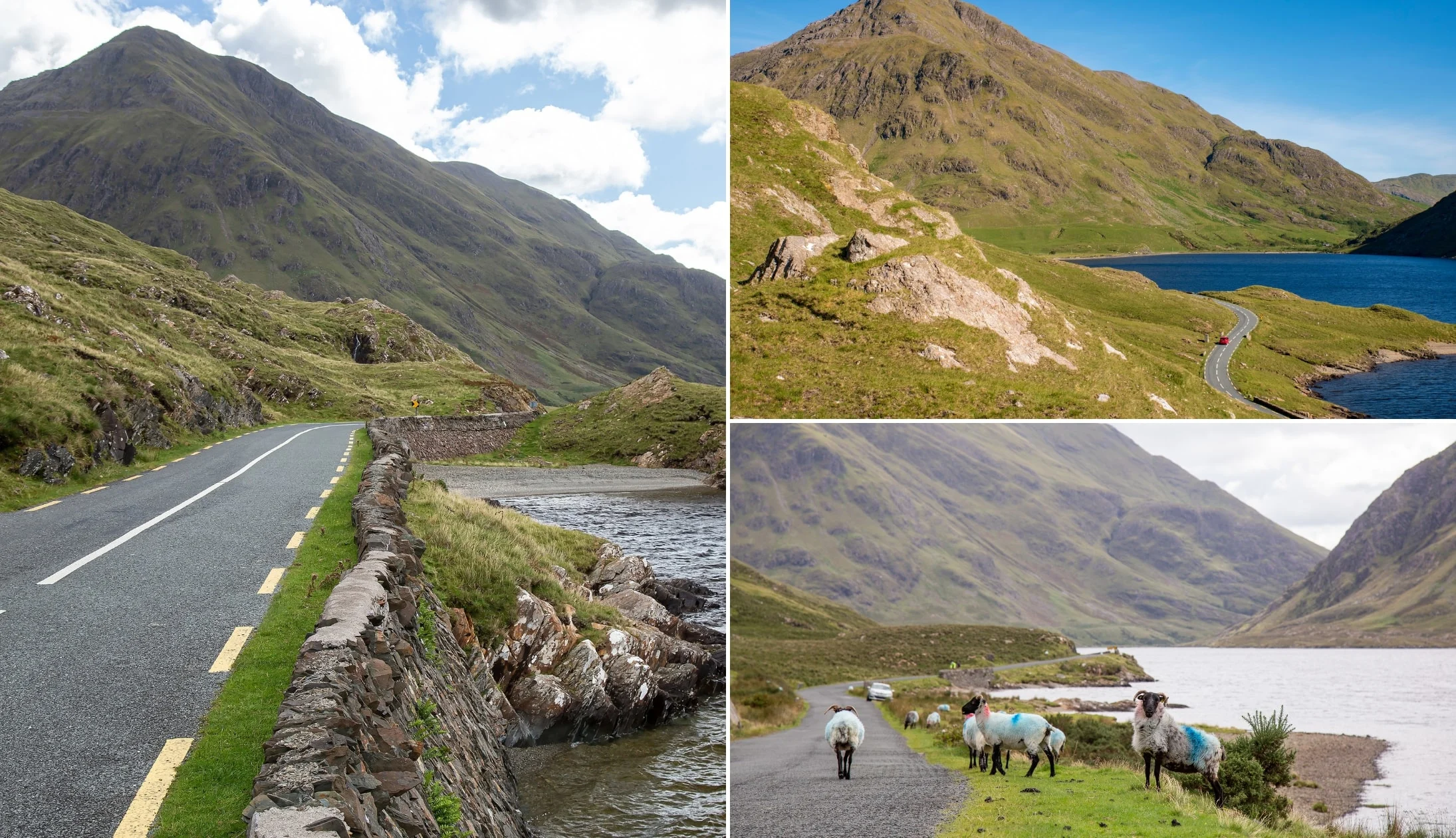
Photos via Shutterstock
Louisburgh is a picturesque little town north of Aasleagh Falls. We’ve included this stop as not only is the village lovely, but the 40-minute drive north along the R335 is incredibly scenic.
You’ll be driving right through the Doolough Valley, passing alongside lakes and in between towering mountains. The valley has a tragic history when several people died after being forced to walk along the route.
Give yourself extra time to stop at the Doolough Famine Memorial, and be on the lookout for Wild Atlantic Way viewpoints.
Stop 8: Westport
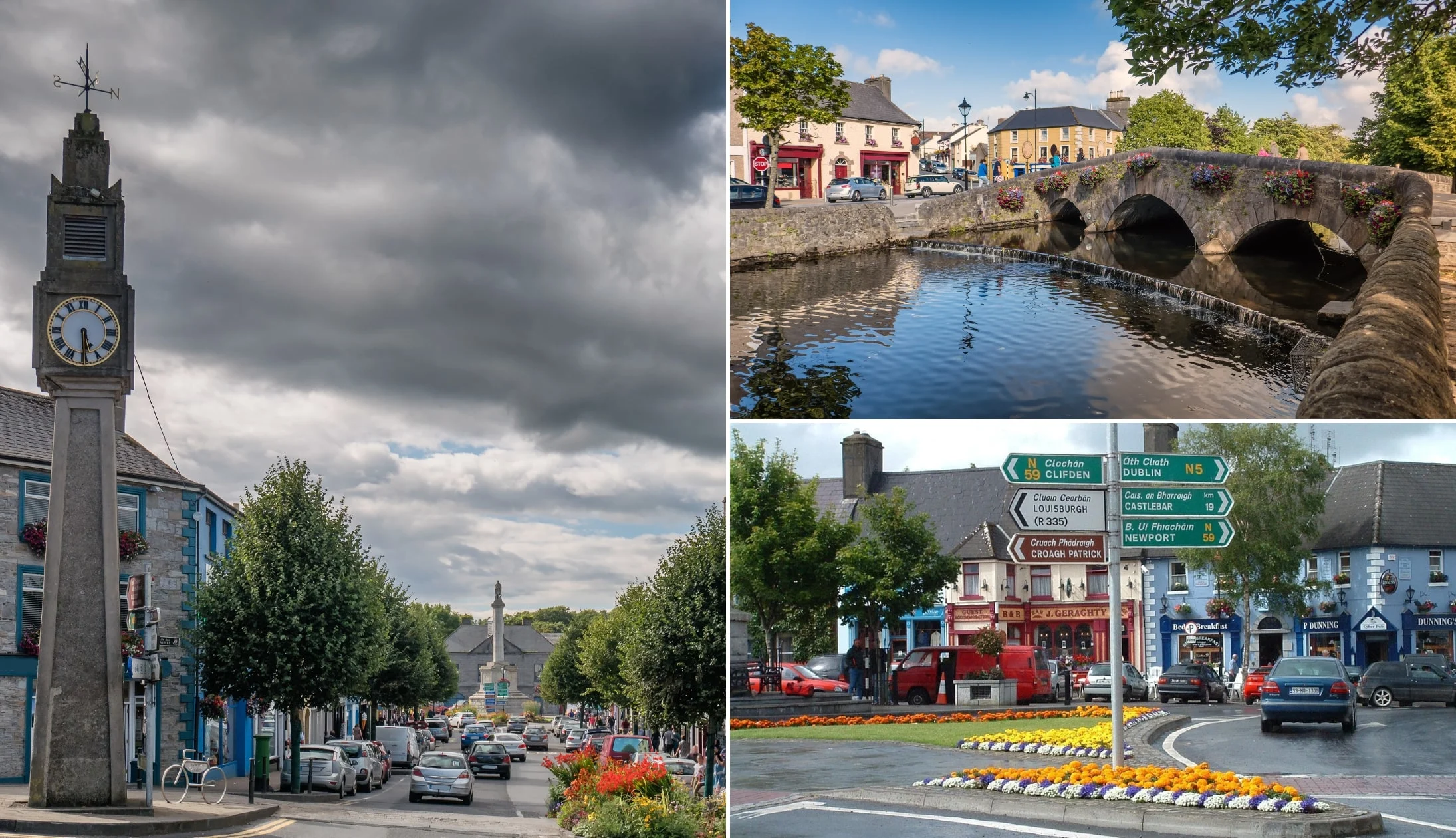
Photos via Shutterstock
It’s time to make your way to Cong via Westport. Westport is a 30-minute drive from Louisburg and a lovely little village.
It’s a great place to break up the journey to Cong, and if you feel the need, hop out to stretch your legs and explore the village.
There are some great spots for coffee in Westport, and we recommend Christy’s Harvest or The Tucker Bag Cafe.
Once you’ve grabbed a coffee, walk along the Carrowbeg River to have a look at the Grace O’Malley (Grainne Mhaol) statue.
Stop 9: Cong

Photos via Shutterstock
It takes roughly 55 minutes to drive from Leenane to Cong. It’s one of Ireland’s more popular villages, thanks to its scenic streets and link to the 1952 award-winning movie – The Quiet Man.
There’s lots to do in the village, from Quiet Man tours, grabbing a drink in Pat Cohan’s Gastro Pub (a must for Quiet Man fans), or checking out the 13th-century abbey ruins.
If it’s not too dark (and you’re not too tired), park at the edge of Pigeon Hole Wood, and walk to the mythical Pigeon Hole Cave.
Stop 10: Back to Galway for the night

Photos by Stephen Power via Ireland’s Content Pool
It’s been a long fun-filled day, but it’s time to head back to Galway City, a roughly 50-minute drive.
Here is a reminder of our earlier recommendations for our top places to eat, drink, and be merry in the city!
Our dinner recommendations
For dinner, we’ve got a few stellar recommendations: Ard Bia, The Quay Street Kitchen, and Dela. Ard Bia is absolutely fantastic, but you need to book in advance for dinner.
The restaurant has a quirky interior and serves beautifully presented modern dishes.
The Quay Street Kitchen has a great selection of vegan and vegetarian-friendly dishes, and Dela has modern Irish cuisine on the menu.
Live music and trad bars
There’s some mighty pubs in Galway. After dinner, head out for drinks at either Tigh Neachtain or The Crane. Both are traditional pubs with a great atmosphere.
Trad music is an integral part of the city, with heaps of options to choose from. Our favourite spots are Crane Bar (mentioned above) and Tigh Chóilí.
Day 6: County Clare

Photos via Shutterstock
You’re saying goodbye to Galway today and heading over to Doolin for a night. The total drive time is less than 2 hours, depending on whether you take the coast road. But we have lots of places for you to stop on the way!
Doolin is a lovely village on Ireland’s west coast, known for its trad music.
Doolin accommodation recommendations
- Popular and central stays: West Haven House (short stroll from McDermott’s Pub) and Cullinan’s Guesthouse (great reviews and right across from Fitzpatrick’s Bar)
- Our favourites: Doolin Inn (a stone’s throw from Fisher Street), Fiddle + Bow Hotel (boutique and very central) and Hotel Doolin (good value and nice and central)
Stop 1: Dunguaire Castle
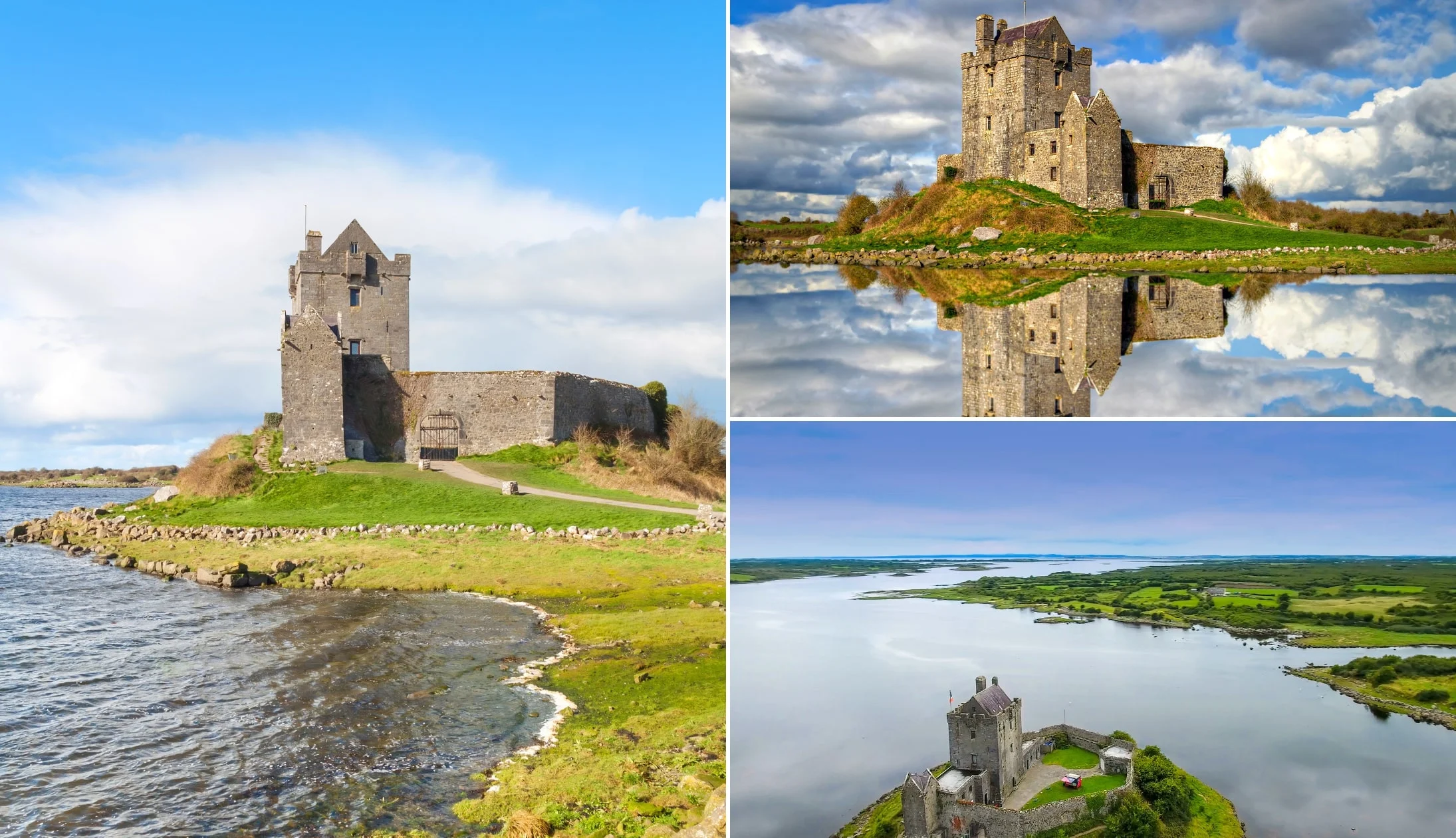
Photos via Shutterstock
Dunguaire Castle is a 35-minute drive from Galway. The castle was built in 1520 and belonged to the O’Hynes clan. In 1912, the castle was bought by writer Oliver St. John Gogarty.
During his ownership, he restored the castle and hosted several famous writers, including W.B. Yeats and George Bernard Shaw.
The enchanting castle sits on the shores of Galway Bay and has an impressive 75-foot tower. We’d recommend spending at least an hour here, walking the grounds and taking a self-guided tour.
According to legend, if you stand at the front gate and ask a question, you’ll have an answer by the end of the day!
Stop 2: Aillwee Cave

Photos via Aillwee Caves on FB
Your next stop, the Aillwee Cave, is around 27 minutes from Dungaire. The Aillwee Cave is a fascinating underground system, full of caverns, rock formations, and even the bones of an ancient bear!
The site is close to the Birds of Prey Centre, a unique and educational experience involving some of the world’s top birds of prey.
We’d recommend spending at least one hour at this stop, or even longer if you visit both attractions. The Aillwee Cave tour lasts 45 minutes, passing by an underground waterfall and over bridged ravines.
At the Burren Birds of Prey Centre, you’ll be able to see predators like owls, vultures, and hawks, and possibly watch a 45-minute flying demonstration.
Stop 3: Poulnabrone Dolmen

Photos via Shutterstock
Only 10 minutes from the Aillwee Cave, Poulnabrone Dolmen is a large portal tomb that dates back to the Neolithic period (between 4200 BC and 2900 BC). It’s one of the most famous dolmens in the country and one of the most photographed.
When it was excavated in the late 1980s, around 33 remains were discovered buried underneath, alongside various objects. It’s a really interesting piece of ancient Irish history and free to visit.
Stop 4: Ballyvaughan for lunch
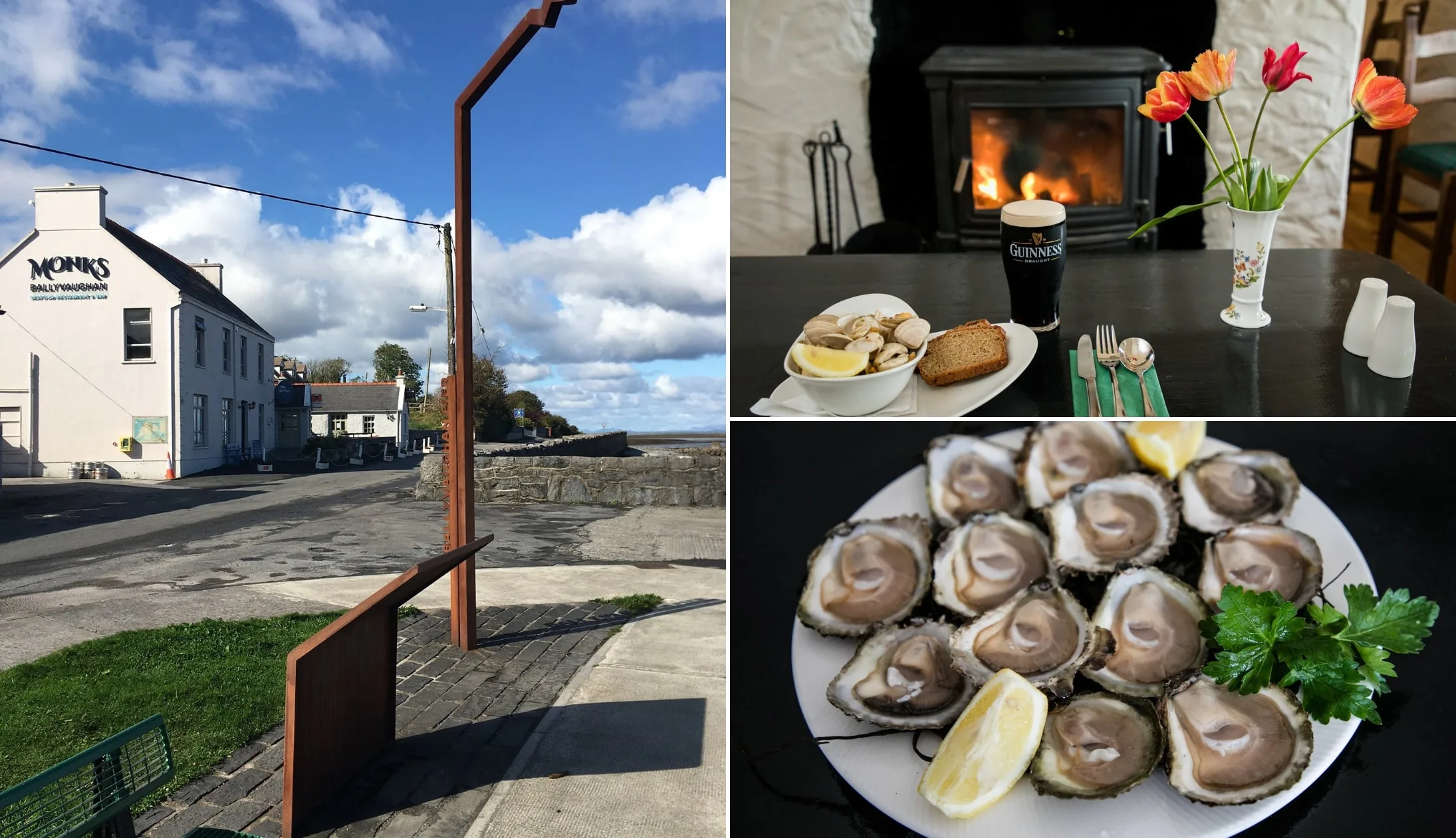
Photos via Monk’s on FB
It’s time to head to the quaint seaside village of Ballyvaughan, only 13 minutes from Poulnabrone Dolmen. Our favourite places to eat in the village are Monks (a brilliant seafood restaurant with handpicked Galway Bay oysters), The Wild Atlantic Lodge (a beautiful restaurant with delicious Irish cuisine), or The Larder (a cosy cafe with sandwiches, soup, and quiches).
Stop 5: Fanore Beach

Photos via Shutterstock
Fanore Beach is 18-minutes from Ballyvaughan. It’s a gorgeous beach backed by rolling sand dunes. The exposed beach is a popular spot for swimmers and surfers, and in the summer there’s a lifeguard service and a surf school.
Take a scenic walk along the beach, and if you need to pop to the toilet after lunch, there are public toilets on-site (open seasonally in the summer).
Stop 6: Doolin

Photos courtesy of Chaosheng Zhang
The drive from Fanore Beach to Doolin usually takes around 25 minutes, but we would recommend giving yourself a little extra time.
There are some amazing views of the Burren along the way and you might want to pull over! Once you arrive at Doolin, check into your hotel and rest/freshen up/etc.
Stop 7: Cliffs of Moher

Photos via Shutterstock
Your next stop, the magnificent Cliffs of Moher are one of the area’s, (if not Ireland’s) most popular attractions.
The cliffs are a 15-minute drive from Doolin, with breathtaking views of the wild Atlantic, Galway Bay, and the Aran Islands.
There’s a visitor centre on-site, as well as 800 metres of paved walkways with viewing areas, and the historic O’Brien’s Tower. In our opinion, the visitor centre isn’t really anything that special, but you’ll get access to all three with the Cliffs of Moher Experience.
Stop 8: Dinner, drinks and music in Doolin
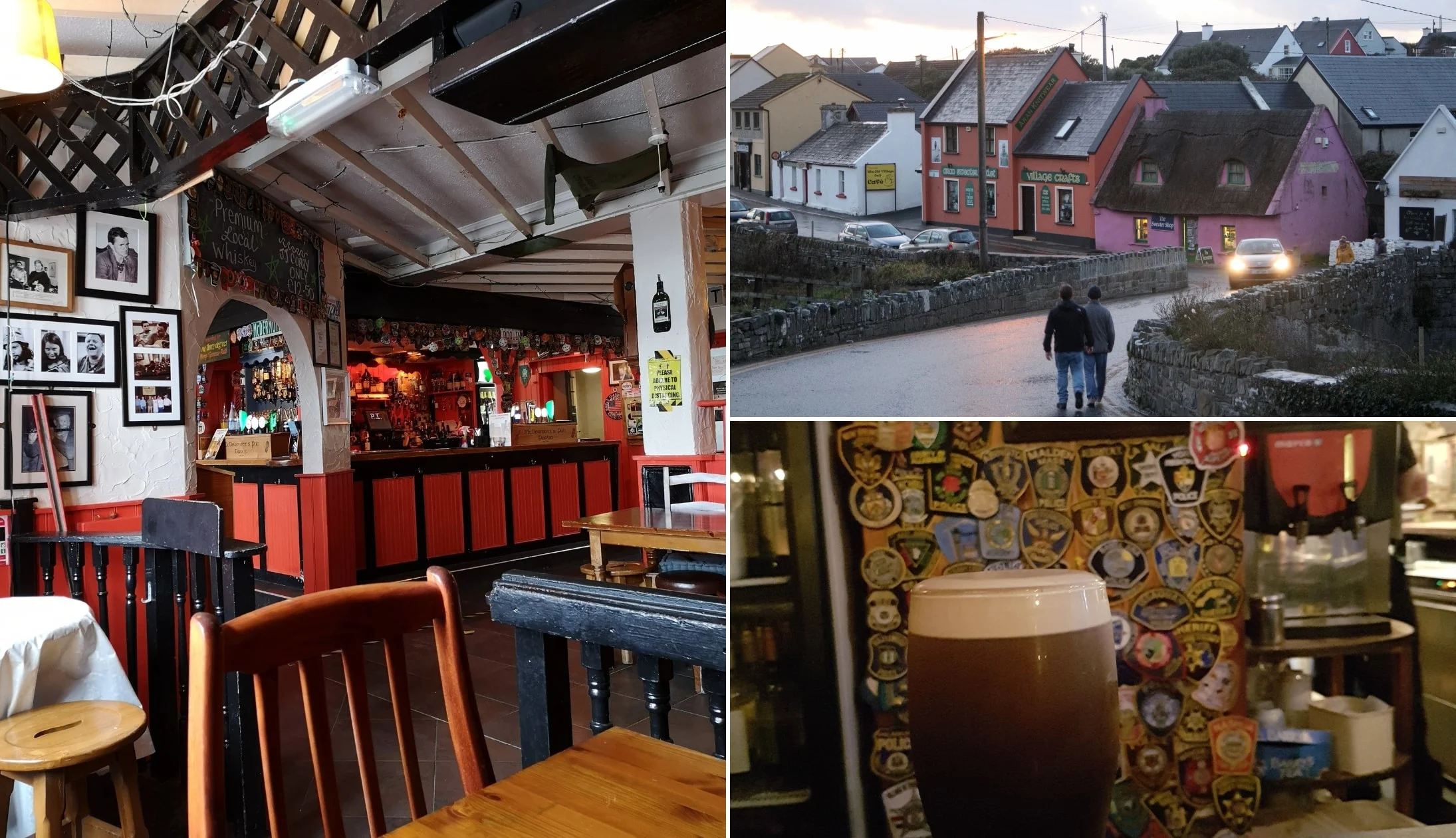
Photos by The Irish Road Trip
Although it’s fairly small, there’s some great restaurants in Doolin and there’s a handful of mighty pubs in Doolin, too.
Our Doolin food recommendations
We have quite a few recommendations for where to eat in Doolin. These are Riverside Bistro (the seafood pasta and lamb shank are delicious), Anthony’s at Doolin (modern Irish and international cuisine with a great selection of cocktails), and Russell’s Seafood Bar at Fiddle + Bow (amazing local seafood from award-winning chef Viv Kelly).
Our Doolin pub recommendations
Doolin is packed full of traditional Irish pubs, which are great for a pint (or a hearty pub meal if the restaurants above aren’t to your liking). Our favourites are McDermot, McGanns, Fitz’s, and Gus O’Connors.
The pubs above are also a good place to catch some live music, as well as Anthony’s at Doolin.
Day 7: Killarney (Via Bunratty and Limerick)

Photos via Shutterstock
It’s day 7 of your 12 days in Ireland itinerary and it’s time to check out of your Doolin accommodation and head to Killarney in County Kerry! Along the way, you’ll be sightseeing in Bunratty and Limerick, visiting some amazing attractions, and going on some gentle walks.
Killarney is a lovely heritage town on the shores of Lough Leane. It’s a great base for exploring southwest Ireland and you’re going to be spending three nights here.
Recommended accommodation in Killarney
- Budget: New Street Lodge (basic accommodation a stone’s throw from the National Park) and Castle Lodge (cosy B&B a 5-minute walk from Killarney House)
- Mid-range: Killaran House (exceptional accommodation in a great location) and Killarney Avenue (right by the park with excellent rooms)
- Luxury: Muckross Park Hotel & Spa (an elegant hotel a 10-minute walk from Muckross Abbey) and The Killarney Park (old-world style 5-star near the train station)
Stop 1: Clare Abbey

Photos via Shutterstock
Grab yourself some breakfast at your accommodation or look back at yesterday’s breakfast recommendations. Once you’re all fueled up, hop in the car and make your way to today’s first stop, Clare Abbey, a 46-minute drive from Doolin.
Although the abbey is now in ruin, it was once the largest and most important Augustinian monastery in the county. It was built in 1189 on what was possibly the site of an earlier church, and in 1278, it was the site of a battle between Toirdhealbhach Mór Ó Briain and Thomas de Clare during a civil war.
Today, all that remains are a church and belfry, plus a few domestic buildings to the south and east of the church, surrounded by a cloister. It’s an interesting historical site to visit, and it’s free. Take care if has rained as it can get very muddy.
Stop 2: Bunratty

Photos via Shutterstock
From the abbey, it’s roughly 18 minutes to Bunratty Castle. Plan to spend at least one hour in Bunratty Castle and Folk Park (although you could easily spend three!).
Bunratty Castle and Folk Park sit on 26 acres of lovely countryside. Visiting the Folk Park feels like stepping back in time as the 19th-century buildings and streets have been recreated to resemble what they would have originally looked like.
You can also take a tour of Bunratty Castle, the last of four castles built on the site (grab your skip-the-line ticket online before you go.
Stop 3: King John’s Castle
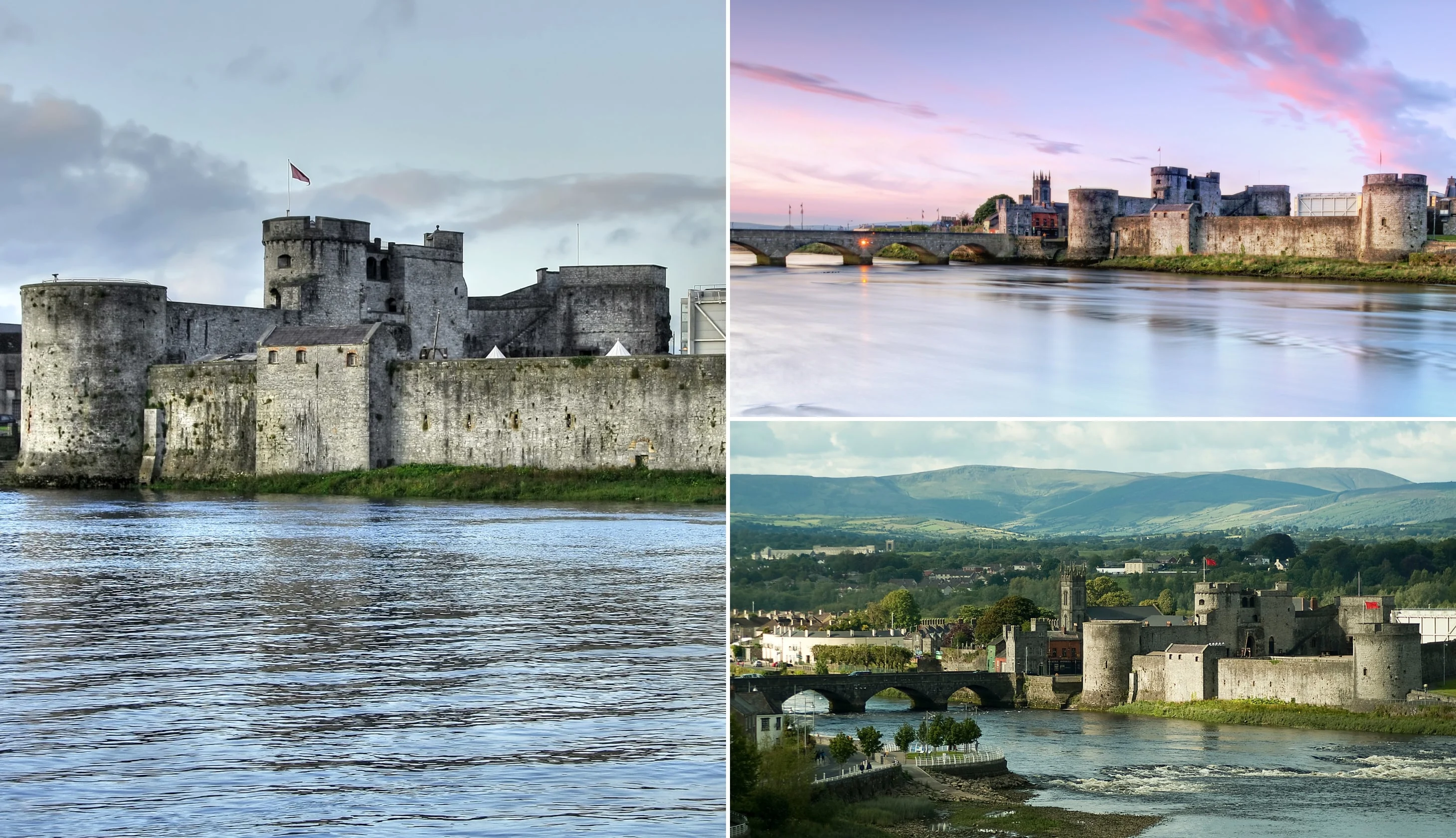
Photos via Shutterstock
Head off to King John’s Castle in Limerick City, next (a 20-minute drive). The 13th-century castle sits on King’s Island, on the banks of the River Shannon. The castle is in fantastic condition and is one of Europe’s best-preserved Norman castles.
King John’s Castle was built under the orders of King John, the “Lord of Ireland” and Richard the Lionheart’s brother. It was built in between 1200 and 1212, with numerous repairs and extensions over its 800-year history.
The castle was a military stronghold with solid curtain walls, turrets, and strong fortifications. However, despite this, it sustained heavy damage during the 1642 siege of Limerick (the first of five Limerick sieges during the 17th century). There’s a fantastic exhibition on the siege inside the castle if you’d like to learn more.
Most people spend around one and a half hours visiting the castle and visitor centre. You can have a look at the interactive exhibits, try on historic costumes, and in the summer, play Medieval games in the courtyard!
Stop 4: Lunch
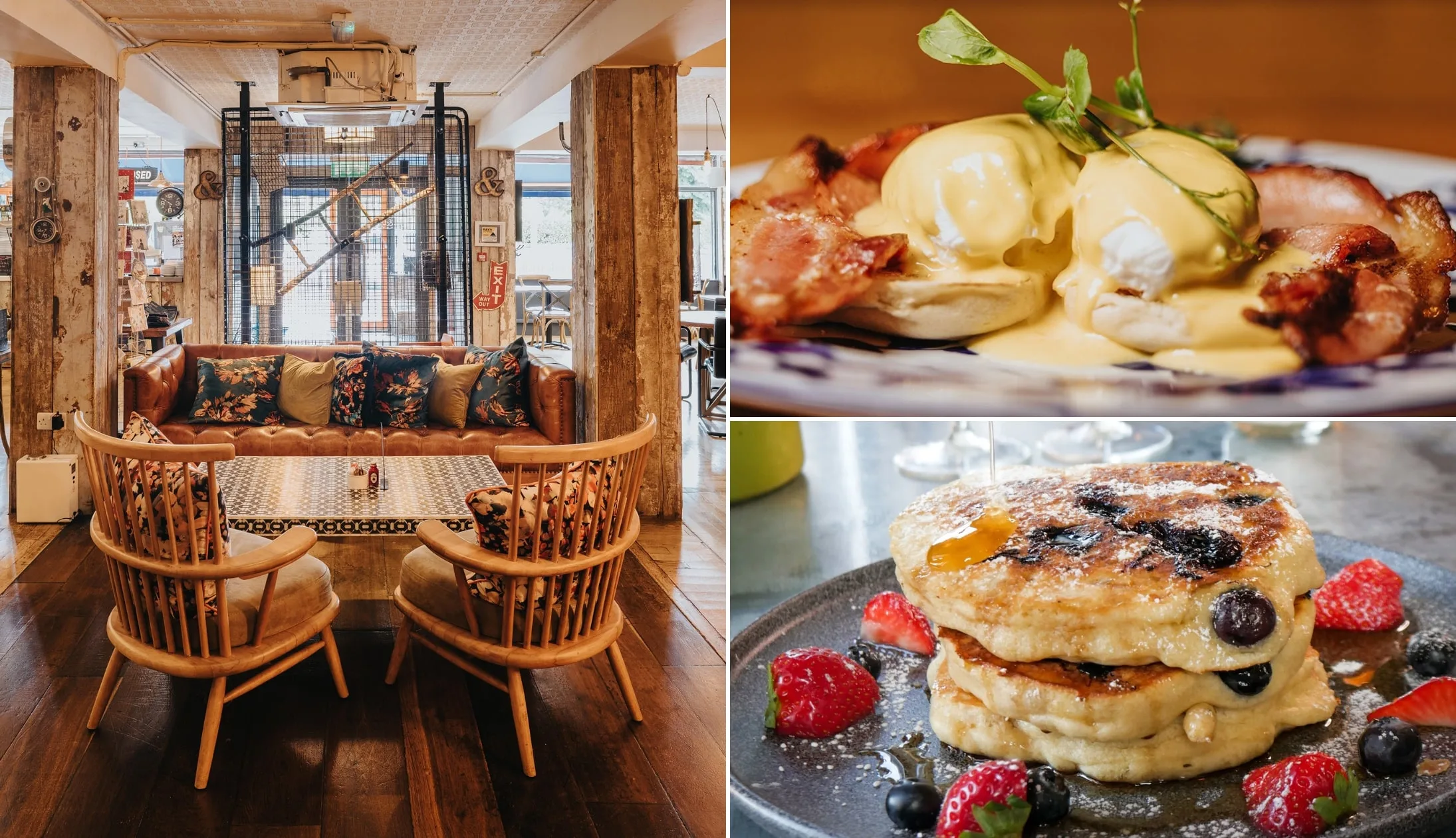
Photos via Hook and Ladder on FB
Limerick has great options for lunch. We recommend SpitJack (amazing brunch and gourmet sandwiches), Coqbull (delicious burgers), and the Hook and Ladder (three locations in the city, but Sarsfield Street is the closest to the castle – vegan and vegetarian-friendly options).
Stop 5: Adare
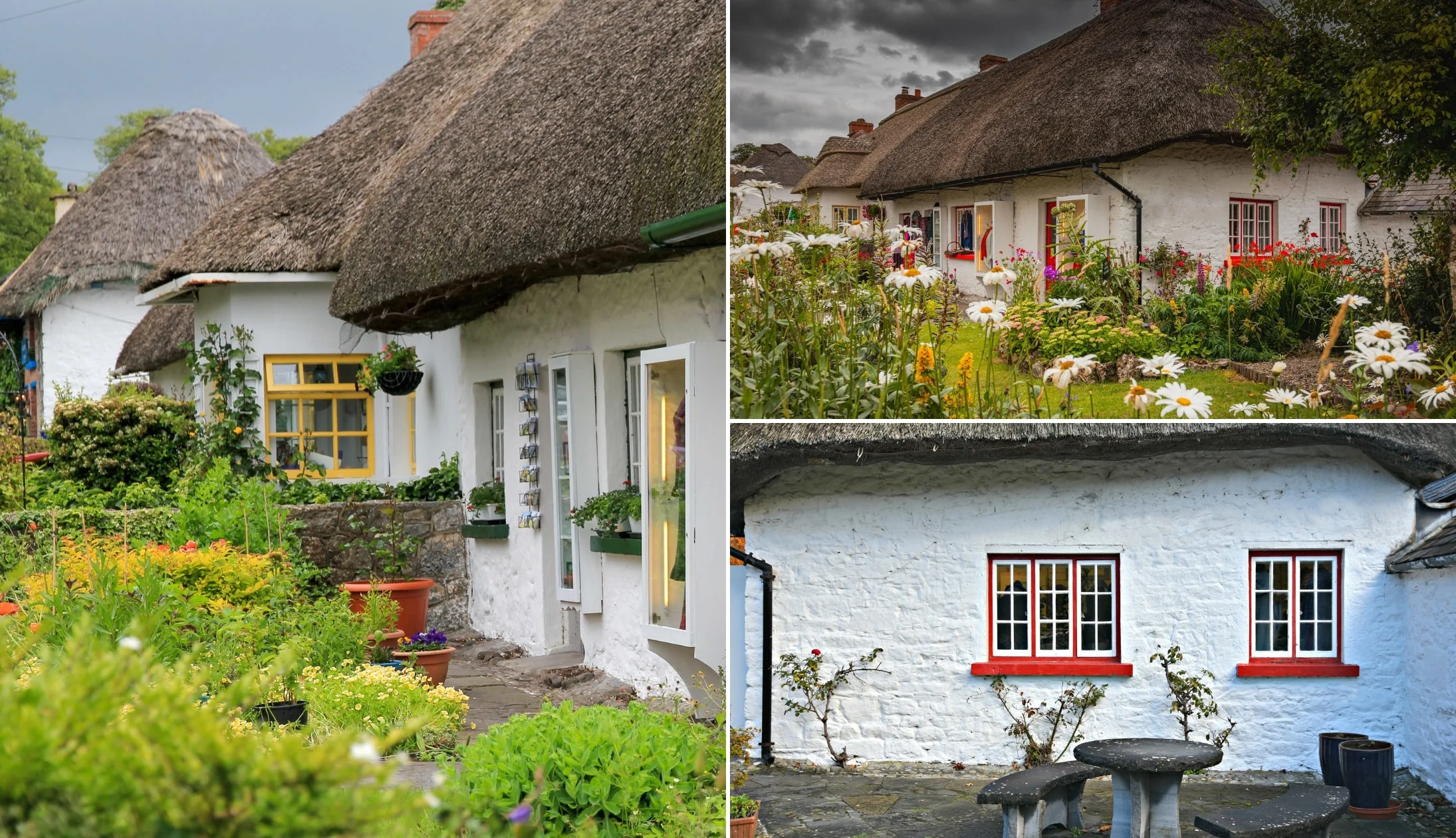
Photos via Shutterstock
Your next stop of the day is the gorgeous village of Adare, a short 20-minute drive from Limerick City.
Park up and head for a saunter around the town. As you ramble, you’ll stumble upon a handful of traditional thatch cottages, many of which are used as restaurants, cafes and shops.
If you fancy stepping back in time, drop into Adare Castle (you can take a shuttle from the town centre).
Stop 6: Arrive in Killarney, check-in and pick a mode of transport

Photos via Shutterstock
It’s time to make your way to Killarney. From Adare, it’s just under a 1.5-hour drive, so if you’re dying for some caffeine after the journey, head over to the Bean in Killarney to get a much-needed coffee and a snack!
Check into your hotel, then step out to explore the town a little on foot. We’ve three options for you to choose from:
Option 1: The self-guided cycle

Photos via Shutterstock
Killarney National Park is big and, while it’s a joy to ramble around, it’s the perfect spot to explore by bike (we’re speaking base on personal experience here).
You can rent a bike online in advance and then pick it up from the collection point on the Muckross Road.
You then cross the road and head straight into the park. There’s very few inclines and it’s a wonderful way to get around to Torc Waterfall, Muckross House and the Lakes of Killarney.
Option 2: The jaunty

Photos via Shutterstock
Another great, and very unique way to explore Killarney, is via one of the traditional jaunting cars (i.e. the horse and cart).
On this 1-hour guided jaunty tour you’ll:
- See Ireland’s highest Mountain Range – the MacGillycuddys
- Trot past the 15th-century Ross Castle
- See the impressive St Mary’s Cathedral
- Learn about Killarney from a traditional Jarvey guide
Option 3: The Lakes of Killarney boat Cruise
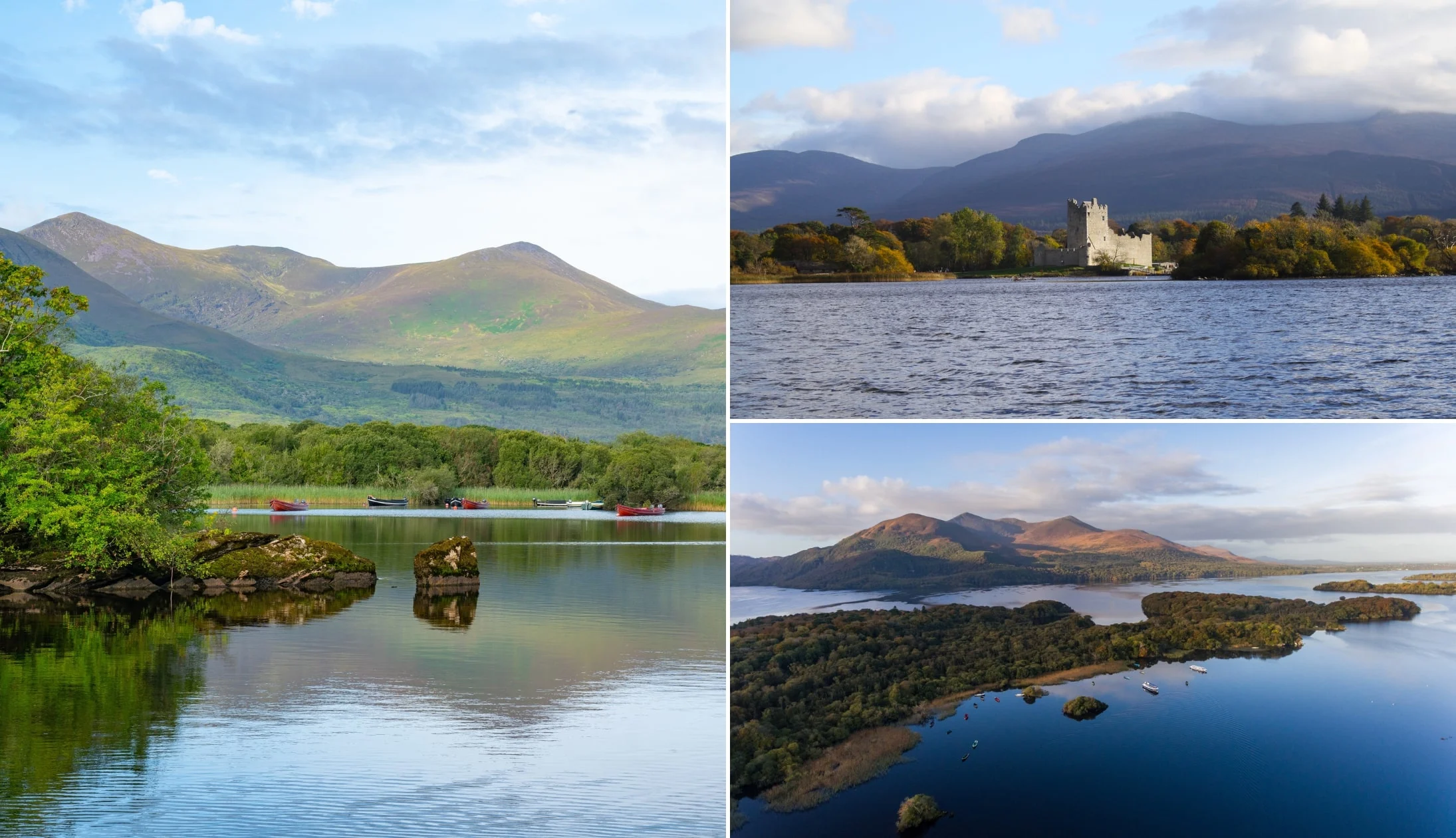
Photos via Shutterstock
Arguably one of the most popular tours in Killarney is this 1-hour (and very reasonable) boat tour that takes you around Killarney’s lakes.
The tour takes place on a glass-covered boat with heating and it gives you a completely different perspective of the national park.
You’ll drift by the 6th-century Innisfallen Monastery, see the highest mountain in Ireland and, at times, see Red Deer and White Tailed Eagles.
Stop 7: Food, drinks and music in Killarney
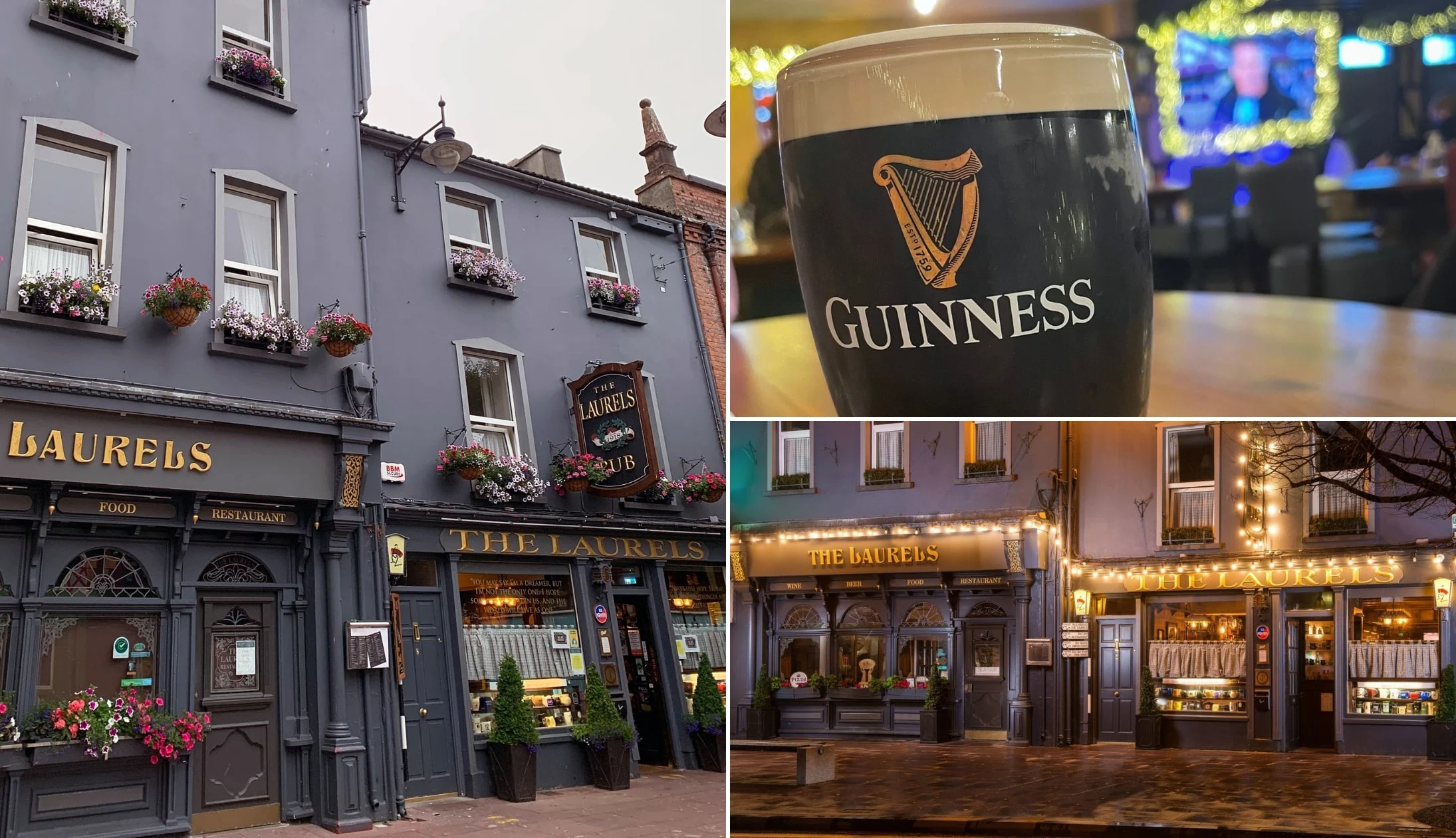
Photos via The Laurels on FB
It’s been a long day and, luckily enough, there’s plenty of places to kick back in for a fine feed and a tipple.
Our dinner recommendations
There are some exceptional restaurants in Killarney. Our favourites are the Mad Monk (they serve amazing seafood like sizzling crab claws and deep water prawn tagliatelle), Kitty O’Se (splash out on the Seafood Tower to share), and Murphy Browns (hearty Irish dishes like roasted duck and fish and chips).
Our pub recommendations
There’s some mighty old-school pubs in Killarney, too. For post-dinner drinks, head to JM Reidy’s, the Laurels Pub, or O’Connors.
They all have a traditional pub feel and are a great choice for a pint. JM Reidy’s has a lovely courtyard which is great in the summer, and O’Connors is perfect if you feel like cocktails.
If you want to hear some live music, JM Reidy’s and O’Connors often have live music sessions.
Day 8: The Ring of Kerry Drive
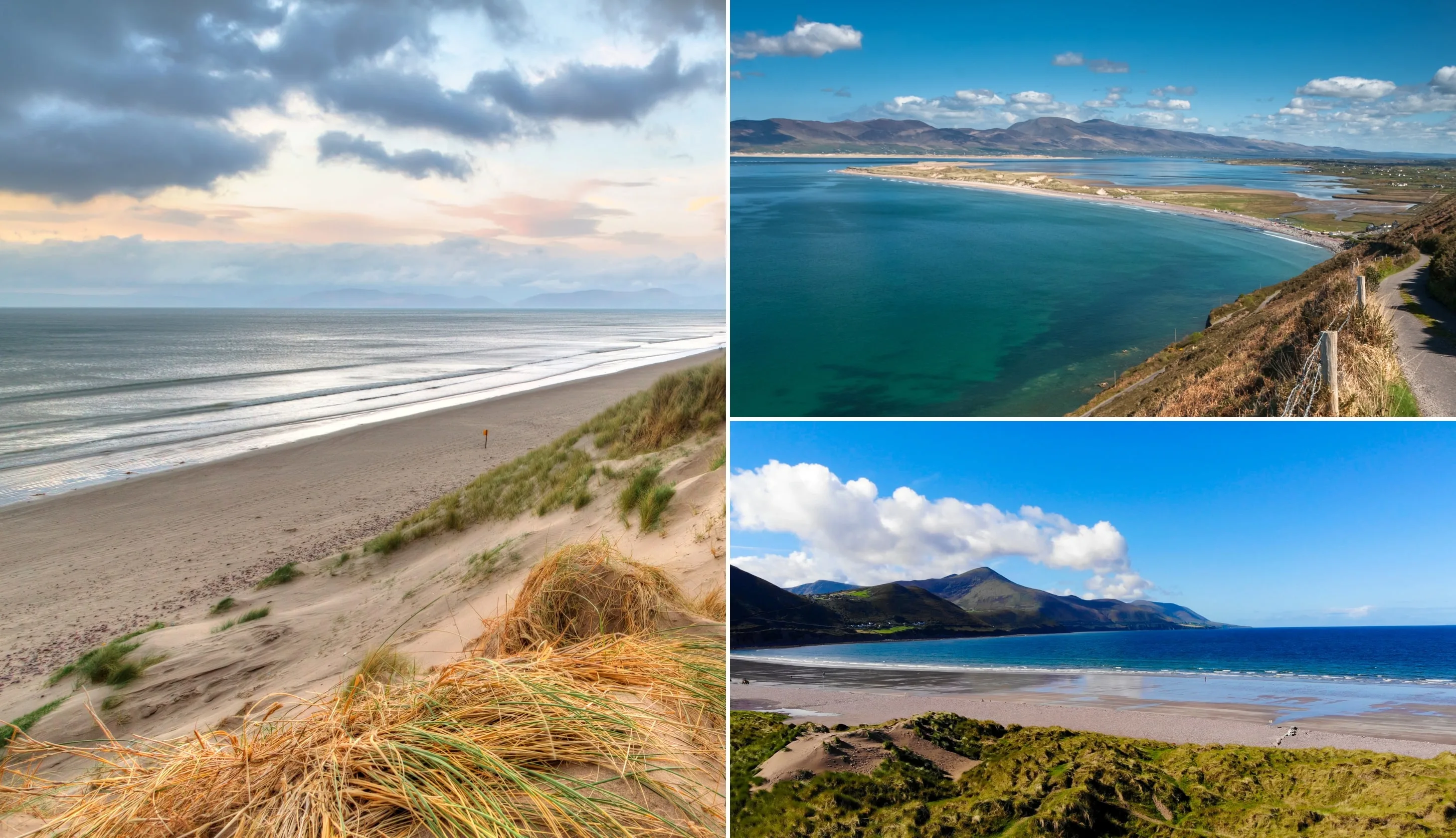
Photos via Shutterstock
It’s day 8 of your 12 days in Ireland, and today you’re heading off for an adventure on the stunning Ring of Kerry Drive!
Be prepared for breathtaking views, stunning landscapes and the type of scenery that imprints itself upon your mind forever.
We’d strongly recommend reading this Ring of Kerry guide (with a handy Google Map) before you set-off as it’ll tell you everything you need to know.
Start the day with a hearty breakfast at your accommodation, or if you’d prefer to go out, we have a couple of suggestions!
Petit Delice is a family-run French patisserie with a stunning covered patio. It’s a great choice if you’re after a morning coffee and a freshly-baked pastry. Otherwise, Manna Cafe does a tasty full Irish as well as breakfast baps and pancakes.
Stop 1: Ross Castle
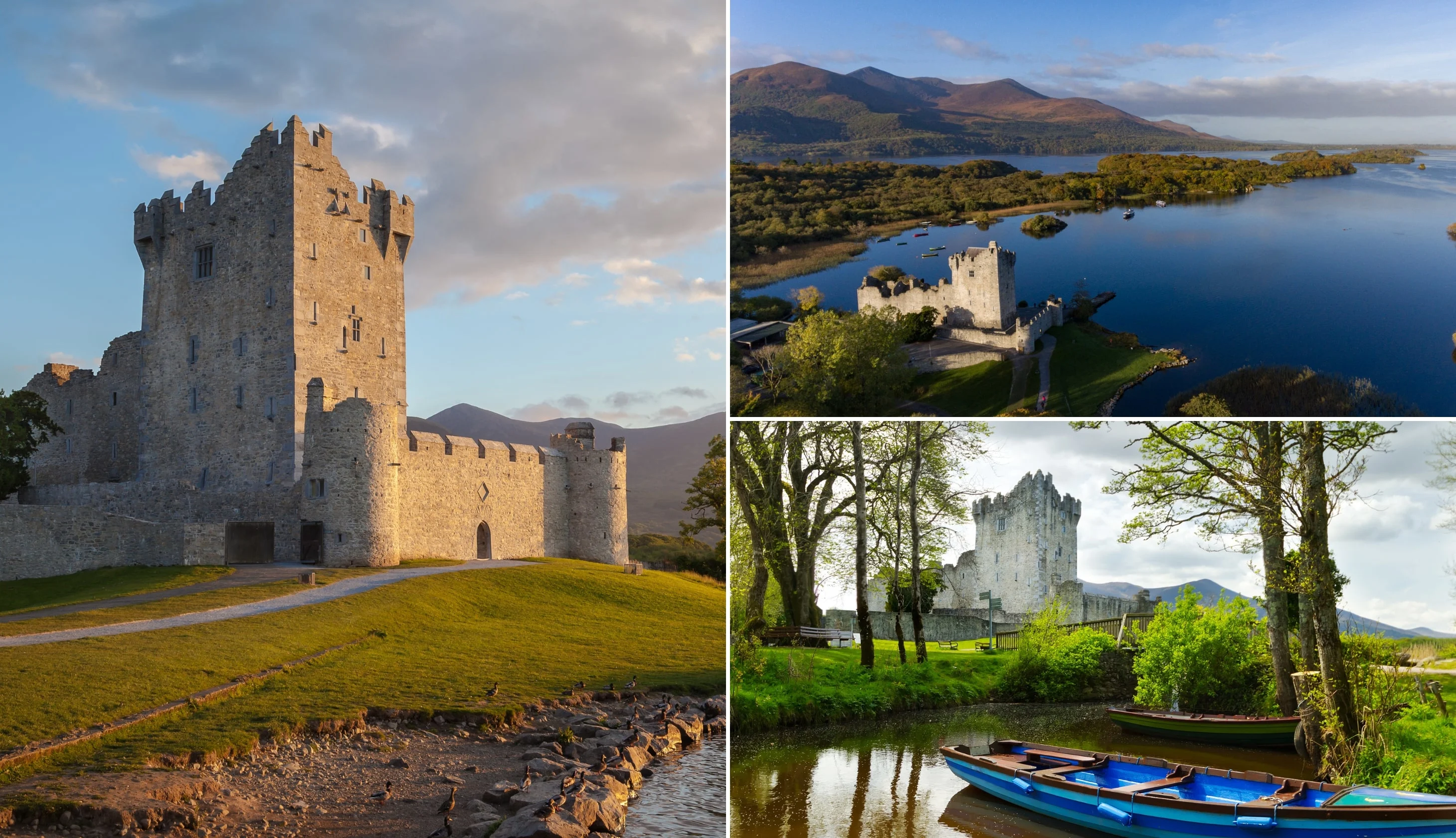
Photos via Shutterstock
(If you already visited Ross Castle yesterday, feel free to skip this spot and head straight to Torc Waterfall.)
From Killarney, it’s a 7-minute drive to Ross Castle in Killarney National Park. You can also take a horse and carriage to it, if you like!
Ross Castle was built by O’Donoghue Mór, an Irish Chieftain in the 15th century. The castle is in great condition and sits on the shores of Lough Lenane.
It’s steeped in mystery and according to local legend, O’Donoghue still sleeps under the lake’s waters, rising every seven years on the first morning of May.
You can either visit the grounds and admire the castle from the outside, or buy a ticket and join a guided tour.
During the tour, you’ll be taken through the various rooms and given information about the castle’s past inhabitants. The tour lasts around 45 minutes.
Stop 2: Torc Waterfall
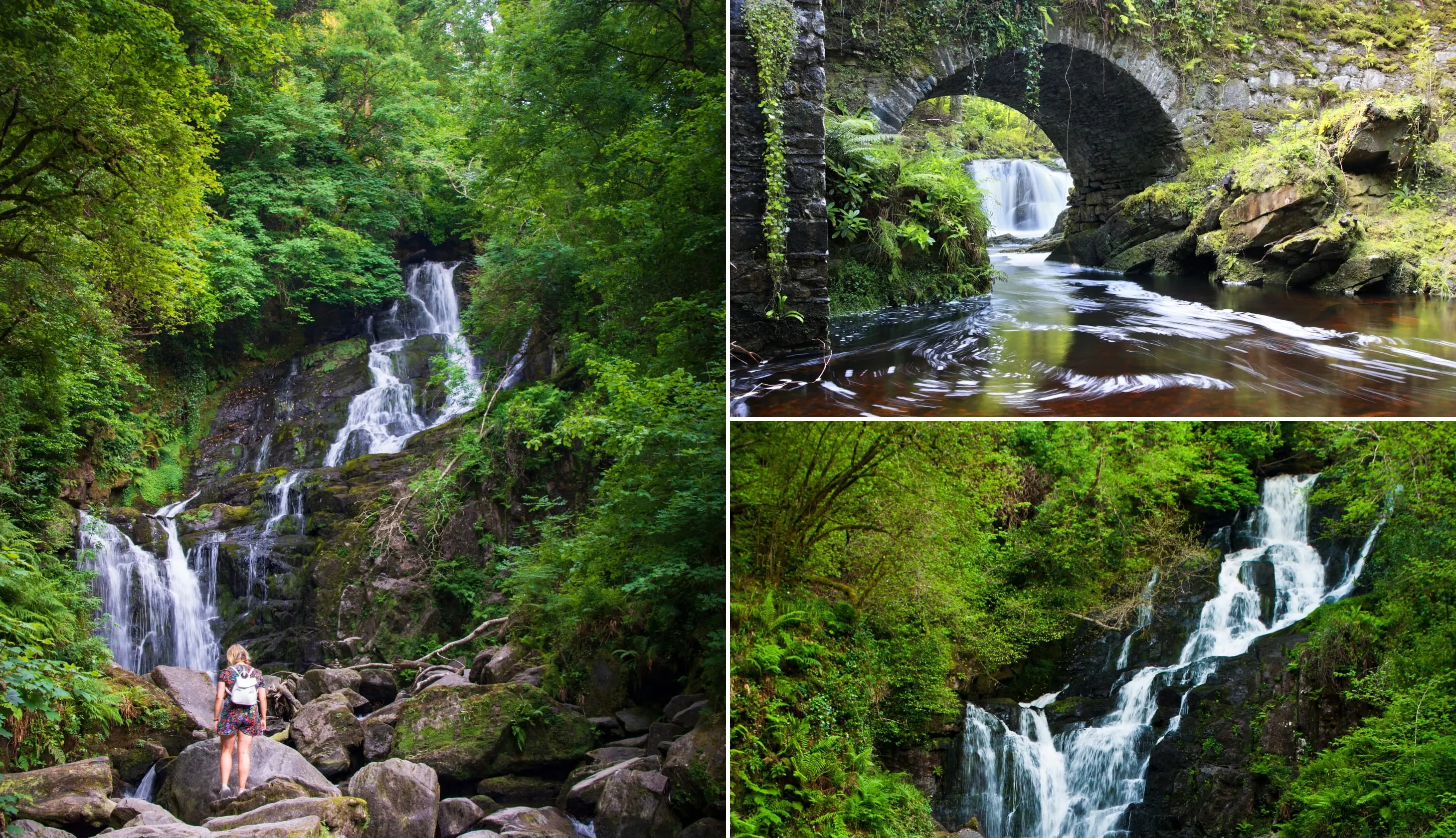
Photos via Shutterstock
From Ross Castle, drive 15 minutes to the enchanting Torc Waterfall. According to local folklore, the waterfall was home to a man who was cursed by the devil to turn into a boar each night.
When his secret was revealed by a farmer, the man burst into flames and retreated to the Devil’s Punchbowl.
There are two car parks close by, but in our experience, the closest car park, Killarney Hiking Parking Lot (here) is often full. So, you may need to park in the Torc Waterfall Lower Parking on the N71 (here).
From the Torc Waterfall Lower Parking, it’s roughly 1km to the waterfall along a paved cycle path that passes by some gorgeous scenery.
From Killarney Hiking Parking Lot, there’s a small path that cuts through the forest and joins up with the cycle path roughly 250 metres from the waterfall.
Stop 3: Ladies View
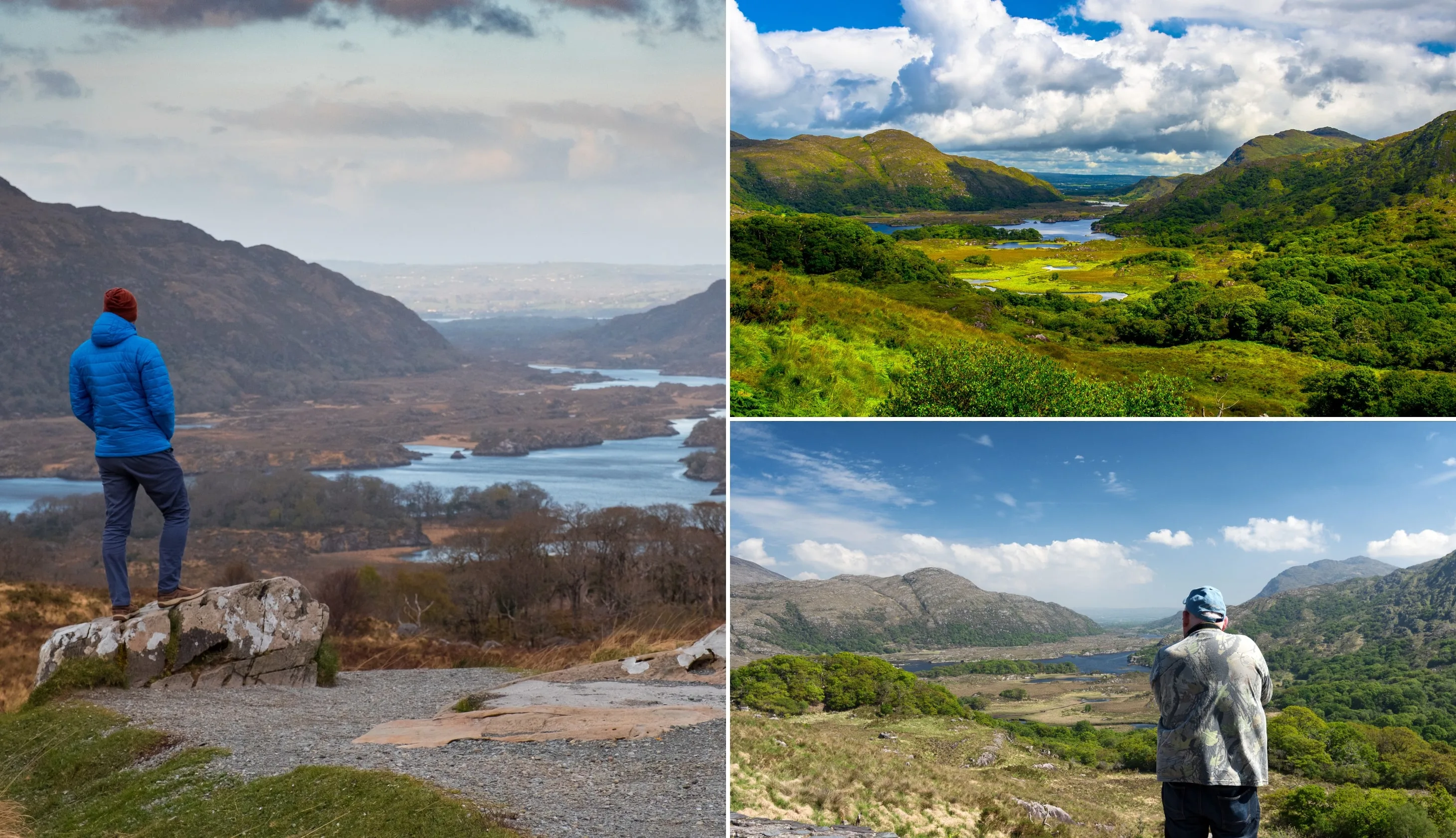
Photos via Shutterstock
From Torc Waterfall, it’s roughly a 15-minute drive to Ladies View. The viewpoint here is a popular stopping point on the Ring of Kerry road, with roadside parking directly facing the view (see parking here on Google Maps).
The viewpoint was named in honour of Queen Victoria’s ladies-in-waiting who were in awe when they visited in 1861 during a royal visit. The view looks out over the Upper Lake with mountains rising up on either side.
Stop 4: Moll’s Gap

Photos via Shutterstock
Drive for around 9 minutes along the N71 to another popular spot on the Ring of Kerry road, Moll’s Gap! There’s plenty of parking at Moll’s Gap (see parking here on Google Maps), but take care as the parking area is on a sharp bend.
Moll’s Gap is also known as Céim an Daimh in Irish or ‘Gap of the Ox’, but it gets its nickname after Moll Kissane, owner of a local shebeen (unlicensed pub).
The pub was established in the 1820s when the road was being built, and Moll’s homemade poitin (a strong liquor sometimes made from potatoes) was a favourite with the construction workers!
Stop 5: Kenmare
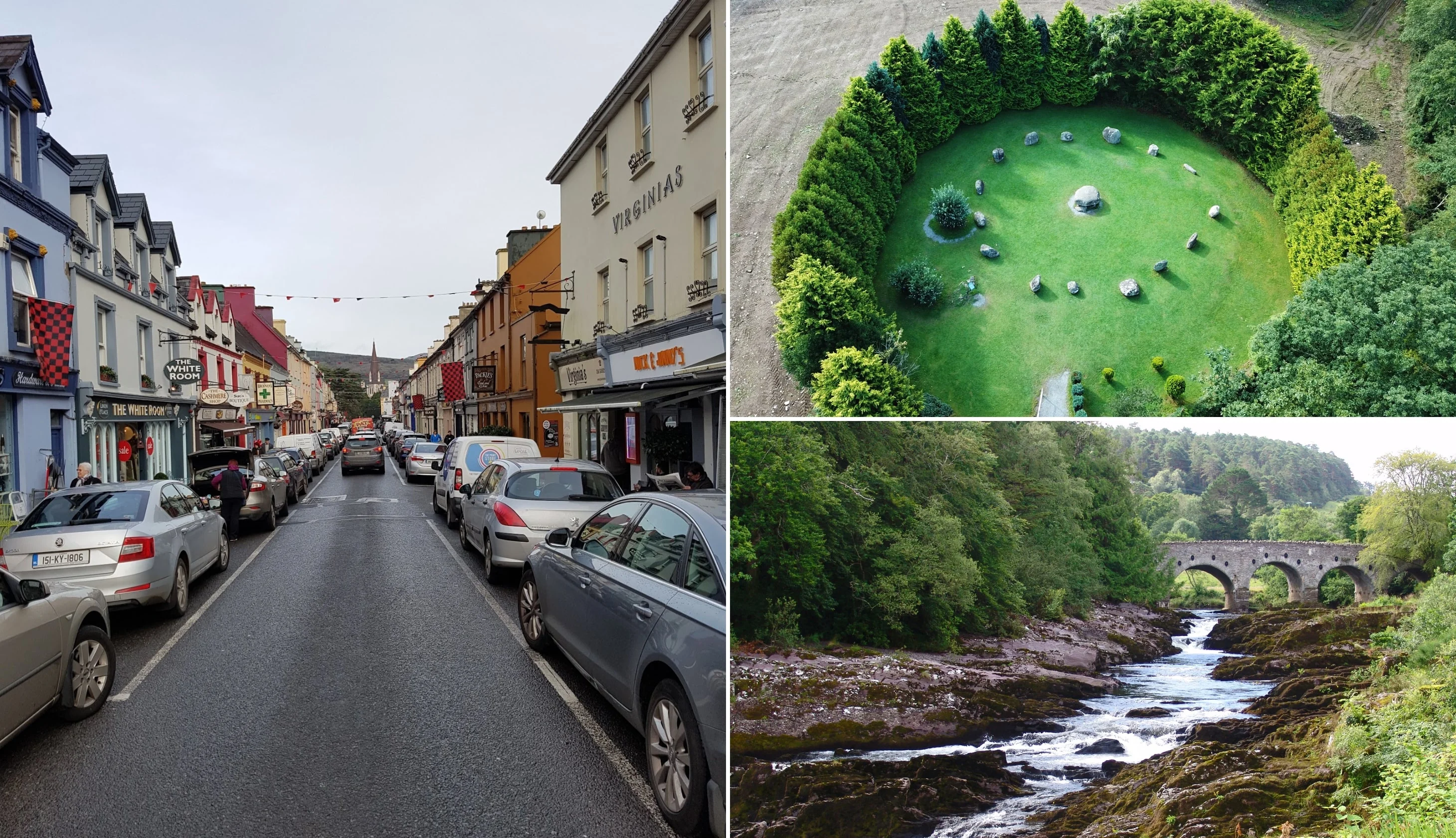
Photo left: The Irish Road Trip. Others: Shutterstock
Continue on the N71 for 12 minutes to Kenmare, a lovely town at the head of Kenmare Bay. It was founded in 1670 and to this day it’s still full of charm, with colourful houses, traditional pubs, and quaint cafes.
Spend some time exploring the street on foot, popping into the local shops, or heading for a mid-morning coffee at Pucini’s Coffee and Books or Cafe Mocha.
Stop 6: Derrynane Beach
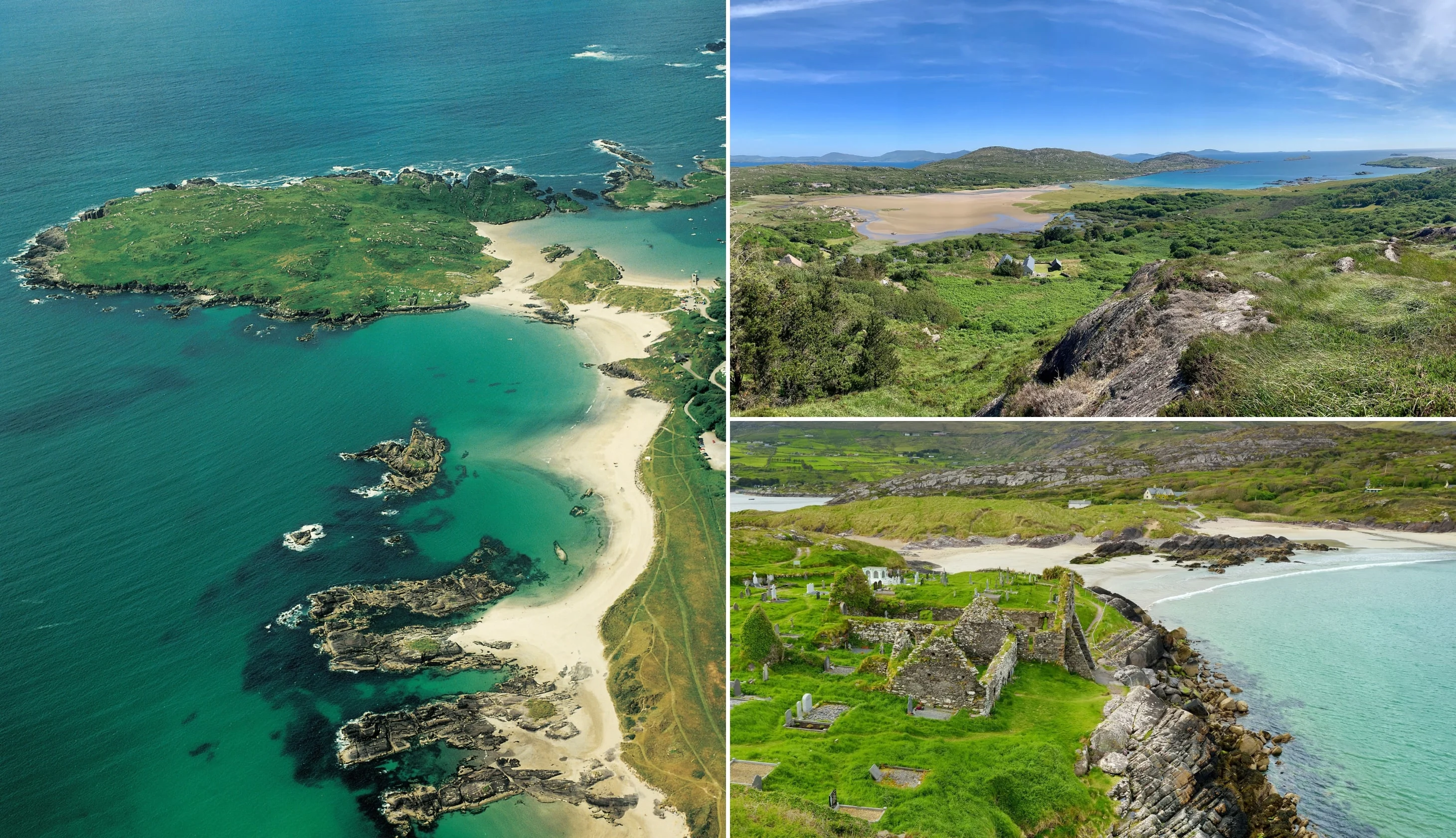
Photos via Shutterstock
From Kenmare, it’s a one-hour drive to Derrynane Beach – one of the finest beaches along the Wild Atlantic Way.
This a lovely white-sand beach backed by soft sand dunes that’s perfect for sauntering along. There are dangerous currents, and a small section is known locally as “Danger Beach”.
Stop 7: Lunch in Waterville

Photos via Dooley’s on FB
It’s time for lunch, so drive 18 minutes to Waterville, Charlie Chaplin’s favourite village in Ireland!
We’ve got a few top picks for where to eat, these are: An Corcan (casual dining and homemade food), Dooleys Seafood and Steakhouse (opens from 1pm serving hearty Irish dishes), and The Lobster Bar and Restaurant (a family-run restaurant with traditional Irish favourites).
Stop 8: Coomanaspig Pass

Photos via Shutterstock
The Coomanaspig Pass is one of the highest points in Ireland that can be accessed by car. From the top, the views are spectacular, and the drive up to the pass is equally as stunning.
Approach the pass via the R565 and the Skellig Ring. The drive takes just under 30 minutes, with plenty of places to pull over and take in the view.
Stop 9: Kerry Cliffs

Photos via Shutterstock
Continue onto the Kerry Cliffs, less than 5 minutes down the road. The cliffs are absolutely magnificent, rising 300 metres above the Atlantic Ocean.
The views from the Kerry Cliffs are wonderful, and on clear days you can see The Skelligs to the west as well as Puffin Island!
If you’re feeling a little peckish, there’s a small cafe for drinks, cakes, and sandwiches.
Stop 10: Valentia by way of Portmagee
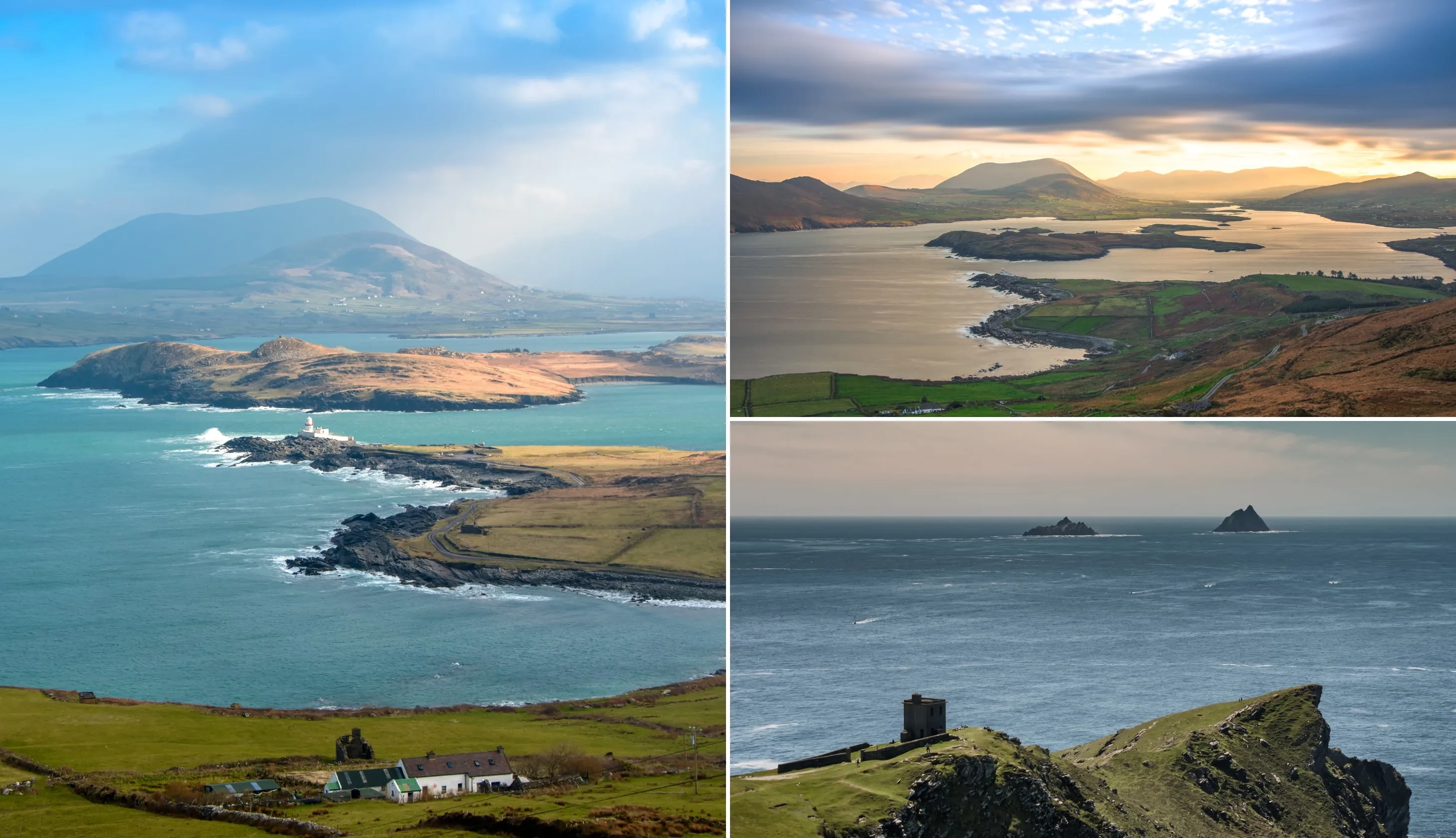
Photos via Shutterstock
It’s time to head to Valentia Island, one of Ireland’s most westerly points. From the Kerry Cliffs, it’s a short drive onto the island via the bridge in Portmagee.
You’ll be using this route to get onto the island, but please note that to get off the island, you’ll be taking the ferry in Knight’s Town (more details below).
There’s lots to do in Valentia, but some of our favourite things are the Valentia Island Lighthouse, the Slate Quarry, and the stunning Geokaun Mountain and Fogher Cliffs.
The Slate Quarry is the most westerly quarry in Europe and the oldest quarry in production in Ireland. Slate from the quarry can be found in Westminster Abbey, the Paris Opera House, and the Houses of Parliament.
Geokaun Mountain is the highest point on the island standing 270 metres tall. The Fogher Cliffs are on the northern face of Geokaun, with incredible views of the Atlantic, distant mountains, and several islands.
There are three car parks/viewing points along the way. The last one here is the closest to the summit. The landowner charges a small entry fee.
Once you’re finished exploring Valentia, it’s time to take the ferry from Knight’s Town off the island. The ferry runs between 7:45am and 9:25pm Monday – Saturday and 9am to 9:25pm on Sunday. Check the latest timetable on their Facebook Page.
Stop 11: Cahersiveen

Photos via Shutterstock
From the pier in Reenard Point, it’s a 7-minute drive to Cahersiveen. Some cool places to check out in the area are the Old Barracks, which has several exhibitions about the history of the local area including The Life and Times of Daniel O’Connell, and the Cahersiveen ring forts which are roughly 3km from town.
Park here to explore the Leacanabuaile Ring Fort and the Cahergall Stone Fort on foot.
Stop 12: Rossbeigh

Photos via Shutterstock
From Cahersiveen, Rossbeigh Beach is a 30-minute drive. Rossbeigh Beach is a beautiful 6km long sandy beach with great views over Dingle Bay.
It’s a Blue Flag beach and one of the most popular in the area! We love it for a summer swim or a nice scenic walk in the winter.
Stop 13: Back to Killarney for the night

Photos via The Laurels on FB
Make your way back to the town the same way you came and then head to your accommodation to freshen-up.
Killarney, like Galway, is a place that’s rarely too quiet, even during the off-season.
Our dinner recommendations
There are some exceptional restaurants in Killarney. Our favourites are the Mad Monk (they serve amazing seafood like sizzling crab claws and deep water prawn tagliatelle), Kitty O’Se (splash out on the Seafood Tower to share), and Murphy Browns (hearty Irish dishes like roasted duck and fish and chips).
Our pub recommendations
There’s some mighty old-school pubs in Killarney, too. For post-dinner drinks, head to JM Reidy’s, the Laurels Pub, or O’Connors.
They all have a traditional pub feel and are a great choice for a pint. JM Reidy’s has a lovely courtyard which is great in the summer, and O’Connors is perfect if you feel like cocktails.
If you want to hear some live music, JM Reidy’s and O’Connors often have live music sessions.
Day 9: The Dingle Peninsula
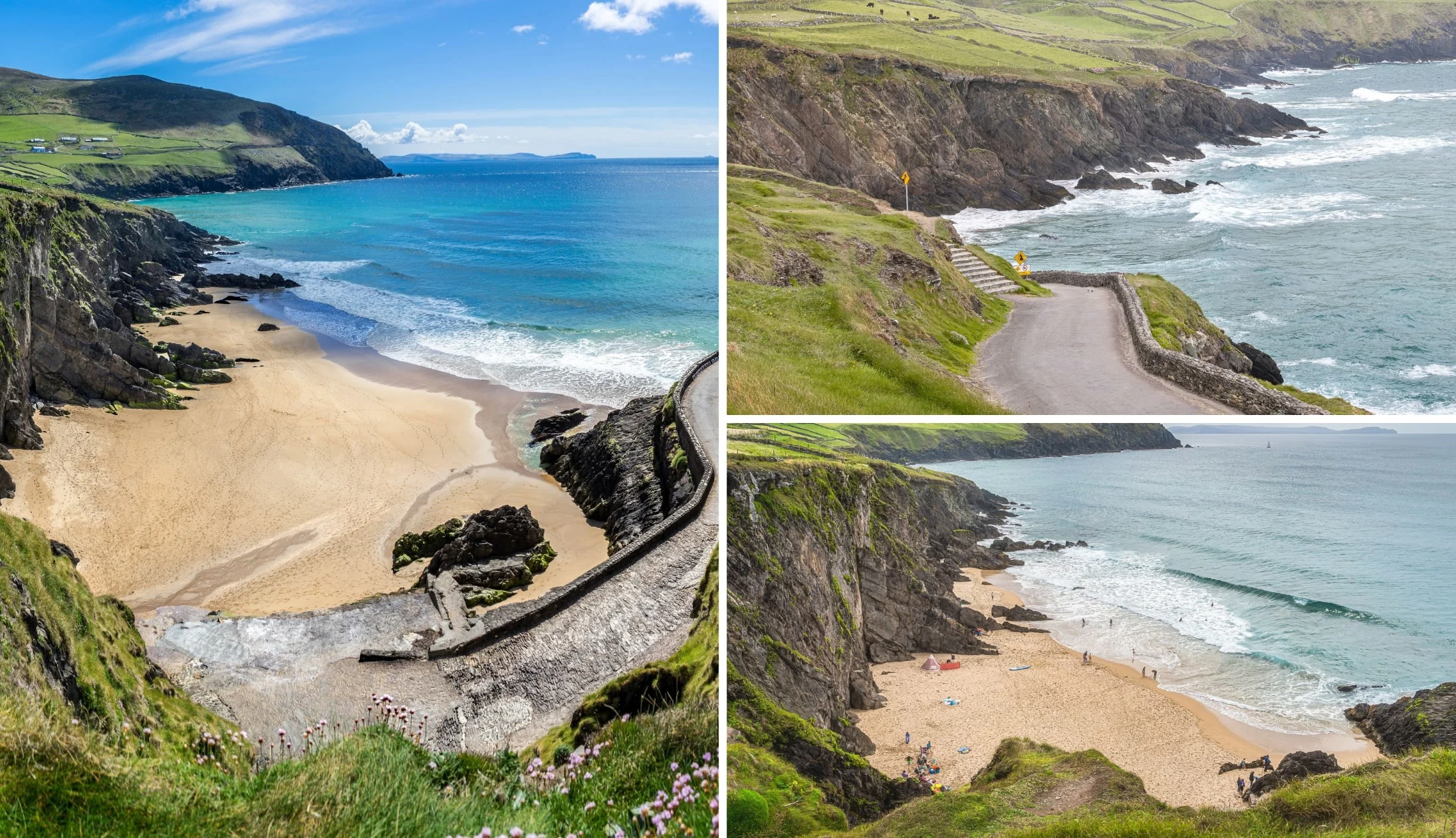
Photos via Shutterstock
You’re nearing the end of your 12 days in Ireland itinerary, so get ready for an action-packed day trip to the marvellous Dingle Peninsula.
The peninsula is on the country’s southwest coast, with rugged coastline, lovely beaches, and rolling green hills.
A note about today
We’re going to give you all of the main attractions located along what’s often referred to as the Dingle Peninsula Loop – you don’t have to visit all of them.
But we want to give you a sense of the stops, some of which get missed, so you can decide which you’d like to see and which you’d like to avoid.
In this guide you’ll find a map with the looped drive outlined along with all the key stops.
Stop 1: Inch Beach

Photos via Shutterstock
Our first stop of the day is a 45-minute spin from Killarney Town.
Inch Beach, as you’ll see from the photo on the left above, is nearly like a little peninsula in itself. It stretches for an impressive 5.5km and it’s a lovely spot for a stroll.
There’s a small car park up front and, before you braze the chill Atlantic breeze, you can grab a coffee from Sammy’s (you can’t miss it).
As you ramble, you’ll see surfers attempting to conquer the waves whole the mountains of Kerry off in the distance seem to loom over you from every angle.
Stop 2: Minard Castle and beach
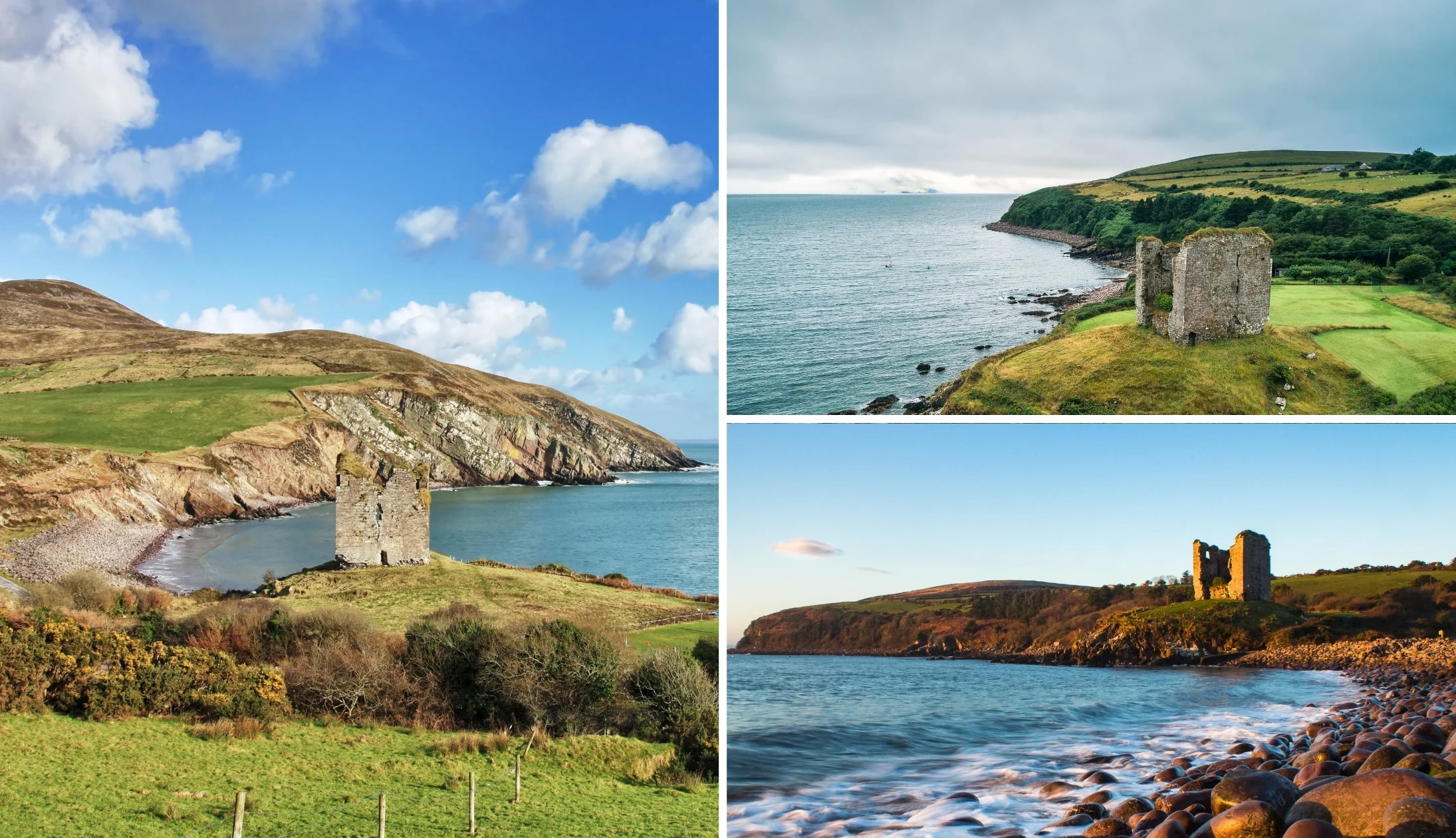
Photos via Shutterstock
Now, if you’ve ever watched the 1970’s film ‘Ryan’s Daughter’, you might recognise Minard Castle, which was referred to in the movie as ‘The Tower’. It’s a 15-minute drive from Inch Beach.
The castle here is finely plonked on a little grassy hill that overlooks the water, commanding breath-taking views on a clear day.
Minard Castle dates to the 16th century and it is one of several ‘Fitzgerald castles’ that were built by the Knight of Kerry on the Dingle Peninsula.
Stop 3: Conor Pass

Photos via Shutterstock
Next up is Conor Pass – a 25-minute drive from Minard Castle. At an impressive 410m above sea level, the mighty Conor Pass is one of Ireland’s highest mountain passes, and it can be the stuff of nightmares for nervous drivers.
However, you don’t have to drive it. If you head up to it from the Dingle side, you’ll reach a car park before you hit the narrow road.
From here, you can soak up views of the surrounding valley and watch the cars navigate its narrow bends from afar.
Stop 4: Dingle Town
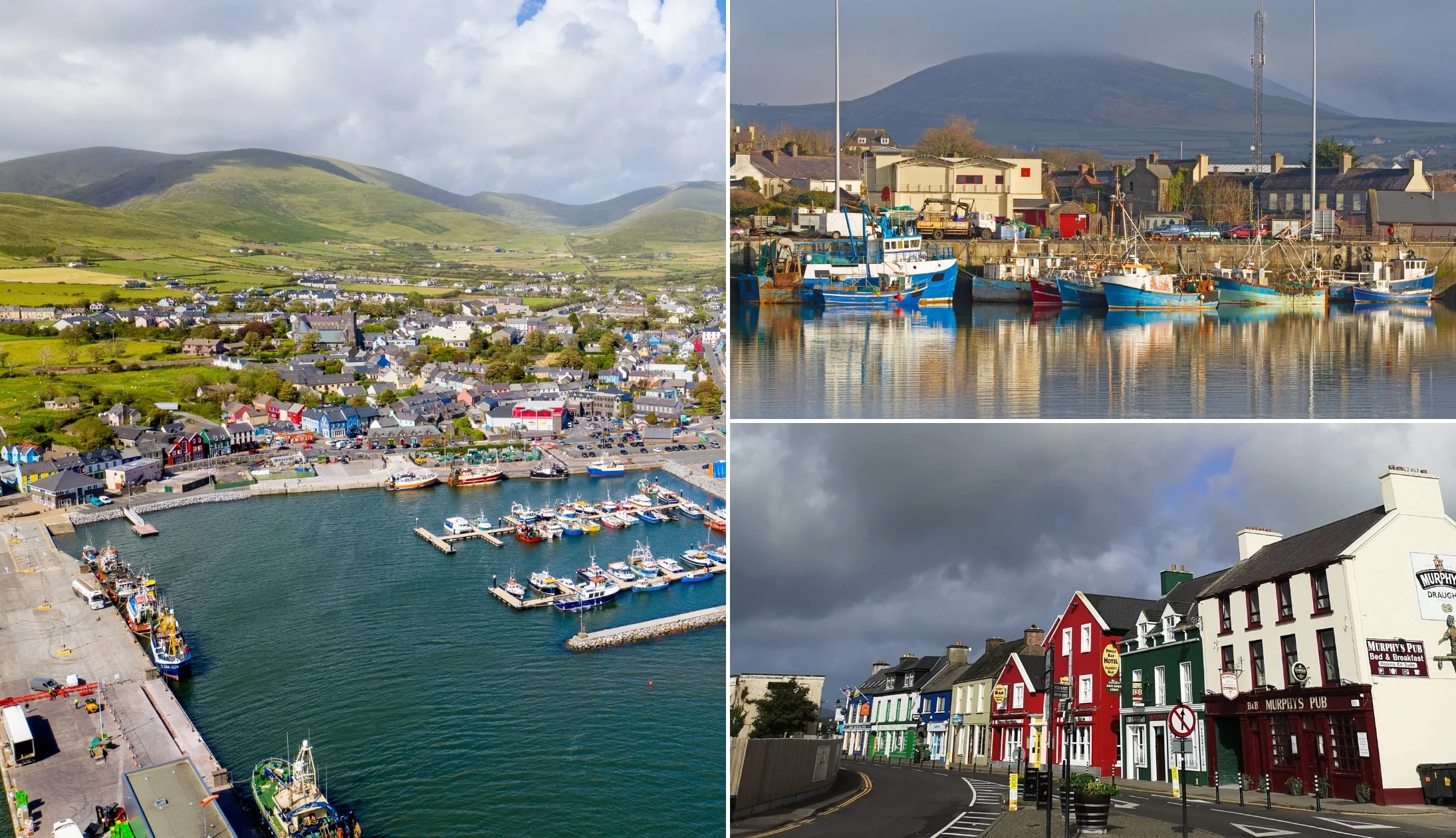
Photos via Shutterstock
You’ll have to double back on yourself, next, and drive the short 10 minutes to the lively Dingle Town.
It’s well worth parking up (you’ll find a car park at the pier), hopping out and heading for a stroll around this colourful little town.
It’s very walkable and, while very touristy, it boasts a fine bit of charm and character. In the town, you have attractions like the Dingle Distillery and the Dingle Aquarium.
There’s also plenty of great restaurants in Dingle (Fish Box is our go-to!) and there are endless old-school pubs in Dingle, too!
From the town, you can join one of the various Dingle Tours, like the Sea Safari or the boat trip to the Blasket Islands.
Stop 5: Eask Tower

Photos via Shutterstock
So, our next Dingle Peninsula attraction is Eask Tower – a 15-minute drive from the town. Now, if you’ve zero interest in history, don’t worry – there’s outstanding 360 views from here!
The solid stone tower has been perched at the top of Carhoo Hill since 1847 when it was constructed to aid vessels into Dingle Harbour.
There’s an entrance fee (€2 – prices may change) that you need to pay into an honesty box as it’s located on private land.
Note: It’s a steep walk up to the top of the hill and shoes with good grip are essential when wet.
Stop 6: Ventry Beach

Photos via Shutterstock
Ventry Beach (10-minute drive from Eask) is a Blue Flag Beach and it has a a lifeguard service throughout the summer months. On a warm day, there’s few places like it.
One of the more popular beaches in Kerry, Ventry Beach stretches for around 4.5km and, for me, it marks the beginning of the Slea Head Drive.
Hop out, flick off your shoes and head for a stroll or a paddle. It’s from this point that the Dingle Peninsula Drive goes from good to great!
Stop 7: Beehive huts, forts and sheepdog demonstrations

Photos via Shutterstock
So, these next stops are completely optional. After you leave Ventry, you’ll follow the road to the coast and it’s here that there are several paid and free attractions.
The first you come to is the Celtic Prehistoric Museum, the second is the FairyFort Ringfort, the third are the Dingle Sheepdog Demonstrations, the Famine Cottages and Dunbeg Fort and the fifth is the Beehive Huts.
You’ll then drive around a bend and reach Cashel Murphy followed by a place where you can hold a baby lamb
Personally, I’ve never done them and I likely never will, but I know of many visitors to the Dingle Peninsula that have.
Stop 8: The viewpoints

Photos via Shutterstock
Now, a word of warning – the Dingle Peninsula Drive has numerous viewpoints. Unfortunately, many of them are beyond bends in the road and you often find yourself missing them.
The issue then is that, at certain stages of the route, there’s very few places to turn. The first two you arrive to are Ceann Sleibhe and the White Cross.
Both are next to each other and each is worth stopping at if there’s room to do so.
Stop 9: Radharc na mBlascaoidí viewpoint

Photos via Shutterstock
The next viewpoint, listed as Radharc na mBlascaoidí or Blasket’s View on Google Maps is one of my favourites on the Dingle Peninsula Drive.
There’s a nice bit of parking here and you’ll be treated to a good eyeful of Dunmore Head. If you’re here when the weather is wild, you’ll see (and hear!) waves bashing against the craggy cliff face below.
Stop 10: Coumeenoole Beach

Photos via Shutterstock
Next up is Coumeenoole Beach – another filming location for the movie ‘Ryan’s Daughter’, however, this one comes with a WARNING.
No matter how inviting the water looks here, never enter it – the bay here catches the full force of the Atlantic which creates strong and unpredictable currents.
There’s a little parking area next to the beach and you can either admire it from above or walk down the winding track to the sand.
Stop 11: Dun Chaoin Pier

Photos via Shutterstock
Dun Chaoin Pier is arguably the most notable of the many Dingle Peninsula attractions, thanks to its quirky appearance.
This is the departure point for the ferry to the Blasket Islands and it’s particularly impressive at sunrise and sunset.
Now, another warning – every year a tourist attempts to drive down the path here and gets stuck, destroying their car in the process.
There’s a bit of parking near the ticket office – never… ever attempt to drive down it!
Stop 12: The Blasket Centre

Photos courtesy Valerie O’Sullivan via Ireland’s Content Pool
The Blasket Centre is a good option if you’re doing the Dingle Peninsula Drive when it’s raining and you need a bit of respite.
Boasting magnificent views of the coast and the islands, the Blasket Centre offers an insight into the unique community that lived on the remote Blasket Islands prior to they were evacuated in 1953.
As you walk around it, you’ll get an insight into island life, how the island’s inhabitants made ends meet and plenty more.
Stop 13: Ceann Sraithe (Star Wars filming location)
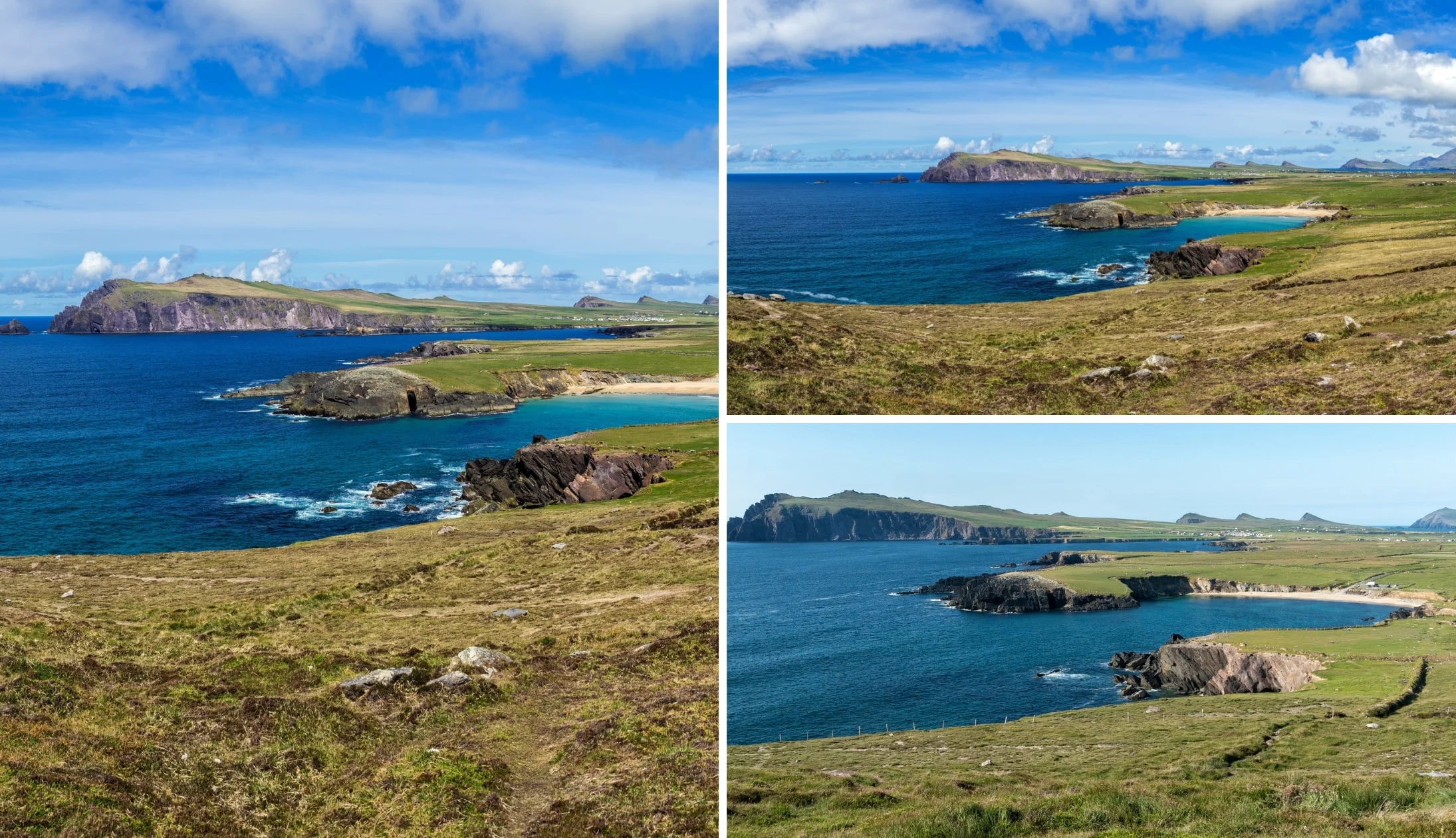
Photos via Shutterstock
As you may be aware, parts of Star Wars: The Force Awakens were filmed in Ireland, most notably on Kerry’s Skellig Michael.
However, a section of the Dingle Peninsula was also used to recreate the Skellig Michael set for later movies. We have this point plotted on the map above.
Now, a warning – there’s no dedicated parking area here, just hard shoulder, so please use caution and never block the road.
Stop 14: Clogher Strand

Photos via Shutterstock
Our next stop is Clogher Strand – one of many little coves that you’ll find dotted around the Dingle Peninsula.
While swimming isn’t allowed here, Clogher Strand is a gorgeous little beach that’s surrounded by rugged cliffs on all sides.
It can make a nice little stop-off point as it’s generally nice and quiet.
Stop 15: Wine Strand

Photos via Shutterstock
One of the more impressive beaches on the Dingle Peninsula is the mighty Wine Strand, a short spin from the previous stop.
There’s a little car park here and, as it’s tucked a little out of sight, tends to get missed by those driving Slea Head.
The views from here are outstanding and you’ll often have the place all to yourself in the off-season,
Stop 16: Gallarus Oratory

Photos via Shutterstock
Gallarus Oratory is one of the final stops on the Dingle Peninsula Drive, and it’s a place that gets plenty of mixed reviews.
There’s a visitor centre (which you need to pay into) or, if you can find parking nearby, you can access it for free via a public path.
It’s believed that Gallarus Oratory was built around the 11th or 12th century. It’s a pokey little structure, standing at just 4.8m by 3m in size.
Stop 17: Dingle for Dinner
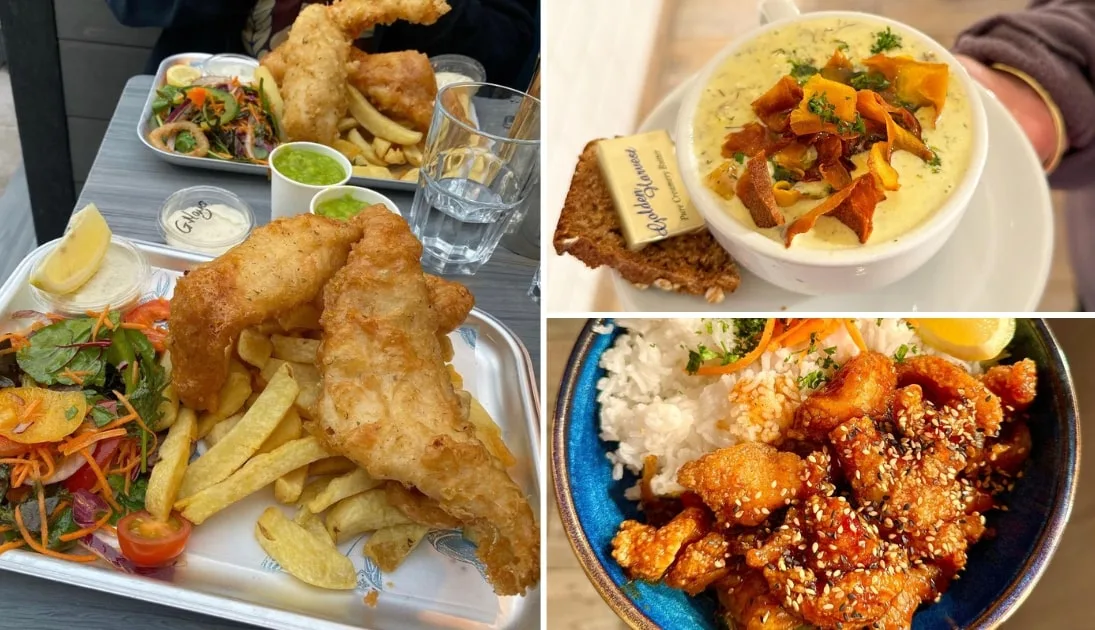
Photos via The Fish Box on FB
Drive around 13 minutes to get back to Dingle, where you’ll be enjoying dinner for the evening. Dingle is a great town for fresh delicious seafood, and you’ll be spoiled for choice when it comes to restaurants.
A few that we recommend are Fish Box (check out their hake burger and fish tacos), The Chart House (a Michelin Guide restaurant serving Irish cuisine), and James Long Gastro Pub (a traditional pub serving local favourites, pizzas, and light bites).
Stop 18: Killarney for the night

Photos via The Laurels on FB
Drive the hour or so back to Killarney and get an early night after your adventure-packed day.
Our pub recommendations
There’s some mighty old school pubs in Killarney, too. For post-dinner drinks, head to JM Reidy’s, the Laurels Pub, or O’Connors.
They all have a traditional pub feel and are a great choice for a pint. JM Reidy’s has a lovely courtyard which is great in the summer, and O’Connors is perfect if you feel like cocktails.
If you want to hear some live music, JM Reidy’s and O’Connors often have live music sessions.
Day 10: A Chunk of West Cork

Photos via Shutterstock
Day 10 of your 12 days in Ireland itinerary is going to give you a taste of West Cork!
This wonderful corner of Ireland is considered to be one of the last parts of “old Ireland”, with beautiful landscapes, quaint villages, and heaps of history.
Grab something to eat before you set off, either at your accommodation or the restaurants we recommended earlier.
Now, you can either stay in Cork City or Kinsale for the final stretch of this road trip. We’d recommend the city, but pick whatever tickles your fancy!
Recommended accommodation in Cork City
- Budget: Sheilas Tourist Hostel (no-fuss hostel near the train station) + Redclyffe Guesthouse (nice and central with great reviews)
- Mid-range: The Metropole (central with superb reviews) and Hotel Isaacs (in the Victorian Quarter – top-notch rooms and reviews)
- Luxury: Imperial Hotel (stunning and very central hotel) and Hayfield Manor (beautiful, boutique, city centre 5-star)
Stop 1: Glengarriff via the Caha Pass

Photos via Shutterstock
Drive the one hour and 17 minutes to Glengarriff via the Caha Pass. The Caha Pass is a popular driving route with incredible views of Bantry Bay and Glengarriff Nature Reserve.
The mountain pass is at an elevation of 1049ft, and at the summit, you’ll drive through the Caha Pass Tunnel (A.K.A Turner’s Rock Tunnel). A tunnel that was carved out of the mountain in 1842 entirely by hand!
Once you reach Glengarriff, hop out of the car to stretch your legs and if you feel up to it, walk to the Blue Pool. The Blue Pool is a short walk from the Main Street in the village.
Stop 2: Mizen Head

Photos via Shutterstock
From Glengarriff, it’s around a one-hour drive to Mizen Head. Mizen Head is absolutely spectacular and is thought to be the most south-westerly point of the country.
The peninsula’s rugged cliffs plunge down into the roaring Atlantic, with an impressive reinforced steel bridge connecting the mainland with Cloghane Island.
Aside from crossing the bridge, there’s lots to see and do at Mizen Head, like checking out the Mizen Head signal station, spotting whales and dolphins, and learning the peninsula’s history at the Mizen Head Visitor Centre. Most people spend at least one hour here.
Stop 3: Three Castle Head/Dunlough Fort
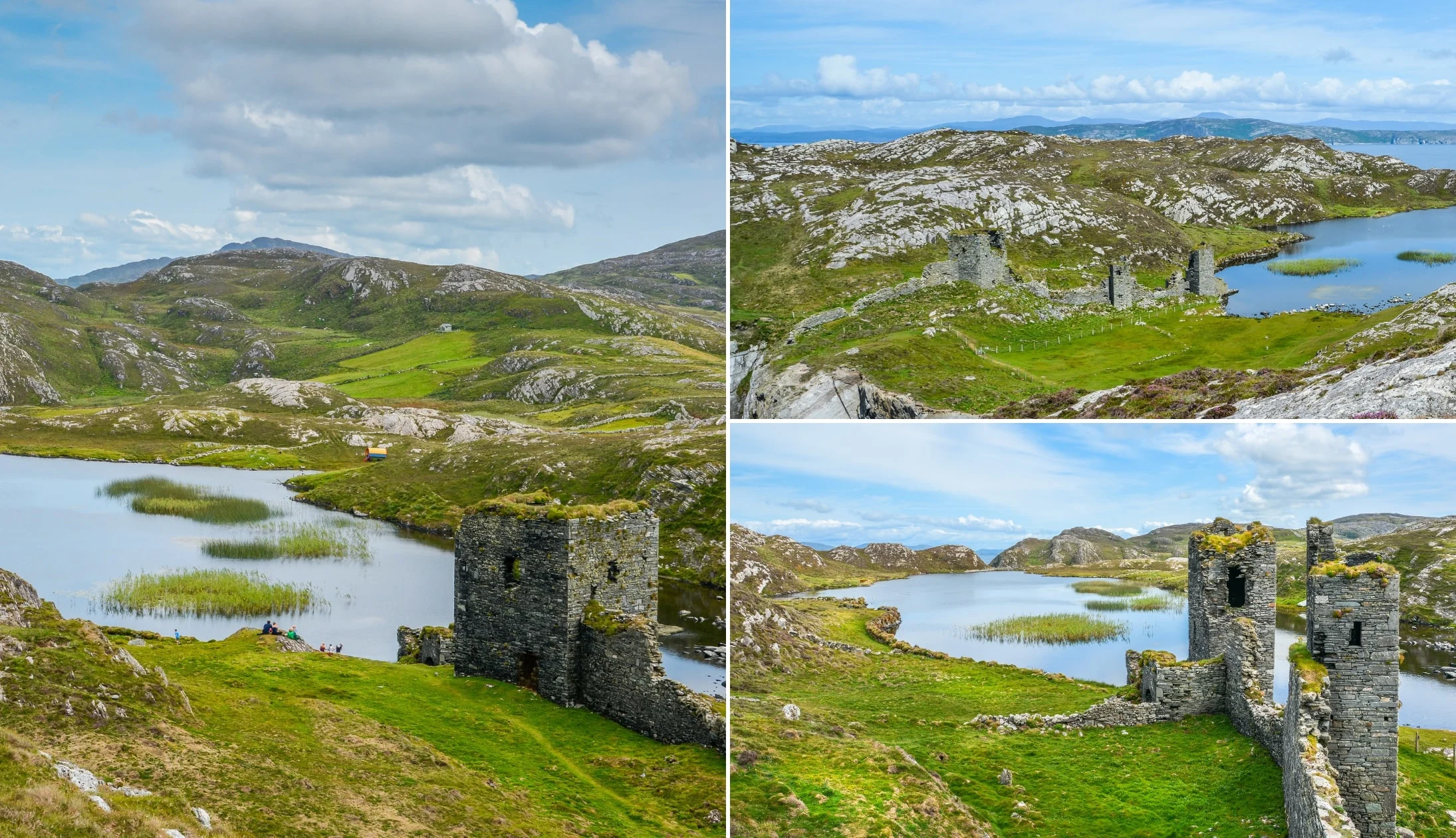
Photos via Shutterstock
Three Castle Head is just a short 14-minute drive from Mizen Head. Although it’s named “three castle”, it’s named after the three towers on Dunlough Castle/Fort.
The castle, which dates back to the 15th century, is believed to be the oldest Norman castle in the south of the country.
There’s a lovely 2.9km out-and-back walk, the Dunlough Castle Walk, which has some stunning views, although you’ll need to wear proper footwear as parts of the route can be boggy and muddy.
The castle and walk are on private land, but there’s a donation box at the beginning of the trail to help towards the maintenance of the car park and trail.
Stop 4: Lunch in Crookhaven
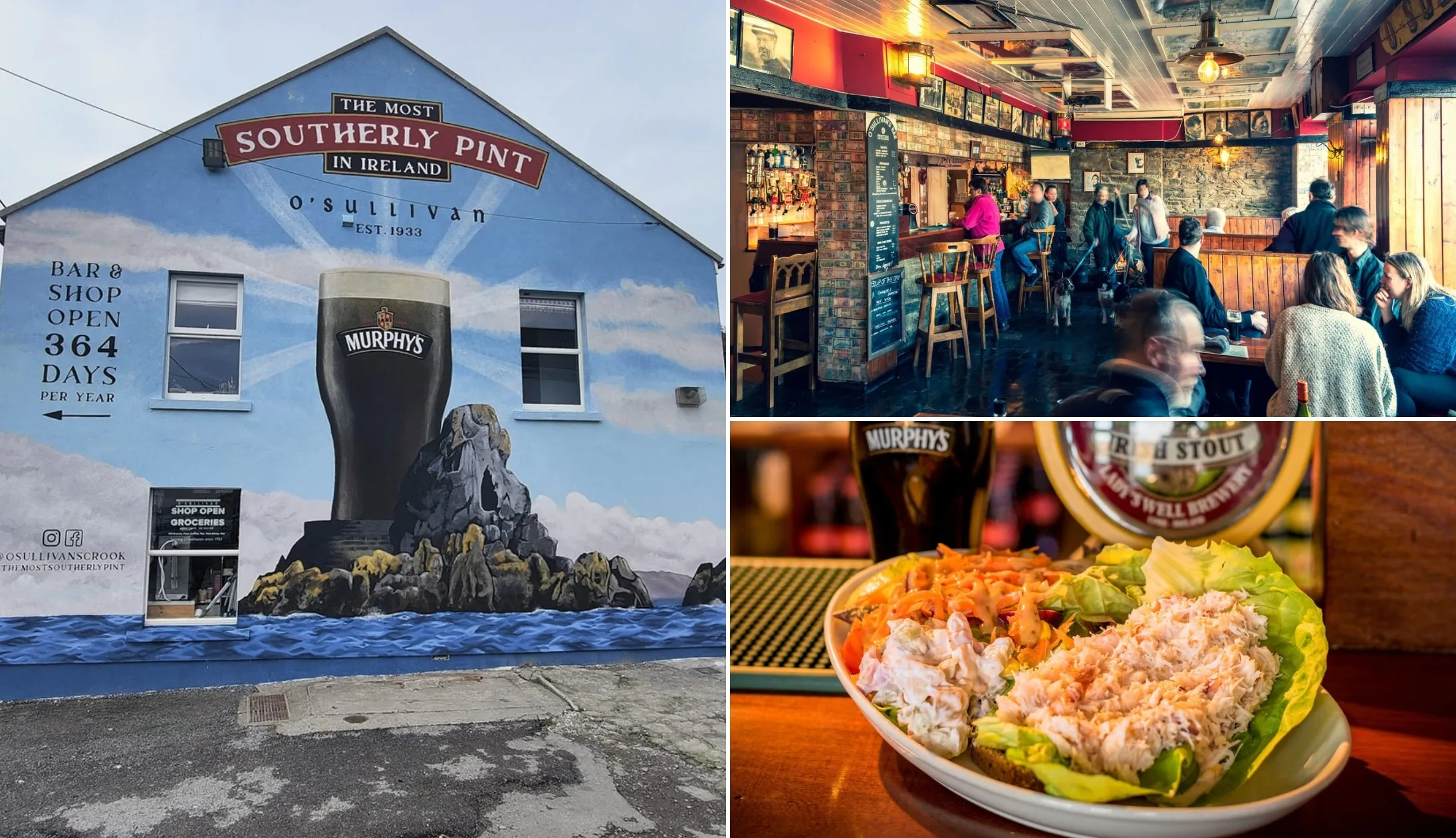
Photos via O’Sullivan’s on FB
It’s time for lunch, so drive the 20 minutes from Three Castle Head to Crookhaven, a lovely little fishing village. Our favourite places for a bite in Crookhaven are O’Sullivans and the Crookhaven Inn.
If you have a designated driver with you, try Murphy’s – it’s an Irish stout that’s widely sipped throughout Cork and few places pour it like O’Sullivans.
Stop 5: Bantry House and Gardens
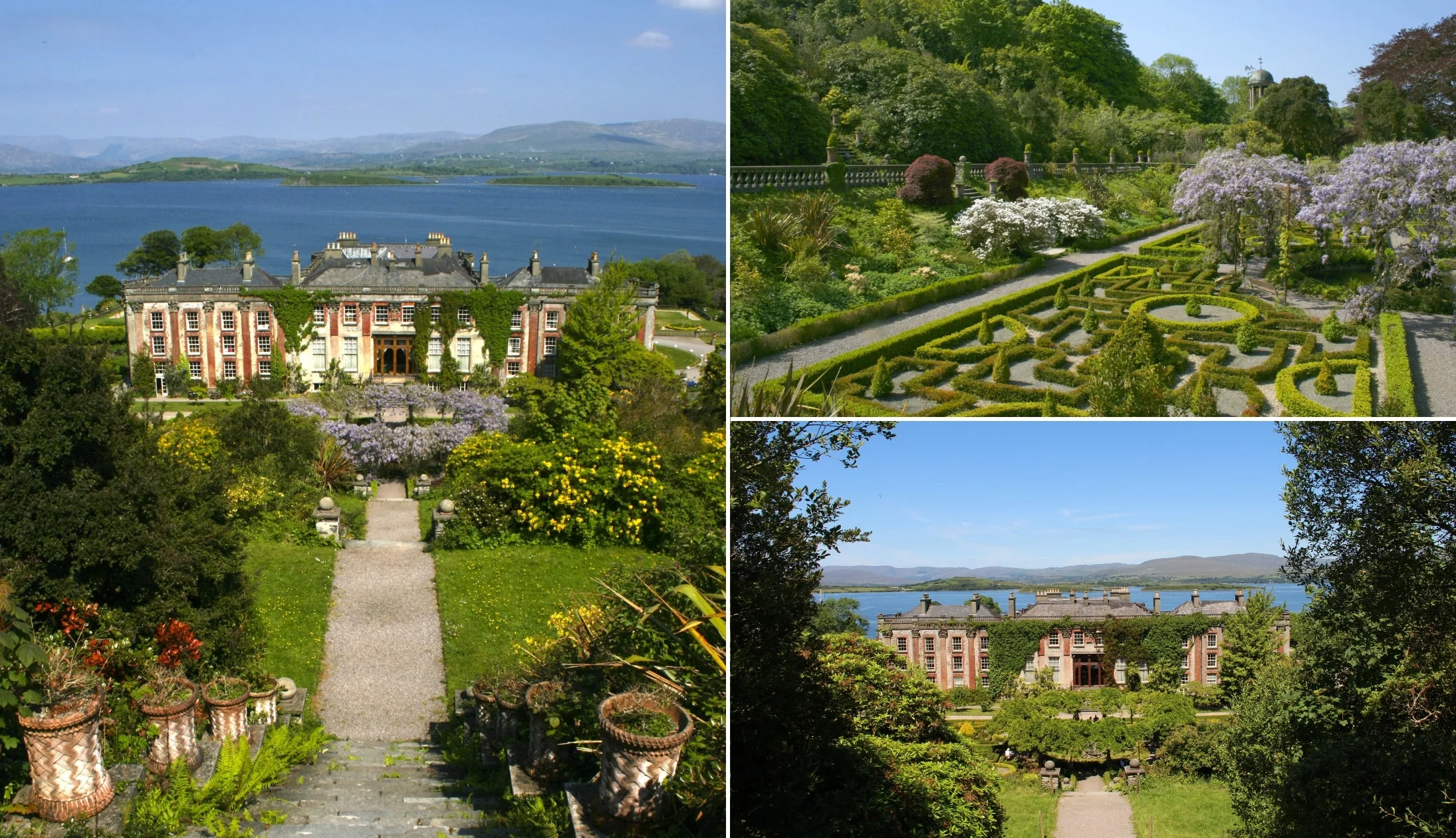
Photos via Shutterstock
Your next stop is Bantry House and Gardens, a 45-minute drive away. Bantry House and Gardens is an 18th-century stately home looking over Bantry Bay.
The house is surrounded by formal gardens and woodland and has some lovely walks.
There’s a little tearoom in the garden serving tea, coffee, and snacks. Grab yourself a coffee to drink as you walk around the gardens and admire the amazing views of the bay.
Stop 6: Gougane Barra

Photos via Shutterstock
Gougane Barra is a 34-minute drive from the Bantry Estate. It’s an incredibly scenic spot that is beautiful year-round, steeped in local folklore, and a pilgrimage site.
The 19th-century Gougane Barra Church is without a doubt one of the highlights of the area. Sitting on a small solitary island on the lake the church looks like something out of a movie.
Just behind the church, you’ll find the remains of St. Finbarr’s monastery which dates back to the 6th century.
Take a peaceful stroll around the lake, and if nature calls, head to what’s probably the nicest public toilet in Ireland!
Stop 7: Cork City for dinner, drinks and live music
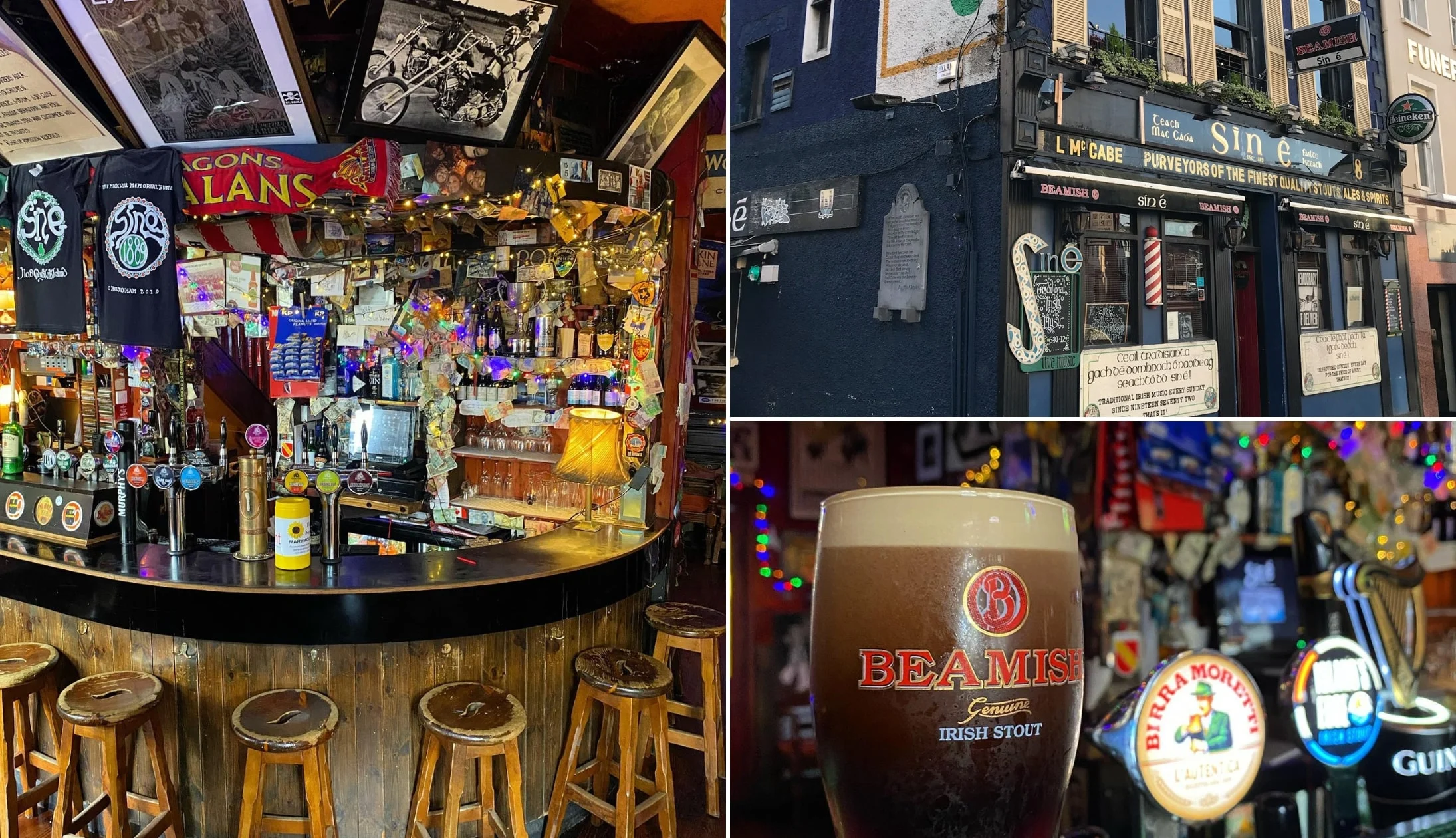
Photos via Sin E on FB
It’s just over one hour from Gougane Barra to Cork City. Once you arrive, check into your hotel, freshen up, then head out for a well-deserved dinner.
Our Cork food recommendations
There are heaps of brilliant restaurants in Cork City, but our personal favourites are Market Lane, Old Town Whiskey Bar at Bodega, and Cornstore.
Market Lane has a delicious-sounding menu featuring Irish favourites like pan-fried hake with braised leeks, smoked mussels, and baby potatoes.
Head to Old Town Whiskey Bar for burgers, salads, and traditional pub grub, and Cornstore for steaks and seafood.
Great Cork City pubs
There’s some glorious pubs in Cork, too. For drinks check out Mutton Lane (a quirky traditional pub), The Oval (a historic pub named after its unique oval ceiling), and Castle Inn (a traditional family-run pub with a great atmosphere).
There are some great spots for hearing some trad music in Cork, our top choices are Sin E and The Corner House.
Day 11: Kinsale

Photos via Shutterstock
It’s day 11 of your 12 days in Ireland itinerary, and you’ve got one last action-packed day before heading back to Dublin. Today, you’re stopping by Kinsale and Cobh, two gorgeous towns with heaps of history.
There’s a bit of walking today between attractions, so make sure to wear suitable footwear. Grab a spot of breakfast in Cork before you head out for the day.
We like Cafe Gusto and The Farmgate. The Farmgate is in the English Market and our go-to for a delicious cooked Irish breakfast.
Stop 1: Kinsale

Photos via Shutterstock
Kinsale is 30 minutes from Cork City. Park in the village centre, within the Main Town Car Park or on the nearby streets where there’s plenty of street-side parking.
We’re going to explore a good chunk of the town on foot this morning.
Stop 2: St. Multose Church

Photos via Shutterstock
From the Main Town Car Park, it’s a 5-minute stroll through Kinsale up to St. Multose Church, thought to be one of the oldest churches belonging to the Church of Ireland!
It’s a cruciform church with a crypt that dates back to 1190, although the entire church is built on a 6th-century ecclesiastical settlement.
In the 1750s, the church underwent major additions, however, the church’s large bell tower is a part of the original Norman structure.
The church’s graveyard contains 16th-19th-century monuments and mausoleums, as well as the graves of unidentified victims of the RMS Lusitania sinking.
Stop 3: Cosy Cafe and the Scilly Walk

Photos via Shutterstock
If you’re ready for a mid-morning coffee, head into the Cosy Cafe across the street from St. Multose Church.
Head off to your next stop Charles Fort on foot via the Scilly Walk. The walk officially starts at The Spaniard and from there it’s around 40 minutes to Charles Fort. The route is well signposted, way-marked by green-ish brown signs with ‘Scilly Walking Tour’ on them.
The walk has lovely harbour views, and if you’re lucky you might spot some seals, herons, or even dolphins.
Stop 4: Charles Fort

Photos via Shutterstock
Charles Fort is the country’s largest military installation. The huge star-shaped building dates back to the late 17th century, and over the years, has seen some fearsome battles.
The fort survived a 13-day siege during the Williamite wars in 1690 and a battle during the Civil War in the 1920s. Make sure to head to the ramparts for the stunning view over Kinsale Harbour.
Stop 5: The Bulman for Lunch
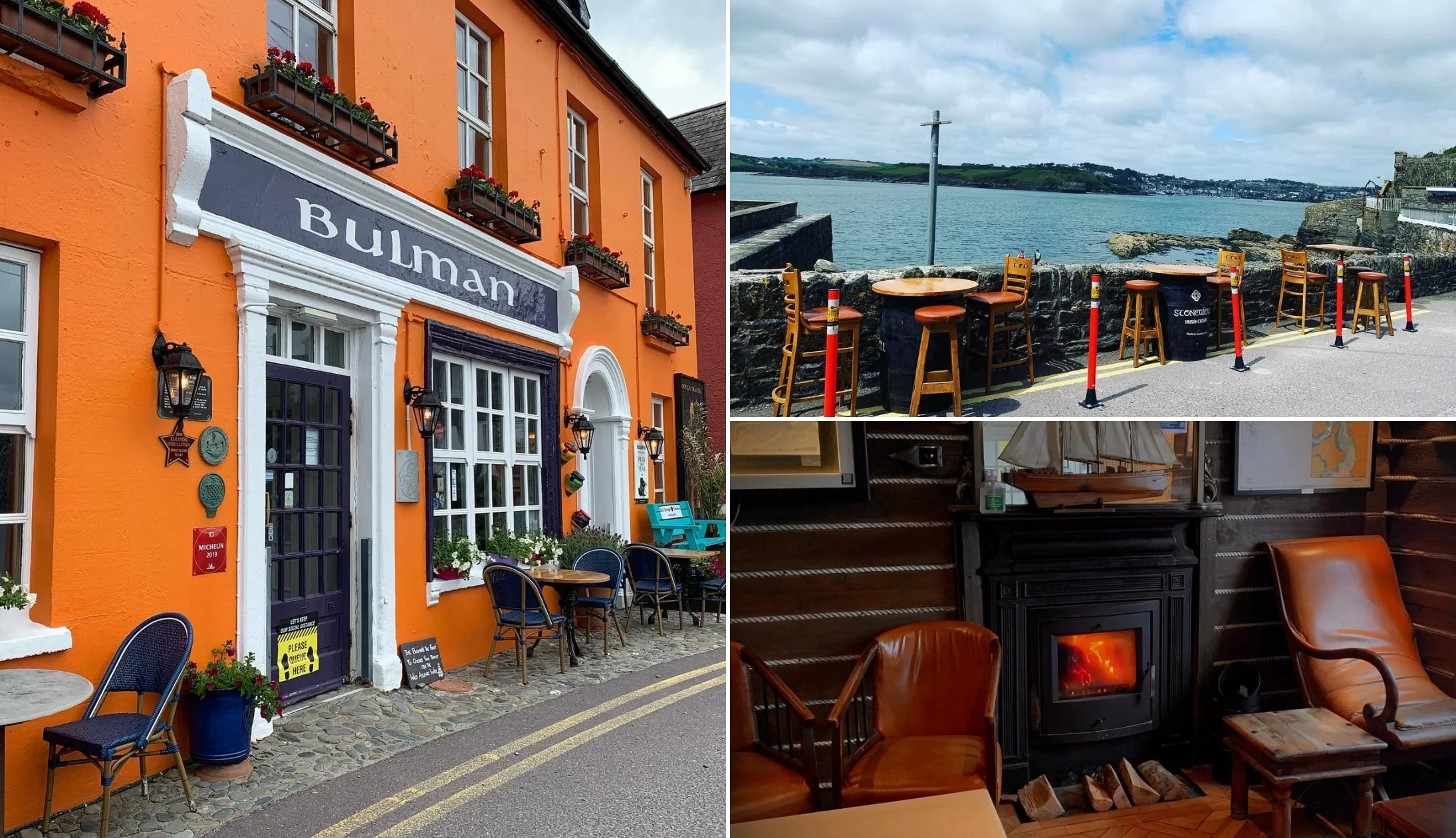
Photos via the Bullman on FB
You would have already passed the Bullman on your way to Charles Fort, but walk back the 5 minutes or so until you reach it.
They have a varied menu, with everything from Thai green chicken curry, to local BBQ pork ribs with wasabi slaw. Since it’s one of the last days of your trip, consider treating yourself to grilled lobster, a customer favourite!
The restaurant kitchen is open Tuesdays to Saturdays from 12:30pm. They are closed on Sundays and Mondays.
Stop 6: Back to Kinsale Town

Photos via Shutterstock
Make your way back to Kinsale along the Scilly Walk to reunite with the car. If you have time, take a little walk around the village, snap a picture at the Pirate Anne Bonny steps (a tribute to the infamous pirate from Cork), or visit Desmond Castle.
The castle has an extremely interesting history, dating back to the 1500s. Over the years it’s been a prison, a workhouse, and a venue for local Gaelic League meetings.
Stop 7: Choose a Cork City attraction

Photo left: The Irish Road Trip. Others: Shutterstock
Now you’ve got the car, drive 35 minutes to Elizabeth Fort. The star-shaped fort dates back to the 17th century and currently sits off Barrack Street in Cork City.
The fort was originally on high ground, but over the years, the city has built up around it, although it still has fantastic views over Cork.
Another good option is Cork City Gaol where you can head off on a guided or self-guided tour.
Stop 8: Drinks, dinner and live music

Photos via Sin E on FB
From Elizabeth Fort, it’s less than a one-minute walk from Tom Barry’s, an institution in the city and a great place for a pint and a pizza.
From Elizabeth Fort, you are less than a one-minute walk from Tom Barry’s, an institution in the city and a great place for a pint and pizza.
Here are some other recommendations for you to get stuck into:
Our Cork food recommendations
There are heaps of brilliant restaurants in Cork City, but our personal favourites are Market Lane, Old Town Whiskey Bar at Bodega, and Cornstore.
Market Lane has a delicious-sounding menu featuring Irish favourites like pan-fried hake with braised leeks, smoked mussels, and baby potatoes.
Head to Old Town Whiskey Bar for burgers, salads, and traditional pub grub, and Cornstore for steaks and seafood.
Great Cork City pubs
There’s some glorious pubs in Cork, too. For drinks check out Mutton Lane (a quirky traditional pub), The Oval (a historic pub named after its unique oval ceiling), and Castle Inn (a traditional family-run pub with a great atmosphere).
There are some great spots for hearing some trad music in Cork, our top choices are Sin E and The Corner House.
Day 12: Back To Dublin

Photos via Shutterstock
It’s the last day, and time to head back to Dublin. It’s a long-ish drive, so make sure to set out with enough time and to buy some snacks for the road.
You have to drive through two tolls so make sure to have a card that taps or cash! The drive usually takes about 3 hours so make sure to give yourself at least that much time, especially if you are trying to catch a flight.
Have plenty of time before your flight? Check out anything in the city that you weren’t able to see on days 1 and 2.
And that’s a wrap on this road trip
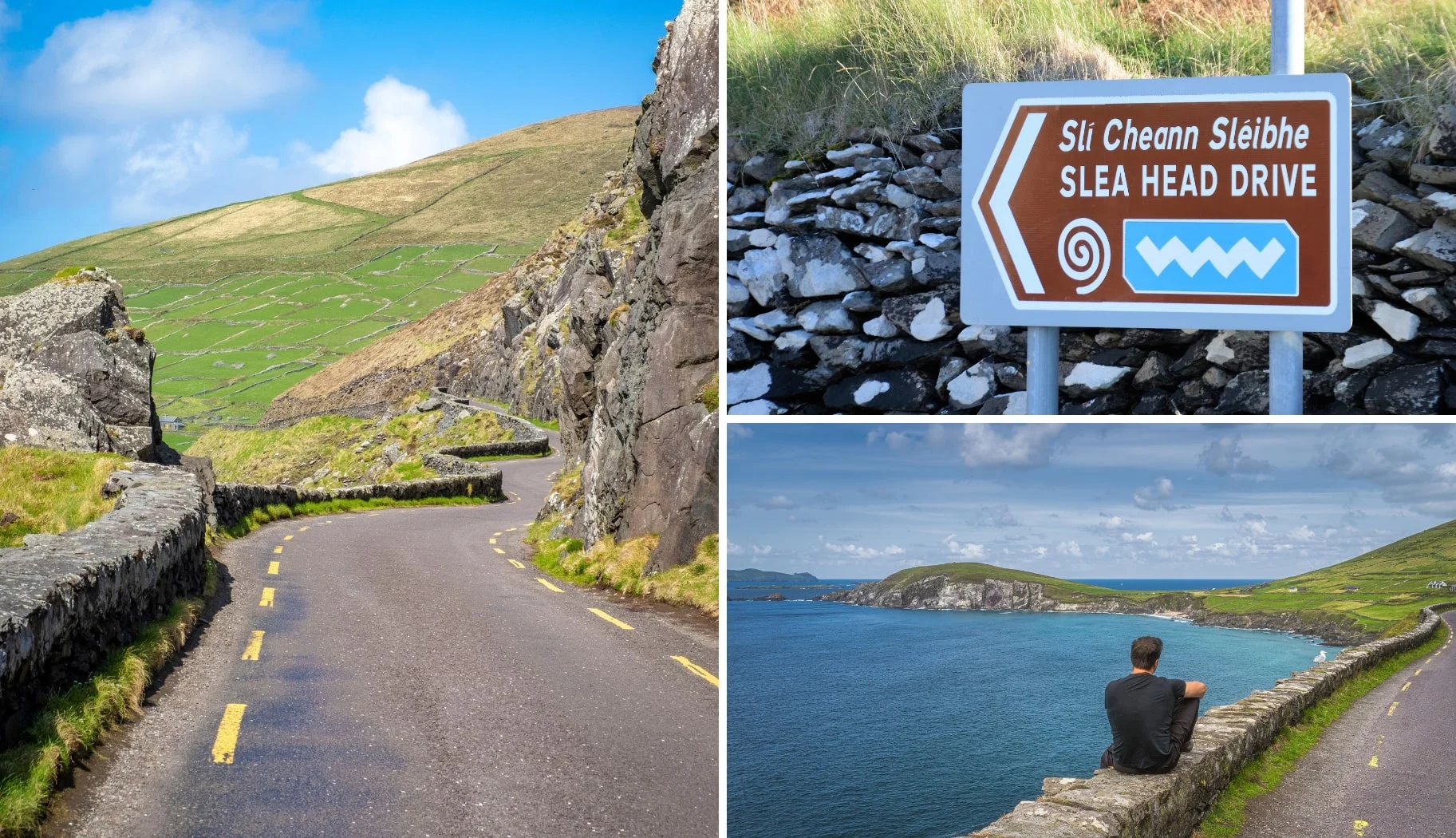
Photos via Shutterstock
We hope you found the above road trip guide useful. If you have any questions, ask in the comments below and we’ll do our best to help.
Or, if you’d like to browse our other Irish Road Trip itineraries, visit our Road Trip Hub – cheers!

